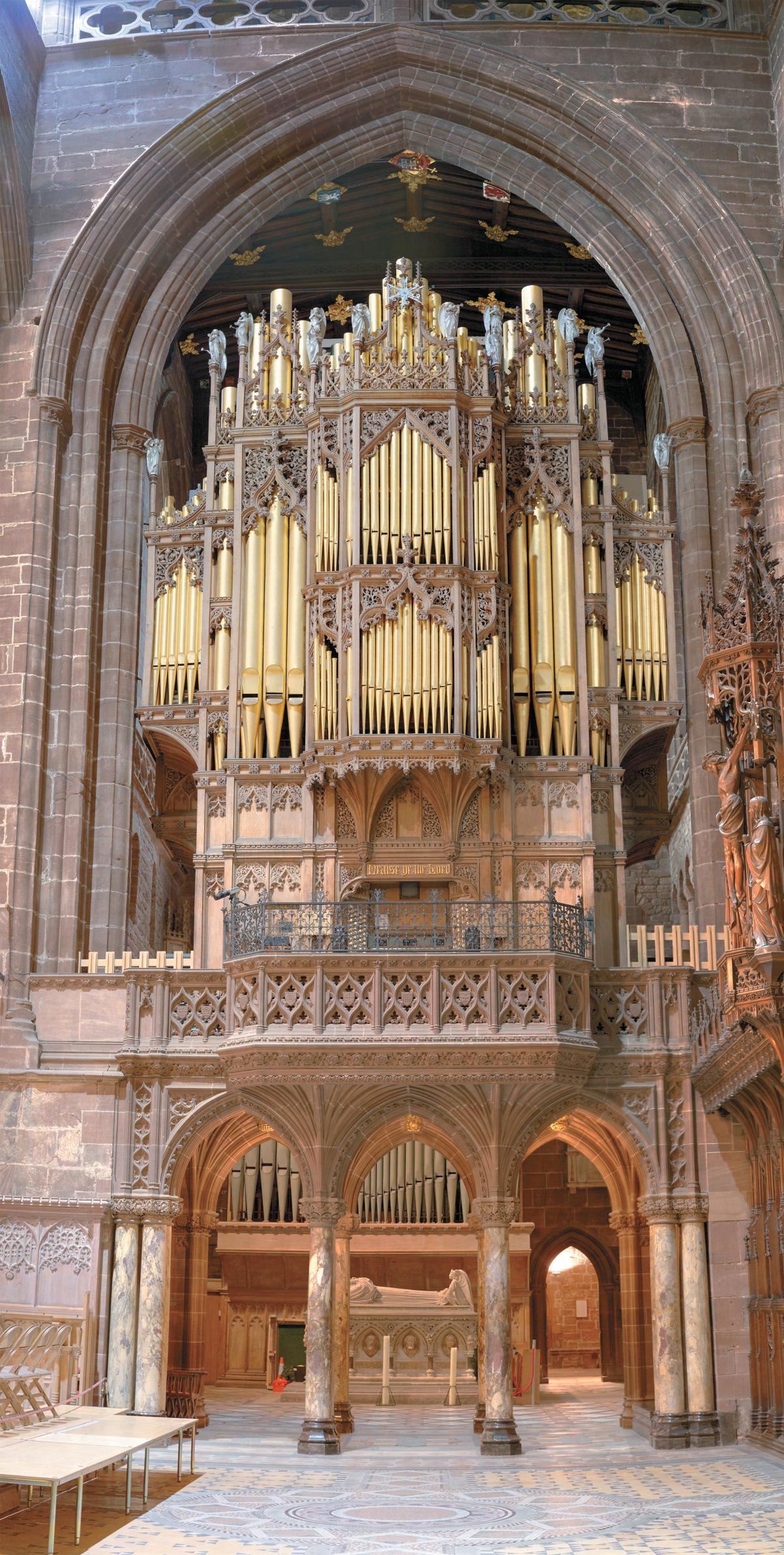Cathedral MUSIC Cathedral MUSIC



For many years organists throughout the land have aspired to playing a Makin organ. Now with the unsurpassed quality of the enhanced Westmorland Custom range, designed by organists for organists with no gimmicks, there has never been a better time to own one.

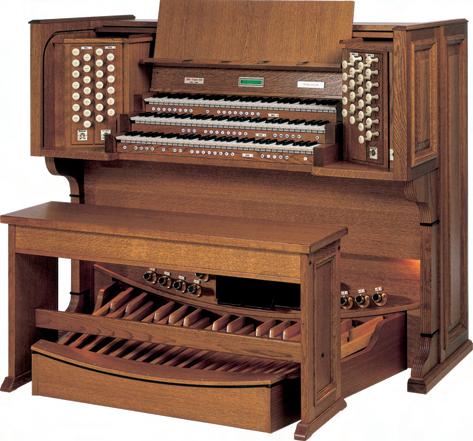
Built to your own specification, with drawstop or illuminated tab control, from small single manual up to large four manual instruments, they are for people who are serious about music, want the best in sound and build quality, excellence in after sales service and all at a highly competitive price.

As the UK’s leading manufacturer, Makin installs at least two organs each week at churches, schools, halls and homes throughout the British Isles. Visit our web site for an up to date list of recent installations, sample specifications and much, much more. Contact us today and take your first step to becoming a member of the Makin Family. You don’t buy a Makin Organ; you invest in one.
CATHEDRAL MUSIC is produced twice a year, in May and November
ISSN 1363-6960 MAY 2007
Editor
Andrew Palmer
21 Belle Vue Terrace
Ripon North Yorkshire
HG4 2QS
ajpalmer@lineone.net
Assistant Editor Roger Tucker
Editorial Advisers
David Flood & Matthew Owens
Production Manager
Graham Hermon
FCM e-mail FCM@netcomuk.co.uk
Website www.fcm.org.uk
The views expressed in articles are those of the contributor and do not necessarily represent any official policy of Friends of Cathedral Music. Likewise, advertisements are printed in good faith. Their inclusion does not imply endorsement by FCM. All communications regarding advertising should be addressed to:-
Roger Tucker
16 Rodenhurst Road
LONDON SW4 8AR
Tel:0208 674 4916
cathedralmusic@supanet.com
inQuire Editor
Richard Osmond
10 Hazel Grove, Badger Farm, Winchester, Hants SO22 4PQ
Tel/Fax:01962 850818
Friends of Cathedral Music
Membership Department
27 Old Gloucester Street
London WC1N 3XX
Tel: 0845 644 3721
International: (+44) 1727-856087
E-mail: info@fcm.org.uk
Every effort has been made to determine copyright on illustrations used. We apologise to any individuals we may have inadvertently missed. The Editor would be glad to correct any omissions.
Designed and produced by Mypec
The Old Pottery, Fulneck, Pudsey, Leeds, West Yorks LS28 8NT
Tel: 0113 255 6866 info@mypec.co.uk www.mypec.co.uk
there was no consultation with cathedrals about the change of day? Is it because in many cathedrals there is a sermon at Evensong on Sundays? I cannot understand why this has to happen; changing the day seemed acceptable but to alter the nature of the service right away alters the balance between the choral part of the service and the clergy. I will give Radio 3 the benefit of the doubt though. Perhaps the homilies at the moment are to coincide with Lent.
Communicating outside the precincts
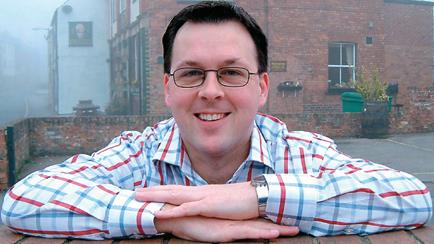
There wasn’t quite the outcry I was expecting when BBC Radio 3 swapped the broadcast day for Choral Evensong from Wednesday to Sunday. Knowing our members I was taken by surprise. That said, there have been a couple of letters (see page ***) bemoaning the move. I, and I’m sure many of you do not appreciate the new element of a homily in the middle of the service. Why has Stephen Shipley seen fit to ask cathedral chapters to include this in the broadcast? Is it a sweetener because
Elsewhere in this magazine Frank Field MP discusses the cost of running a cathedral music department and writes about the Government’s academy scheme, which could be the basis for establishing across the country a series of music schools open to boys and girls. As he states, the cathedral choir schools could become the driving force behind such a move. This is to be welcomed and is something that the choir schools should run with to help the continuation of the choral tradition in this country. One place that has started on its outreach initiatives is St Peter’s Collegiate Church, Wolverhampton and the imaginative ‘Singing Together’ initiative’ run jointly by Salisbury Cathedral School and its Cathedral. This is all commonsense and if it helps to fill the choir stalls then we should embrace these initiatives.
Running short of finance
A worrying trend is emerging: a
number of cathedral festivals are running short of cash. I understand that Chelmsford may not be able to run another festival in future. It was touch and go with this year’s St Albans International Organ Festival but fortunately it has been underwritten once more by John Stocker Holdings, which has sustained it in the past. These festivals play an important part in the life of a cathedral city; not only do they raise the profile of choirs, music and culture but have an economic impact too. For example The Three Choirs Festival is big business in each of the three cities in turn. There is a ninth day of charismatic gospel and modern church music adding one day to the 2007 Gloucester Three Choirs. This was viable purely because all the expensive staging and other facilities brought in would still be in position. Whether this is the right kind of music for this traditional Three Choirs Festival remains to be seen. Business sponsors a lot of the national big art exhibitions or single celebrations of composers, say at the Tate Britain or Barbican, and when it comes to sporting events there are massive amounts of money poured into them. Music and in particular the English choral tradition has played an enormous role in shaping our culture and psyche. I appeal to those of you who can influence corporate donations to do so. Where would we be without the Three Choirs, St Albans IOF, Southern Cathedrals Festivals or the Border Cathedrals Festival, if they were all to disappear? Inconsolable!
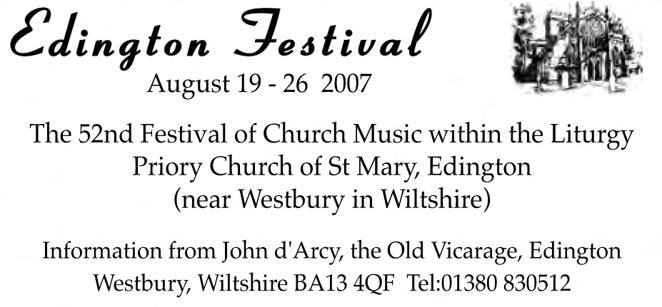
‘Music and in particular the English choral tradition has played an enormous role in shaping our culture and psyche. I appeal to those of you who can influence corporate donations to do so.’Rt Revd Gordon Mursell

Those who sing in cathedral choirs, as well as those who attend Choral Evensong, must sometimes ask themselves: why are we singing the Psalms? Why bother with this grumpy, partisan, obscure and preChristian collection of texts which often feel about as relevant to the 21st century as those medieval monuments to knights in armour that clutter up side aisles? Why can’t we write our own prayers and say or sing them instead?
Well (to answer the last question first) we can, of course, and do. But they’re no substitute for the Psalms. Let me suggest a few reasons why this is so.
First, and like Mount Everest, the Psalms are there. We didn’t choose them. They are part of what three thousand years of Jewish and Christian prayer and worship have entrusted to us. We could ignore them if we want, as we could ignore all of what is handed down to us. But (quite apart from the intrinsic riches they contain) there is a spiritual question here: if our worship consists only of things which we happen to choose and like, are we not simply imposing our own personal agendas on others? And if we insist on customising every act of worship and leaving out what we don’t like, how will we cope with those areas of our life where we can’t choose, and where we aren’t in control? There is a danger, in the age of New Labour, in forgetting that too much choice in life is just as disabling as too little. If we can make something constructive out of psalms we didn’t choose and don’t much care for, we may be better able to do the same when we find ourselves in situations where we have little or no choice. Furthermore, many (perhaps most) of the Psalms are themselves clearly written out of situations where the person praying was not in control. Taken as a whole, they are the mirroropposite of committee-produced collections of prayers or liturgies where everything awkward is carefully smoothed away. If the Psalms
‘There is a danger, in the age of New Labour, in forgetting that too much choice in life is just as disabling as too little.’
sometimes come across as tetchy or ill-tempered, it’s because they are the prayers of people who were struggling to come to terms with what is happening to them in the light of their faith in God. They can help us to do the same.
Which brings us to a second reason why they matter. The Psalms are full of question-marks. Most prayer collections or orders of service, from the Book of Common Prayer onwards, contain nothing but statements. The result is that all we feel able to bring to God is our certainties, not our questions. But what kind of God are we praying to if we can’t share our doubts and anxieties as well as our hopes and convictions?
The God of the psalms is a God deeply concerned about every aspect of our lives, a God who longs for us to be as honest and truthful in our praying as we possibly can be. All too often, Anglican worship leaves you with the impression that your doubts and secret failures, your sudden rages and hidden envies, have to be left at the door of the church. The psalms allow us to pray with them, and with our questions as well.
Let’s suppose it’s the fourth evening of the month and you are singing (or hearing someone else sing) the 22nd Psalm, which begins ‘my God, my God, look upon me; why hast thou forsaken me: and art so far from my health, and from the words of my complaint?’ What can you do with such a prayer? You may want to pray it for yourself: not everyone comes to choral evensong, or cathedral worship generally, feeling confident and cheerful, and it’s good to allow your own feelings, or sense of God’s absence, to find expression in the timeless words and music of the Psalms. But you may feel perfectly happy; in which case you can pray those words for the millions in our world who will, at that very moment, be feeling exactly like the psalmist did – people with terminal illness, or whose courageous attempts to live good lives seem to have pitched them into tragedy after tragedy. And if you can’t at once think of anyone else, then simply by singing or
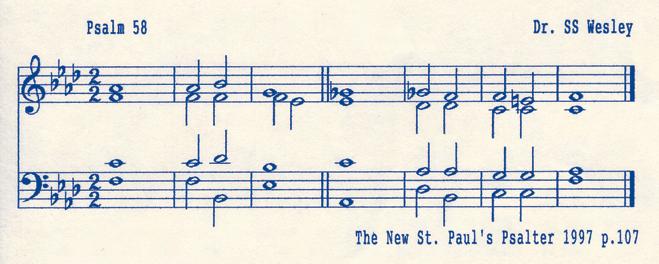
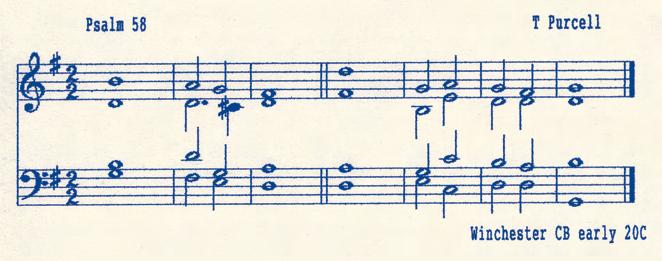


mouthing these words you are caught up into that cosmic community of Jews and Christians who have used them in gulags and amphitheatres and countless places in between –and supremely into the presence of the person who prayed these very words as he hung on the cross at Calvary. You never pray a psalm on your own.
This brings us to the third point, which is that the Psalms make possible a kind of imaginative intercession all too rare in modern worship. It’s easy – too easy – to pray, in cathedrals or anywhere else, for the starving, the marginalised, the vulnerable, the oppressed, and the poor and then to move hastily on to the more congenial terrain of the diocese and the organ appeal; and just occasionally one might be forgiven for wondering whether the person leading such prayers has ever actually met someone who is starving, marginalised, vulnerable, and so on. There can be just a hint of a de haut en bas loftiness in Anglican prayer, which is utterly alien to the Bible. There, prayer is vigorous exercise, hard work – notice (to take just one of many examples) the reference in the Letter to the Colossians to someone called Epaphras, who is described as ‘always wrestling in his prayers on your behalf, so that you may stand mature and fully assured in everything that God wills’ (Col.4:12 NRSV). That’s the kind of prayer that will change our world.
And it’s exactly that kind of prayer which we find in the Psalms. You may not have come across Psalm 58, partly because in the Prayer Book it is prescribed for use on the 11th morning, so never features in choral evensong, partly because in the revised 1928 Prayer Book and 1980 Alternative Service Book it has prim little square brackets round it, as though to say ‘this simply won’t do in polite Anglican circles – leave well alone.’ Even in the new Common Worship lectionary, it never appears. True, when you read it through, you may well feel the sentiments are ferocious and not very Christian: will the
righteous really ‘wash his footsteps in the blood of the ungodly?’ But this is to miss the point. The terrible 58th Psalm is palpably the prayer of someone who has been brutalized by appalling injustice. It could be the prayer of a survivor of Auschwitz, or of a prison camp in North Korea. It could be the way you or I would pray if we were to find ourselves thrown into prison and tortured for something we didn’t do. Psalms such as this remind us that, in most cases, evil does not sanctify its victims: it degrades them. By praying these words, we are given an opportunity to take our intercessions to a far deeper level than the easy canter round the world’s trouble spots that is all we usually manage – to imagine how it must feel to be victims of evil, in Pyongyang or Baghdad or Chechnya, and to pray with them for God to heal our world.
This stress on imaginative intercession is important for other reasons too. The great medieval cathedrals and churches were, and for the most part still are, stocked with a vast cornucopia of images, in stained glass and stone and memorial brasses, many (probably most) being more secular than religious – images of war, like the knights in armour mentioned earlier; images of work, or of play, or of family life, of birth and death, of trees and castles and stars and lakes. All the world can be found here. It doesn’t always find a place in our worship. Despite the enormous improvements in recent years, our modern liturgies are still often overpoweringly churchy, preferring the abstract language of concept to the far more accessible language of image. Jesus used almost exclusively the language of image. When someone asked him what the kingdom of heaven was like, he didn’t answer in terms of an incoming eschatological power; he said ‘it’s a bit like that mustard seed over there, that grows up into a big tree’. I have never seen a mustard seed. But I can imagine what he’s talking about, because I have an imagination. And so have you.
Exactly the same thing is found in the Psalms. They are a collection of 150 anonymous prayer-poems, some attributed (with varying degrees of likelihood) to King David. They breathe the air, not of a committee or synod but of the world ‘out there’, in all its vivid and sometimes violent (but also beautiful) reality. When the psalmists struggle to express what they want to say, they draw on images – ‘he shall be like a tree planted by the water-side’, or ‘my days are consumed like smoke’, or ‘I am even as it were a sparrow that sitteth alone upon the housetop’, or ‘I am as glad of thy word as one that findeth great spoils’ Some of these images are immediately and completely accessible to us, others demand time and reflection if they are to achieve their full power. But the images themselves demand no special learning or religious decoding. They allow us to bring the world into the chancel or pew, and to pray for it with all the imaginative wonder of which we are capable.
It may be worth concluding by reflecting very briefly on the most famous psalm of all, the 23rd, appointed to be sung on the fourth evening of the month in the Prayer Book. It consists of only six verses, and if you look closely at them you will see that only two of them (verses 4 and 5) are actually prayer, in the sense of an address directed to God. The psalm begins and ends with a kind of theological reflection or testimony (‘The Lord is my shepherdÖ and I will dwell in the house of the Lord for ever’). Theology (talking about God) and prayer (talking to God) are inseparably linked. The same thing happens constantly in the Bible – prayer is not some special and specialist activity, hygienically separated from everyday life, but something rooted in the very heart of the secular
world, something we can turn to and step out of again whenever we feel like it. The God of the psalms is the God of all life, not just of a narrowly religious piece of it.
Notice something else. The imagery of the 23rd Psalm is entirely secular: green pasture, still waters, the valley of dark shadows, the shepherd’s rod and staff, the picnic table, the glass full of wine. Many of this psalm’s translators appear to have disapproved of this, and so have given it a more conventionally religious tone: St Augustine turned the ‘still waters’ into the ‘waters of baptism’; H.W.Baker, in his famous paraphrase ‘The King of Love my Shepherd is’, introduced ‘food celestial’ and ‘my ransomed soul’, neither of which appear in the original, and turned the glass of wine at a picnic into something much more churchy: ‘O what transport of delight from thy pure chalice floweth!’ The price paid for this is that both the earthiness and the sheer defiant boldness of the original is lost. For this is the prayer of someone who lives and works in the countryside, someone who is exposed to terrible dangers, and yet who pictures God both as a caring shepherd and as the genial host at a picnic who prepares a table and charges our glasses precisely in the midst of our greatest stresses and worries (‘against them that trouble me’). In the presence of this God, there is nothing I need fear; and the psalm ends by defying our proneness to apathy and selfpity and encouraging us to look forward to the day when we shall dwell in the house of the Lord for ever. Now that really is a faith worth living and dying for.
Gordon Mursell is the Bishop of Stafford
Main features include: Familiar words set to new and different alternative tunes. New musical arrangements. Tunes and words in new combinations which put both into fresh perspective.
Twentieth century words and music included for the first time.
Five editions available.
Full Music Edition
978-1-85311-264-5
216 x 135mm · hardback
1400pp · Ref. No 49
Usual Price £23.00
With 25% Grant*£17.25
Melody Edition
978-1-85311-265-2
171 x 114mm · hardback
1056pp · Ref. No 47
Usual Price £13.50
With 25% Grant*£10.13
Words (cased)
978-1-85311-266-9
165 x 110mm ·hardback
736pp · Ref. No 45
Usual Price£9.50
With 25% Grant*£7.13
Words (paperback)
978-1-85311-267-6
165 x 110mm · paperback
736pp · Ref. No 43
Usual Price£5.00
With 25% Grant*£3.75
Large Print Words
978-1-85311-467-0
171 x 114mm · hardback
544pp · Ref. No 41
Usual Price£19.00
With 25% Grant*£14.25
All editions are in hardback blue cloth, except for the words paperback which has an attractive full colour cover.

To order/request a grant application form: Tel: 01603 612914
Fax: 01603 624483 SCM-Canterbury Press Ltd, St Mary’s Works, St Mary’s Plain, Norwich NR3 3BH E-mail: orders@scm-canterburypress.co.uk
*To qualify for a GRANT OF 25% an order for a minimum of 20 COPIES, in any combination, of Common Praise hymn books, together with a completed grant application form (available on request from SCM-Canterbury Press Ltd) must be received.CMCP07

There was a time when Dieterich Buxtehude was almost always referred to as ‘an important precursor of J.S. Bach’. That he certainly was, and the young Bach learned much from the older master when he travelled from Arnstadt to Lübeck in 1705 to hear him play the impressive organ in the great Marienkirche. But it is now recognised that Buxtehude’s ever-inventive and compelling music should be heard, played, sung and studied in its own terms, and not simply as some sort of preparation for Bach. This tercentenary year of Buxtehude’s death will offer many opportunities to hear his music: articles are being written, new recordings made and many concerts planned throughout the country. Buxtehude’s organ music has long been familiar and widely-played, but we must remember that he composed also a quantity of vocal and instrumental music. Before we have a closer look at some of this, let us investigate what we know of the man and his life.
Early details of Buxtehude’s life, including the place of his birth, are sketchy; but a contemporary document tells us that he ‘recognised Denmark as his native country’, and he spent part of his early life in Helsingborg where his father Johannes was organist of the St Maria Kyrka. He moved to Lübeck in April 1668, at the age of 31, to take up the prestigious post of organist of the St Mary’s Church, in succession to Franz Tunder. Shortly after, he

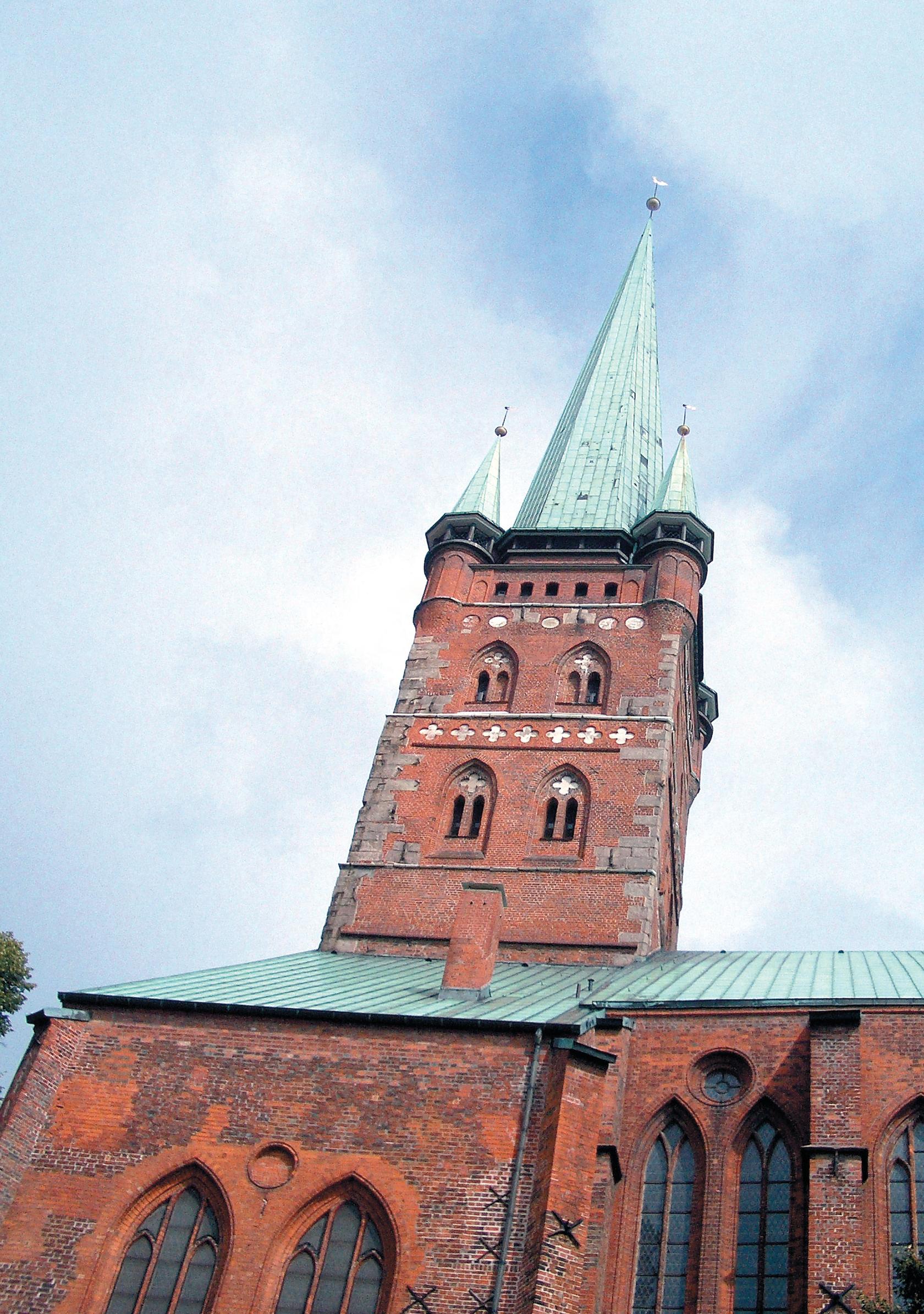
married Tunder’s daughter, which may well have been a condition of the employment. (Four years before Buxtehude’s death, in 1703, the 21-year-old Johann Mattheson and the 18year-old Handel travelled together to Lübeck passing the time in their coach by composing double fugues! with a view to succeeding Buxtehude. He was still in post at that time, but was seeking a successor, not to mention husbands for his three unmarried daughters. However, Mattheson and Handel turned on their heels pretty quickly when they discovered that marriage “for which neither of us expressed the slightest inclination” was part of the deal) Buxtehude in fact remained in post until his death in 1707, having served the church for nearly 40 years.
His duties included playing the organ for the main Sunday morning and afternoon services; playing on feast days, of which the Lutherans had retained several from the Roman church; and for Saturday Vespers. Organ music would also have been required for weddings and funerals, which no doubt then, as now, provided some welcome extra income. Buxtehude was actually very well paid, however, having an annual salary of 709 Lübeck marks. He received further payment for his duties as Werkmeister, that is, church administrator and treasurer; and he seems to have been responsible for routine maintenance of the organs. In addition to all this, he received an allowance of beef, wine and clothing. His total salary was much larger than that of any of his fellow musicians.
A Kantor directed the choir, but it is not entirely clear how the various duties were assigned. The musicians in St Mary’s, of whom there were 14 on the regular payroll, were distributed in various balconies in the church, and direction of the various musical parts of the service must have been a shared responsibility as distances were quite considerable. There was also a certain amount of moving around in the course of the service; it would appear that the musicians used the space imaginatively. Buxtehude would certainly have spent much of the service at the main west-end organ. It is documented that his improvised introductions to the congregational chorales were very elaborate no mundane British play-over here. His extant discant organ chorales (that is, those with the melody elaborated in the soprano voice to be played on a solo stopcombination) presumably give some idea of what his improvised preludes were like. We must remember that, in earlier Lutheran practice, the organ alternated with the singing of the chorale, rather than accompanying it. However, in the course of the 17th century this was gradually changing,
and Buxtehude probably accompanied the singing at least some of the time. Solo organ music preludes, interludes and postludes would also have been required at certain points in the service, most of it improvised. Buxtehude’s free (that is, not chorale-based) praeludia, and his lengthy chorale fantasias, may well have been played at the close of the service. Works like the two Magnificat setting presumably had their place in the Vespers service.
In addition to congregational singing and organ music, there was an important place for choral works such as psalmsettings, solo arias, motets and cantatas, mostly with German texts but sometimes with Latin. These were performed with instruments and organ continuo; there was a small organ in the choir loft for this purpose, which someone else would have played. Although Buxtehude’s post as organist did not require him to write vocal works (unlike Bach’s position as Kantor at Leipzig which required him to provide weekly cantatas) he did in fact leave quite a corpus of sacred vocal music which was no doubt performed at St Mary’s. There was also a place for instrumental ensemble music, played during the distribution of the communion. (A contemporary chronicler tells us that the musicians generally left the church during the hour-long sermon, partly because it was so cold, and the whole service lasted three hours. We must not assume, however, that the entire congregation was present from beginning to end. Recent scholarship has shown that, in Bach’s day at Leipzig, worshippers came and went throughout the three-hour period, although most were present for the sermon. The practice was probably similar in Buxtehude’s day).
Buxtehude was renowned for the series of concerts he promoted known as the Abendmusiken, consisting of vocal and instrumental music, and forming what seems to have been regarded as a sort of sacred if un-acted opera. Concerts of sacred music are very familiar to us, but they were virtually unknown in Buxtehude’s day and aroused much interest and admiration. He was in fact building on a tradition established by his predecessor Tunder, but his concerts were more ambitious. They took place specifically on the last two Sundays of Trinity and on Advent 2, 3 and 4; they began at 4pm and lasted about an hour. Buxtehude set the chosen biblical texts to music, had the parts copied (without ‘Sibelius’ or photocopiers), fixed the singers and instrumentalists, raised funds, then rehearsed and directed the whole enterprise. Although the concerts were much praised, not everyone was in total sympathy with Buxtehude’s efforts. Writing some years after Buxtehude’s death, Kantor Caspar Ruetz complained that it was a bit much to have to go back into a freezing church in December, having already spent three hours there earlier in the day. And he was shocked by “the atrocious noise of the mischievous young people and the unruly running and romping about behind the choir”, not to mention “the sins and wickedness that take place under cover of darkness and poor light”. The Abendmusiken continued in the form devised by Buxtehude until 1810. They still continue today, although now in the summer months.1
It is hoped that this tercentenary year will make familiar some of Buxtehude’s vocal works; an increasing number are available in modern editions and many pieces are of modest length and for small forces, making them appropriate for liturgical (or concert) performance today. An excellent example is the delightful Jubilate Domino, for solo voice and continuo. A more ambitious work, already quite well-known and available on CD, is Membra Jesu Nostri, a cycle of seven
‘
This tercentenary year of Buxtehude’s death will offer many opportunities to hear his music: articles are being written, new recordings made and many concerts planned throughout the country.’
short, meditative cantatas which were possibly intended as a Holy Week or Good Friday devotion. This is fervent, introspective, devotional music, pietist in tone, and illustrating a side of Buxtehude’s musical genius very different from the confident flamboyance of some of the organ works.
The enterprising Dutch musician, Ton Koopman, is of course well-known for his electrifying performances of Buxtehude’s solo organ music. Having now completed his complete Bach cantata recordings, Koopman has just launched a new project which aims to record Buxtehude’s entire output organ music, harpsichord suites (already released), instrumental works and all the vocal music. This will take a few years to realise, but will doubtless introduce us to much more of this marvellous music.2
Most of us are familiar with a range of Buxtehude’s organ works, which encompass both chorale-based and ‘free’ works. The chorale-based works include the discant chorales mentioned above, as well as large-scale chorale fantasias and other such works. The free works include quite a lot of shorter contrapuntal pieces canzonas, fugues and so on as well as the three celebrated ground-bass pieces, the two Ciaconnas in C minor and E minor, and the Passacaglia in D minor. Some of these pieces were possibly intended as teaching material, rather than for liturgical use. The main body of free works consist of the praeludia (some entitled ‘toccata’). One should not refer to these as ‘preludes and fugues’ as very few are in two clear-cut movements; most are one-movement works, alternating rhetorical writing with stricter fugal sections. Many are characterised by the so-called stylus phantasticus, a welldocumented style of playing and composing that is calculated to surprise, astound and delight. In such music we find much variety in tempo, texture, gesture and (presumably) registration. It is a characteristic of much late 17th-century German music, and can be found in the instrumental works of composers such as Biber, Schmelzer and others, as well as in the organ music of Buxtehude’s contemporaries and pupils, such as Vincent Lübeck (who lived and worked not in Lübeck but in Hamburg), Nikolaus Bruhns, Georg Leyding and others. We are lucky that so much of Buxtehude’s organ music was written down, generally in organ tablature, by his pupils; it is salutory to be reminded that not a note of these works has come down to us in the composer’s own autograph. A number of his north German contemporaries are now known by only a few pieces, such as the long-lived Adam Reinken from Hamburg (to whom the young Bach also played). Had it not been for his pupils’ efforts we might have only two or three organ pieces by Buxtehude. (The
same, to a lesser extent, can be said of Bach).
Finally, what of the organs which Buxtehude played? The large west-end organ was one of the largest and most comprehensive instruments known anywhere at that time, reflecting the wealth and prosperity of Lübeck. The instrument had been rebuilt and expanded at various times since 1516 enlarging and remodelling organs to suit changing tastes was not then frowned upon as it now is in some quarters! and by Buxtehude’s day it was a large instrument of three manuals and pedal, the latter comprising 15 stops including two 32’ ranks. There was also a smaller, yet still substantial organ in a side chapel, the ‘Totentanz Organ’. It was so called because of the famous painting, The Dance of Death, which adorned the chapel; this was painted in 1463, following a serious epidemic of plague. Although the large organ was much changed in the 19th century, the Totentanz organ remained virtually unchanged until the fateful night of 28-29 March 1942 when the whole church, and everything in it, was destroyed in the dreadful bombing of Lübeck by the Allied forces. During the period 1947-1959 the church was rebuilt; a large five-manual organ was installed in 1968 at the west end of the church by Kemper and Son, and in 1986 Führer built a new Totentanz organ. Neither organ, however, sets out to be a historic copy of the instruments from Buxtehude’s day.
There is no doubt that the 20-year-old Bach’s visit to Lübeck in the autumn of 1705 was pivotal in his musical development. His main purpose was to hear Buxtehude play the organ, and this must indeed have been a thrilling experience; but he also experienced the Abenmusiken of that year, and probably participated in the performances, perhaps as a violinist. Bach had permission from the church authorities at Arnstadt, where he was then organist, to make this 280-mile trip, but he had been given leave of absence for a month and got into trouble when he eventually returned for having stayed away “about four times as long”. We can sympathise with the church authorities, of course the young Bach was very headstrong but who can blame him for wanting to make the most of his visit, given the musical experiences which Buxtehude could provide?3
JOHN KITCHEN is a Senior Lecturer in Music and University Organist in the University of Edinburgh. He also directs the Edinburgh University Singers, is organist of Old Saint Paul’s Episcopal Church and Edinburgh City Organist. He gives many solo recitals both in the UK and further afield, and is much in demand as a continuo player, accompanist, lecturer, writer and reviewer.
1A number of websites provide information about St Mary’s Lübeck, both its history, and what is happening at the present time. Simply google ‘St Mary’s Church, Lübeck’.
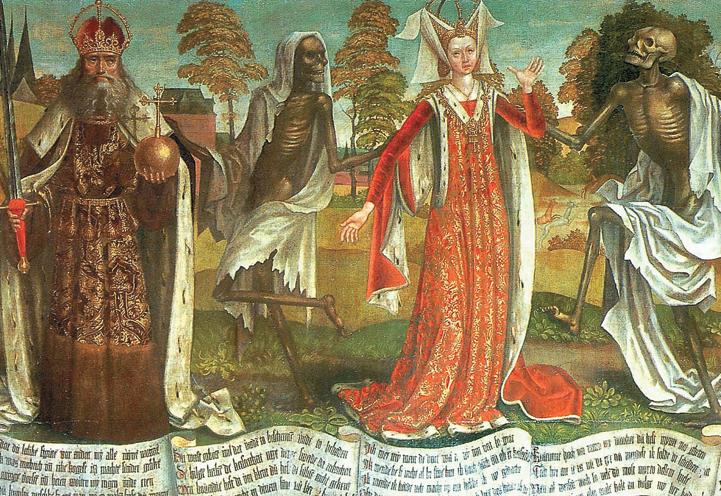

2 The CDs are being released on the Antoine Marchand label, published by Challenge Records: website www.challenge.records.com.
3For further reading, see Kerala Snyder Dieterich Buxtehude, Organist in Lübeck (Schirmer Books, 1987). This is a magisterial account of the composer’s life and work (to which present article is indebted). It contains also a number of fascinating pictures and photographs, including some of the Marienkirche before its destruction. Unfortunately, I believe that the book is out of print, but it should be available from good libraries.
Patrick Dunachie from Ludlow and Max Foster from near Ledbury are sharing the office of head chorister at Hereford Cathedral after they were formally installed by the Dean during the Cathedral. It is the first time for a number of years, if not the first time ever, that this senior choir post has been shared between two boys. ‘Patrick and Max joined the choir around the same time’, said organist and director of music, Geraint Bowen. ‘They have given us exceptional service both in and out of the choir stalls and have developed a variety of skills during their time as choristers over the past five years’.
‘Normally we only have one head chorister but it would have been impossible to choose one of these two and not the other. They are also great friends and one of the tremendously important skills that boys also learn while singing with us is that of teamwork and therefore it seemed even more important to acknowledge how Patrick and Max have supported each other over the years’.
Dr Alan Spedding MBE celebrated 40 years as organist of Beverley Minster in January. We at FCM send him our heartiest congratulations in his anniversary. Alan studied organ and ‘cello at the Royal College of Music. He was appointed Organist and Master of the Choristers at Beverley Minster in 1967, after three years as organist of the Parish Church, Kingston upon Thames. He was musical director of the Hull Choral Union for twenty six years and has conducted the East Riding County Choir since 1969. He was music master at Beverley Grammar School for eighteen years and has taught part-time in the University of Hull where he is Organ Curator. The university made him an honorary Doctor of Music in 1994. He has also served as an examining member of the council of the Royal College of Organists and as Associate Editor of Organists’ Review. He was awarded the MBE in the Queen’s Birthday Honours in 2003 and was made an Associate of the Royal School of Church Music in May.
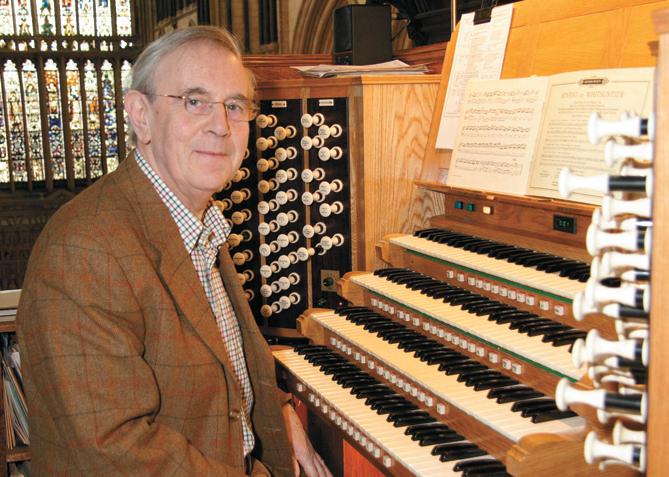

Main features include:
500 of the best hymns from English Hymnal, English Praise and from other sources.
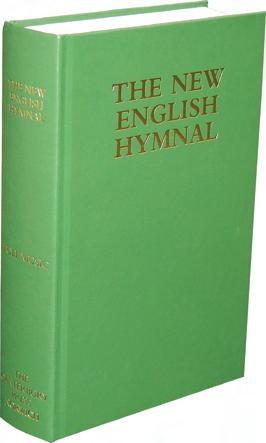
Further 42hymns covering Advent, Holy Week and major feasts. Proper hymns, including new ones, for all red-letter Saints Days. Office hymns for the Christian year. Enlarged Eucharistic Section.

Selection of Responsorial psalms. Current printings include useful indexes together with an Appendix of Hymns suggested for Sundays and some Holy Days according to the Common Worship Lectionary. Available in the 4 editions.
Full Music and Words
978-0-90754-751-8
210 x 140mm
hardback· 1312pp
Ref. No 54
Usual Price£22.00
25% Grant* £16.50
Melody and Words
978-1-85311-097-9
171 x 114mm
hardback · 920pp
Ref. No 52
Usual Price £11.50
25% Grant* £8.62
Words Only
978-0-90754-749-5
157 x 105mm
hardback · 616pp
Ref. No 50
Usual Price £9.50
25% Grant* £7.12
To order/request a grant application form: Tel: 01603 612914
Large Print Words Only
978-1-85311-002-3
240 x 160mm
hardback · 544pp
Ref. No 56
Usual Price £17.50
25% Grant* £13.13
Fax: 01603 624483 SCM-Canterbury Press Ltd, St Mary’s Works, St Mary’s Plain, Norwich NR3 3BH. E-mail: orders@scm-canterburypress.co.uk
*To qualify for a GRANT OF 25% an order for a minimum of 20 COPIES, in any combination, of New English Hymnal hymn books, together with a completed grant application form (available on request from SCM-Canterbury Press Ltd) must be received.CMNEH07


The word ‘Precentor’ is a combination of two Latin words, preces meaning prayers and cantor meaning singer. The Precentor is the singer of the prayers and that gives a clue to what a Precentor has done at Salisbury since 1091, when the second Bishop of Old Sarum, St Osmund, constituted the governance of an English secular cathedral on the French model with a Dean, Precentor, Chancellor and Treasurer.
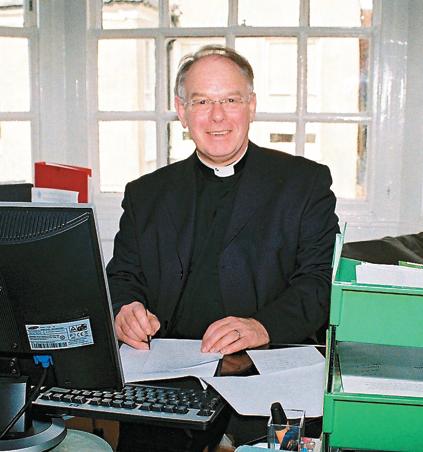
First of all the prayers. A priest’s life is framed by prayer and indeed sustained by it, as is the case with all Christians. And in a cathedral, Morning Worship with morning prayer and Eucharist, and Evensong usually sung by the Cathedral choir led by the Precentor, are the fixed points in the day which inform the rhythm of the cathedral’s life. There are other fixed points of course during the week, mainly to do with meetings (a department meeting for the Liturgy & Music Department; a staff meeting with the wider cathedral staff; a monthly meeting of the Cathedral Chapter, the governing body of the Cathedral; the Cathedral Council which meets twice a year and to whom the Chapter is accountable and various other monthly meetings which the Precentor at Salisbury at any rate chairs, the Music Policy Committee and the Worship Committee. But all these meetings take place within the daily fixed points of the morning and evening offering of prayer and worship, which are the raison d’être of the Cathedral.
And then the singing of the prayers, which has to be interpreted in a wider context than simply singing, although Precentors at Salisbury (though not always at every cathedral) have tended
to be singers. For singing, read responsibility for the musicianschoristers, lay vicars, organists who for 900 years, both at the present Cathedral and its Norman predecessor, have maintained the fabric of worship and continue to do so, now with a girls’ choir as well as a boys’ choir. Involvement with the musicians includes the planning of liturgies and services and worship events in which music inevitably plays an enormous part. It also includes social, pastoral, occasionally disciplinary, interventions by the Precentor. One of the ancient titles for the Precentor is custos puerorum, guardian of the boys, and now the girls, and that includes not only looking after their moral and intellectual welfare, which is well catered for in the Cathedral School but also their spiritual welfare. To this end the Precentor meets regularly once a week for a couple of terms with the probationer choristers before they are admitted into the choir, in order to introduce them to aspects of a chorister’s life and their ministry as singers within the worshipping life of the Cathedral, which might otherwise be forgotten or glossed over. This weekly dialogue comes to an end usually on Shrove Tuesday, when the probationers meet in the Precentor’s house to have a pancake breakfast followed by the burning of the palm crosses to make the ash in readiness for the Ash Wednesday ceremonies on the following day.
The Precentor’s task of singing the prayers or leading the worship involves the wider remit of preparing, overseeing and directing the course of services in the Cathedral. This liturgical

role is the most time consuming of the Precentor’s tasks, which of course he does not do alone. At Salisbury, as at every cathedral, there is a team of liturgists and musicians involved in preparing and conducting worship. Clergy of course but also key musicians, servers, eucharistic administrants, acolytes, stewards and those who work in the office preparing service sheets and much of the minutiae of the liturgical rhythm. The exciting part of this work is creating a service for a special occasion tailored to the needs of a particular group or individual, or national or diocesan event. This often starts with a blank piece of paper and one or two ideas, which then have to be fleshed out. The whole process from paper to production will go through many further discussions and refinements until the final liturgy is celebrated. Very often those who attend such services are totally unaware, as they should be, of the immense amount of work and team co-operation and nervous energy that has gone into creating the service they are attending.
Of course a Precentor is also a priest and, in addition to these important and particular functions, a Precentor as a priest is maintaining a round of pastoral engagements with the sick and the dying; preparing people for marriage and baptism; with often a great deal of spiritual direction and retreat leading thrown in. Inevitably there is the round of preaching both in the Cathedral and away in the parishes and the diocese or further afield. It makes for a heady mix and is a busy and varied life in which there is no time at all to be bored but in which a Precentor, like every priest, needs time to stand still.
A week in the life of is a new series where we chart the week of an individual and ask them to tell us what their job involves.
The ancient city of St Albans lies just 24 miles north of the centre of London. The great Abbey Church is the only surviving building (along with its ancient gatehouse) of the great monastery founded back in the early ninth century by King Offa to house the relics of St Alban the first Christian martyr in Britain. This enormous church dominates the centre of the city and can be seen from quite a distance on both the railway line from London and the M25. After its dissolution in 1539 the Abbey Church became the parish church of the town and, since 1877 is also the cathedral church of the then newly created diocese of St Albans. So this great church has a thriving parish congregation and large wider community as well as the expected collegiate foundation of priests, and a large musical foundation led by the cathedral choir of boys and men, and totalling four choirs, who sing the daily choral services.
St Albans has the feel of a prosperous market town and the cathedral, like the old monastery, retains a sense of being the hub of the community. It is a place for all town, county and diocese and, with its ecumenical chaplaincy holding services for Roman Catholics, Free Church, German Lutherans and Russian Orthodox congregations, and the large of number of concerts and other events each year there is a buzz and liveliness about this busy and yet calm and spiritual place. Music is also an important part of community life in St Albans. Many professional musicians from London live here so it is really no surprise that the cathedral is the home to a thriving International Organ Festival, now in its forty-fourth year.
Peter Hurford came to be the Master of the Music of the Cathedral in his late twenties in 1958 and immediately began to energise musical life in the city. He and his wife Pat had experienced organ competitions in Europe in the ‘50s and lamented that we had nothing here in Britain to encourage and promote young organists to be good players. They also saw that a competition held in isolation from other musical events was a rather dull affair for the audience members who support these events as well as reinforcing in the mind of the general musical public the reputation that organ music and its association with church music in general are really musical backwaters.
The International Organ Festival at St Albans was conceived whilst the Hurfords were on a walking holiday and when they returned home the germ of an idea for an organ competition that was part of a wider festival of organ music, using the instrument in all sorts of musical contexts, had been fully developed.
The first IOF came in 1963 – one year after the new Harrison & Harrison organ had been installed. It lasted five days and made a profit of ten shillings – a tidy sum in 1963 –
the equivalent of 50p in modern currency. There were Festivals in ’64 and ’65 and thereafter every other year – the Festival in 2007 will be the 24th. The IOF at St Albans is now the longest running organ festival in the world.
At its heart are two internationally renowned competitions, the Interpretation competition and an Improvisation competition (formerly known as the Tournemire Prize). The competitions are considered very prestigious. Winners of these can be assured exposure on an international concert circuit, representation by an American agent and a solo CD with Priory Records as well as winning a generous cash prize. Former winners in interpretation include Dame Gillian Weir, Susan Landale, David Sanger, Thomas Trotter, Kevin Bowyer and most recently Andrew Dewar in 2005; and Guy Bovet, André Isoir, Naji Hakim, Jos van der Kooy, David Briggs and Martin Baker are all winners of the improvisation competition.
The Jury for the competitions always consists of renowned organists from around the world (the five juries included Marie-Claire Alain, Ralph Downes, Piet Kee and Anton Heiller). In 2007 the Jury will include two former winners of St Albans competitions: Lynne Davis (France/USA) and Martin Baker (Master of Music, Westminster Cathedral), and three internationally renowned recitalists and teachers of organ: Ludger Lohmann (professor of organ in the Musikhochschule in Stuttgart, Germany), David Titterington (head of organ studies at the Royal Academy of Music, London) and the young American organist, Paul Jacobs (chairman of the organ department at the Julliard School, New York). They will all perform in concerts throughout the ten day Festival. The competitions during the Festival are in three rounds after a recorded audition has been assessed earlier in the year.
The city of St Albans now has three excellent organs to host these competitions – originally the festival was partly conceived by Hurford to celebrate the building of the new organ in the Cathedral by Harrison & Harrison. The main competitions are still conducted on this instrument, its eclectic style and modern electro-pneumatic action now complemented by a new Mander organ with mechanical action in St Peter’s Church and the organ built for and owned by the IOF in St Saviour’s Church – a Peter Collins instrument designed and based on the style of the 18th century organ builder, Andreas Silbermann, in sound, specification, action and appearance.
The rest of the Festival incorporates or complements the organ in the world of music in general. There is at the heart of all these events the usual round of services in the Cathedral, with daily Evensong sung by the Cathedral Choir and the Abbey Girls Choir and festival services on the Sunday, which articulate the week and put the organ in its traditional and conventional
liturgical context. But there are also concerts with the organ (and without) in other contexts and musical styles with other instruments and for other groups, orchestras and choirs. Alongside the main organ festival there is an exhibition of organs, principally by the major British organ builders, and during the week demonstration recitals are played on these.
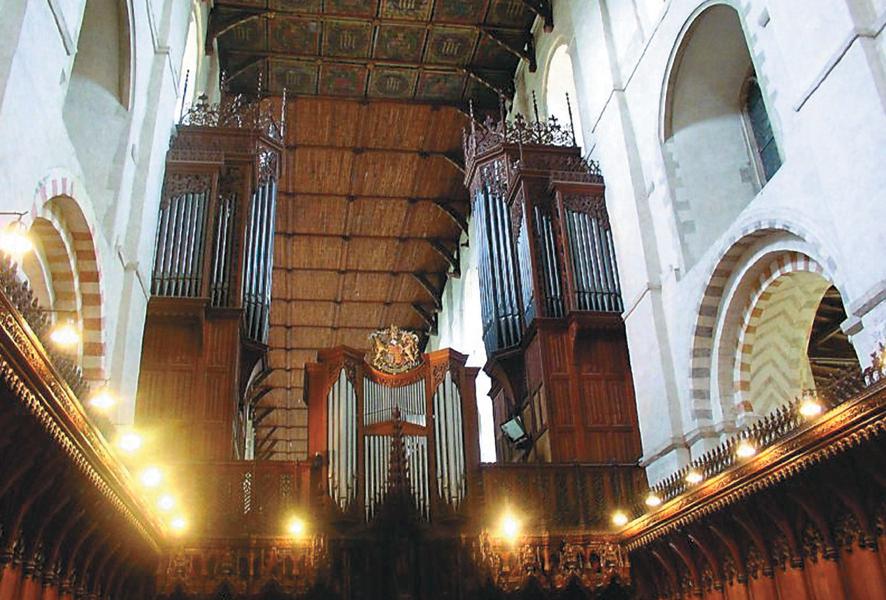
To date (February) the programme of events for the 2007 Festival includes such highlights as a jazz concert with John Dankworth and Cleo Lane, a fantastic gospel choir from London, Voices 2000, with organ, the internationally renowned Hilliard Ensemble perform and evening concert in the cathedral, and on another evening the soprano and presenter of Radio 3’s Early Music Show, Catherine Bott, will perform with a small consort. There will also be a performance of Elgar’s The Kingdom and, for aficionados of the English Cathedral choral tradition, a three choirs concert for the choirs of St Albans Cathedral, St John’s College, Cambridge (director, David Hill), and St Thomas Church, Fifth Avenue, New York City (director, John Scott) and an ‘awayday’ to some interesting and historical organs in Essex. We hope that it includes something for everyone.
The real success of the International Organ Festival over the last 44 years has been that all of its basic structures and support mechanisms are supplied by the local community. The Festival Society is largely a volunteer organisation – there are only three permanent paid staff and none are full-time employees. So all the box office staff, stewards at concerts, hosts of the competitors, the compilers and editors festival souvenir brochure and the managers of the organ competitions, for
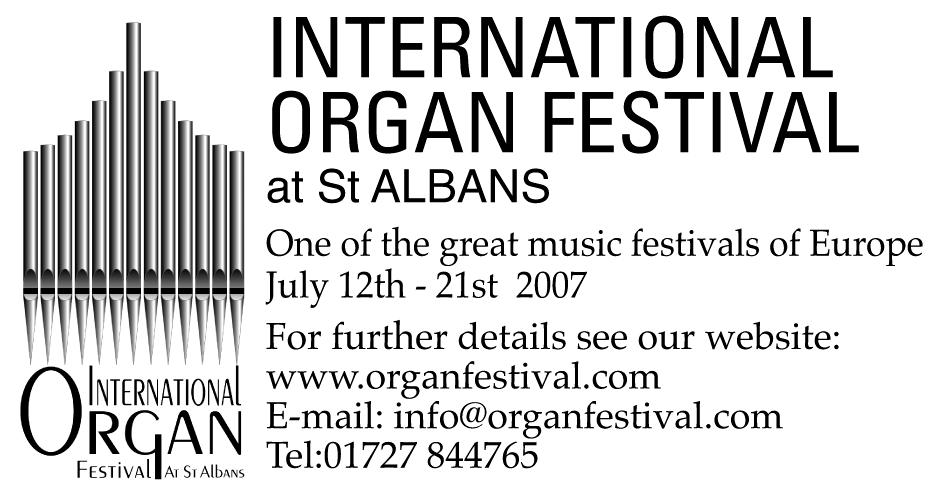
example, are done by local people in their own time and largely at their own expense. This has been an invaluable asset in various ways, not least that it means the festival can run on a much lower budget than would be the case if all these were provided by paid staff. It has been interesting to see other competitions and festivals around the world come and then go after a brief flourishing, largely due to the loss of a major sponsor or the withdrawal of financial backing from a local authority. The financing of festivals never has been, nor ever will be, an easy task. We rely on sponsorship to make up the shortfall of expenditure over income from concert ticket sales, but without the support of all our volunteers the amount needed from corporate sponsors would be so much greater.
And a wonderful spin-off from the involvement of so many local people is the wonderful atmosphere that pervades the 10 days of the festival. All who come to experience the competitions in particular comment of this and feedback from competitors is unanimous – they feel very well supported and cared for by their hosts and others and affirmed in their musical contributions to the festival as a whole so that, whether a prize-winner or not, the whole experience is a good and positive one.
In mid-July St Albans is a lovely place to be. The city is beautiful with its mix of mediaeval and modern, there are great restaurants, large open spaces and green lawns adjacent to the cathedral, ancient roman ruins to visit just a stones throw away across a park and central London is only 20 minutes from Kings Cross by train. So with all this and the heady mix of the excitement of an international competition and wonderful concerts to attend in the evenings it is something to be experienced. This is also the last chance to hear the fabulous Harrison and Harrison organ designed by Hurford and Ralph Downes before its restoration and enhancement later this year and scheduled for reinstatement in time for the next festival in 2009. We hope to see you there.
Andrew Lucas is Artistic Director, The International Organ Festival at St Albans and Master of the Music, St Albans Cathedral



David Leeke reports that a service was held at St Michael’s, Croydon, on Saturday 3 February 2007 to commemorate the life of Michael Fleming. Michael Paschal Marcon Fleming (1928-2006) was an eminent church musician, for many years working at the Headquarters of the RSCM at Addington Palace and Director of Music at several well-known London churches. When he died in January 2006 he was Master of the Music at S Michael’s, Croydon, where he ran a choir of the highest standard singing a wealth of the cathedral repertoire. The window (see photograph) was commissioned in his memory. It is set in the south aisle replacing plain glass placed there after enemy action in 1944. The main figure is that of S Gregory the Great in recognition of Michael’s long association with plainsong and Gregorian Chant. Above this central figure is the west front of Canterbury Cathedral; Michael was educated at S Edmund’s School, Canterbury and was ‘Hymns Ancient and Modem Scholar’ at the RSCM when it was in the Cathedral Precincts. Michael himself features conducting three girl choristers who represent his choir at St Michael’s and girls from the RSCM Girls’ Choir which Michael established during his time at Addington. He is depicted wearing the hood of his Lambeth degree awarded to him for services to church music and liturgy. Here there is also a scroll of plainsong Victimae Paschali, the Easter Sequence (Michael was born on and named after Easter Day), with sections of the great Father Willis organ behind. In the border of the window there is more plainsong fragments of the office hymn for Michaelmas Christe sanctorum decus angelorum (Christ the fair glory of the holy angels). The dedication panel at the base of the window not only marks Michael Fleming’s name and dates, but includes words from the hymn for which he is best known for the fine tune Palace Green: To Cod all praise and glory’.
The Trustees of The Wells Cathedral Girl Chorister Trust have announced that HRH The Countess of Wessex has become the Royal Patron of the Trust. The girls’ choir was formed in 1994 and its contribution to the music of the cathedral is constantly being praised. The Trust was established in 2002 to ensure that there is proper bursary provision for the eighteen girl choristers to match that already in place for the boy choristers.
A special concert was held in November to mark two new recordings by the girl choristers. These are the first to be made by Matthew Owens [Organist and Master of Chorister] since he took up his post in January 2005. The recording of Geoffrey Burgon’s music now released includes the beautiful setting of the Nunc dimittis. The Gramophone review says “this immensely appealing music is superbly sung by the Wells Cathedral Choir who prove to have excellent soloists”. The second recording will be released in January 2007 and features the work of David Bednall, the Assistant Organist at Wells Cathedral.
Dr Alan Thurlow, FCM’s last Chairman and Organist and Master of the Choristers at Chichester Cathedral since 1980 has been awarded Fellowship of the RSCM, awarded for contributions to church music. He was presented with his award at the RSCM’s annual Celebration Day service in Llandaff Cathedral on 12th May by Mark Williams, Chairman of the RSCM Council. “Each year the RSCM has the pleasure of conferring awards on individuals and sometimes organisations who make outstanding contributions to the musical life of our communities”, he said.
Timothy Noon Organist of St Davids Cathedral was honoured with an Associateship, for the development of the cathedral choir and the St Davids Cathedral Festival.
DR ROBERT ASHFIELD RIP
Douglas Henn-Macrae a lay clerk at Rochester Cathedral writes: Robert (“Bobby” or “Doc”) Ashfield (as he is affectionately known in Rochester), was the first cathedral organist under whom I sang as a very new supernumerary lay clerk in the autumn of 1970, learning the job by singing alongside one of the six regular men. He was born in Surrey in July 1911 but his family moved to the village of Eynsford in Kent in 1912. His first practical musical experience was blowing the organ in the village church while his mother played and sometimes they reversed the roles. As a young teenager he attended Tonbridge School, where he excelled both at the organ and on the sports field. In 1928 he entered the Royal College of Music in London to study with Ernest Bullock (then Organist of Westminster Abbey). Having gained his ARCO diploma in 1931 and FRCO the following year, Bullock invited Robert to be his Organ Scholar at the Abbey. In 1934 he was appointed Organist of St John’s, Smith Square in London (now a concert hall) and in 1936 he became Music Master at Westminster Abbey Choir School, gaining his BMus from London University the same year. In 1940 he returned to Tonbridge School as Assistant Music Master, and obtained his DMus the following year, before being called up for war service. After the war, in 1946, he went to Southwell Minster in Nottinghamshire as Organist and Rector Chori. He moved to Rochester Cathedral as Organist in 1956 and the following year was also appointed a Professor for Theory and Composition at the Royal College of Music. Robert retired in 1977 but remained active until very recently as a composer and concert promoter, and was a regular attender at the Cathedral Eucharist on Sunday mornings. We last saw him in church on Christmas morning. The Cathedral Special Choir had already scheduled some of Robert’s music for this weekend (as we often do). As I write, the Introit at Evensong today was his processional setting of Of the Father’s love begotten, and this is repeated at tomorrow’s New Year Carol Service; at Mattins we will sing Fairest of morning lights (17th century text by Thomas Pestel); and as an extra valedictory item at the end of the Eucharist we will sing his best-known anthem, written for a Diocesan Choirs’ Festival at Southwell in 1949 to a text by Lionel Johnson, based on Revelation 17: ‘Ah, see the fair chivalry come, the companions of Christ! White horsemen, who ride on white horses, the Knights of God! They, for their Lord and their Lover who sacrificed all Save the sweetness of treading where He first trod! These, thro’ the darkness of death, the dominions of night, Swept, and they woke in white places at morning tide: They saw with their eyes and sang for joy at the sight, They saw with their eyes the Eyes of the Crucified. Now, whithersoever He goeth, with Him they go: White horsemen, who ride on white horses, Oh, fair to see! They ride where the rivers of paradise flash and flow, White horsemen, with Christ their Captain, for ever He!’ May he rest in peace and rise in glory.
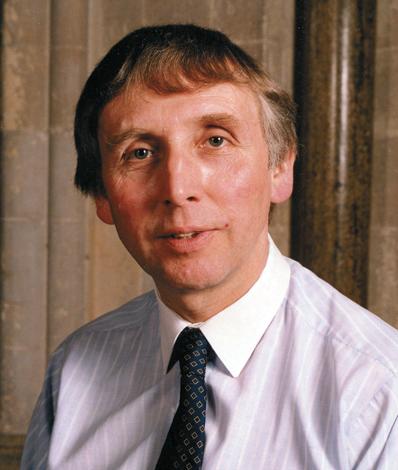
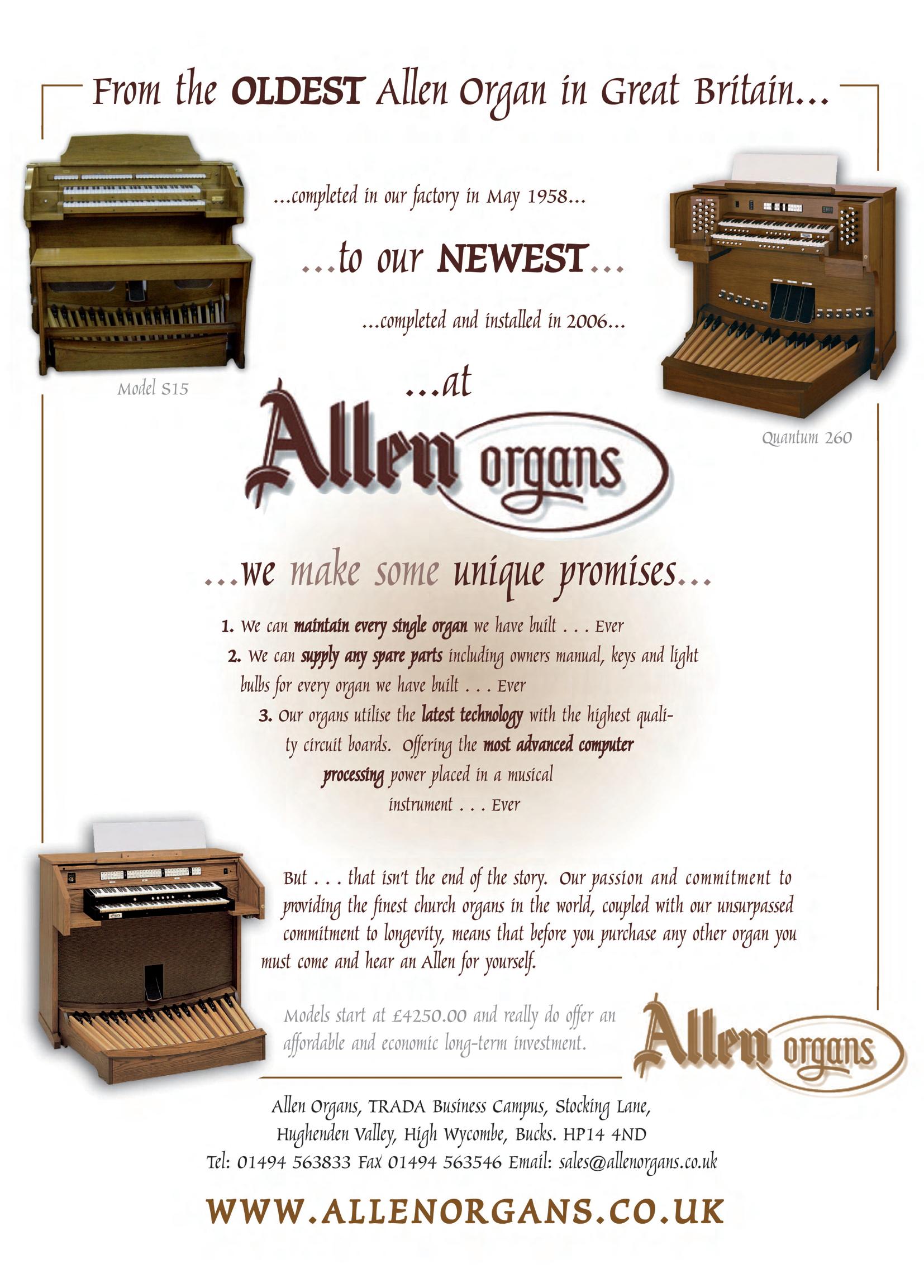
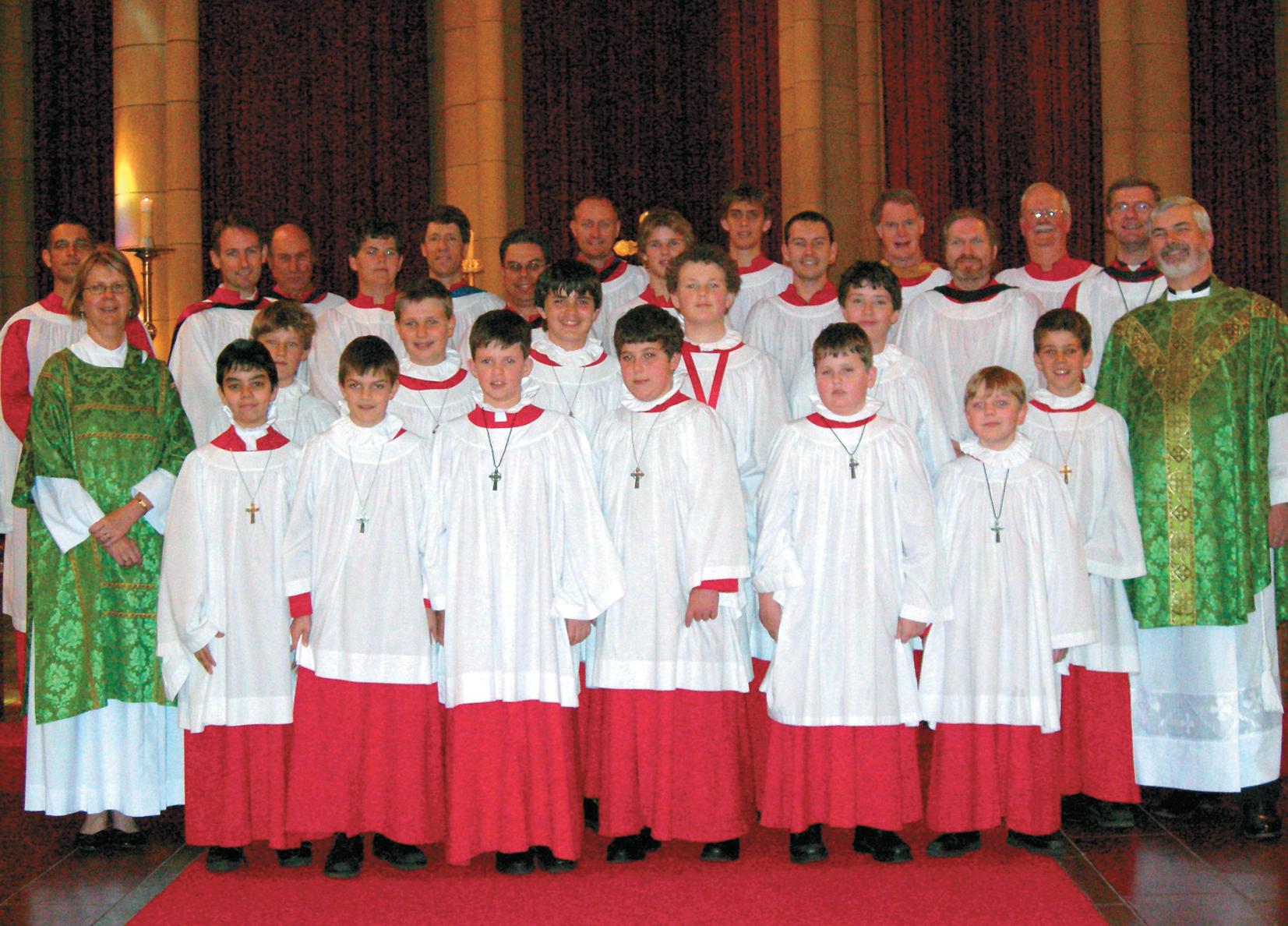
Ithink I’ve always been a bit on the outside: as a Scot we went to the ‘English’ church, and when working in England I never felt I had Dickens, brandy butter and all the other English traditions in my bones. So in a sense it was natural, having served Coventry Cathedral for eight years as Director of Music, to seek fresh challenges. In July 2005 I became the first serving cathedral organist in several centuries to become an Anglican minister. Despite having three years to come up with a plan, the management at Coventry were not
imaginative enough to see how music/ministry could be combined and the chance to contribute to a church where creativity is valued seemed too good to miss.
By coincidence the Dean of Brisbane had sung at Coventry Cathedral’s consecration (as a treble), and the international dimension of ministry (involving real engagement with other faiths and other Anglicanisms, as well as other languages) is something I value very much. Whereas the Sydney diocese has a problem with anything other than English in their liturgies,
A year ago, I wrote a little piece for CATHEDRAL MUSIC, and it’s great to be given the opportunity to reflect more on what life is like for church music here.
we positively relish other languages as a truer reflection of the multi-cultural status of Australia. Australia has a wonderful multi-cultural channel (SBS) and it is fascinating to see the church/state dynamic at work.
My post at St John’s is Director of Music, but it has been especially rewarding to see how I can bridge the perceived gap between the various aspects of music ministry and the many other pastoral matters. Being able to articulate the place of music is important, and because I am also rostered for sermons, prayers, offices, etc, people get to see a little of how integrated worship can work. In a funny way I had been doing that for years in Coventry, though because I wasn’t ordained it was often remarkable how that disadvantaged what needed doing. The church is particularly prone to clericalism, especially when its leaders are not very secure intellectually or emotionally, and it’s good to see that there are grounds for hope at least in Australia.
The previous organist at Brisbane had been appointed in 1960: inevitably the horizon nowadays is different from what it was then. For instance tight ensemble really matters (in most music), as does thorough training of boys to read music fluently. To sing a wide repertoire (which is pretty much a sine qua non in a cathedral) the music reading has to be pretty secure, and if you add to that the expected range of musical styles we need to access it means that focussing on reliable vocal technique and good rehearsal techniques (to maximise the time) are all important. Keeping up with music journals, the web, broadcast and recordings is important, as is having occasional visits from musicians. We had Colin Walsh playing a stunning recital on his way back to the UK (form a tour to NZ), and the choir of Girton Cambridge were out for a few weeks. Singing Kodaly Missa Brevis together was a delight, and it was good for the boys to see a mixed choir and hear sopranos sans wobble!
St John’s is by a large stretch the most comfortable cathedral to work in that I have known - there is none of the Barchester Towers nonsense that seems to be a parlour game for some English places. We forget that cathedral communities constantly need inspiring since they are a mix of transient, tourist, disaffected, explorers, snobs, nice people and those who also come for the music! The congregation has responded rather imaginatively to the various initiatives and after many years of things being the same, there was a hunger to change things so that has helped. That said, the idea of congregational involvement (eg responsorial psalms, and even sung acclamations etc) is still rather new and we have things to work on. I make a point of writing a page of notes about music, theology, and politics for each service sheet, which at the very least becomes reading matter if a sermon is below par! At the same time it shows a willingness to engage and inform so people know what it is we are about.
The choristers all attend the prestigious Anglican Church Grammar School, and the lay clerks are drawn from the area –the demographics of Brisbane are interesting, because there are so few ‘cathedral-style’ choirs, some folk travel huge distances to belong, and this is heartening that some folk value it that much. The pool of lay clerks has expanded in the last year, and this has given us a greater degree of flexibility. It simply isn’t true to say that Australia is uncultured (funny how UK folk assume that it is - Queensland has obligatory class music, while the UK can’t even pay peripatetic teachers!) but it is true to say that some folk do not quite know how committed one has to be to make music at the highest level. I am so lucky to have a superbly imaginative assistant in Christopher Cook –
he brings a wealth of experience and dynamism to the projects we do and the choristers would not have developed as fast as they have without his care and attention too.
The most pleasing comment I had was from Peter Kneeshaw (the organist at St Mary’s Cathedral in Sydney) who was impressed that the boys now make a large sound. Certainly, if every boy projects properly (especially with fairly straight walls, and a high stone ceiling) it is not that difficult to make a decentsized noise. I am also pleased that the Psalm-singing is now more developed. For instance, the ‘dramatisation’ of Anglican chant is quite important, and it is hugely satisfying (and better worship) to sense the journey and the emotion inside them.
It doesn’t of course take an outsider to do this - but sometimes (certainly in the UK) things can be rather in-bred: I was the first organist at Coventry in 35 years who hadn’t been the assistant organist! Valuing different approaches is really the key to good music-making as in church. The danger of ‘indifference’ is two-fold - one that we don’t care enough to make things better, but also we don’t value the differentness that worship offers. People forget that the word ‘holy’ is related to a type of differentness, a set-apartness. Stepping into choral worship is like dipping your toe in a stream that has been going on for hundreds of years. And the current rash or panic to call everything mission is a huge example of how the church can misunderstand its calling. God calls us to be faithful, which means worshipping God above all else. Until the church realises that worship is the most important thing we can do we are bound to struggle!
We are investigating the idea of the choir coming to the UK in 2009 (it takes a long time to get the finances straight for a big trip), and this is in the light of a lovely trip to New Zealand. The choristers in particular benefited from having to raise their game, and singing in Wellington Cathedral reminded me of Coventry (large acoustic) and also the same glass windows by the Kiwi John Hutton!) where clarity was allimportant. I think the FCM does a good job in keeping folk informed: becoming blinkered is one of the chief dangers of working in your own furrow!
‘Despite having three years to come up with a plan, the management at Coventry were not imaginative enough to see how music/ministry could be combined and the chance to contribute to a church where creativity is valued seemed too good to miss.
Age: 44
Education details:
Harrogate Grammar School 1977-1981
Worcester College, (Organ Scholar) Oxford 1981-1984
Career details to date:
Winchester Cathedral Organ Scholar 1984-1985
Salisbury Cathedral Assistant Organist 1985-2005
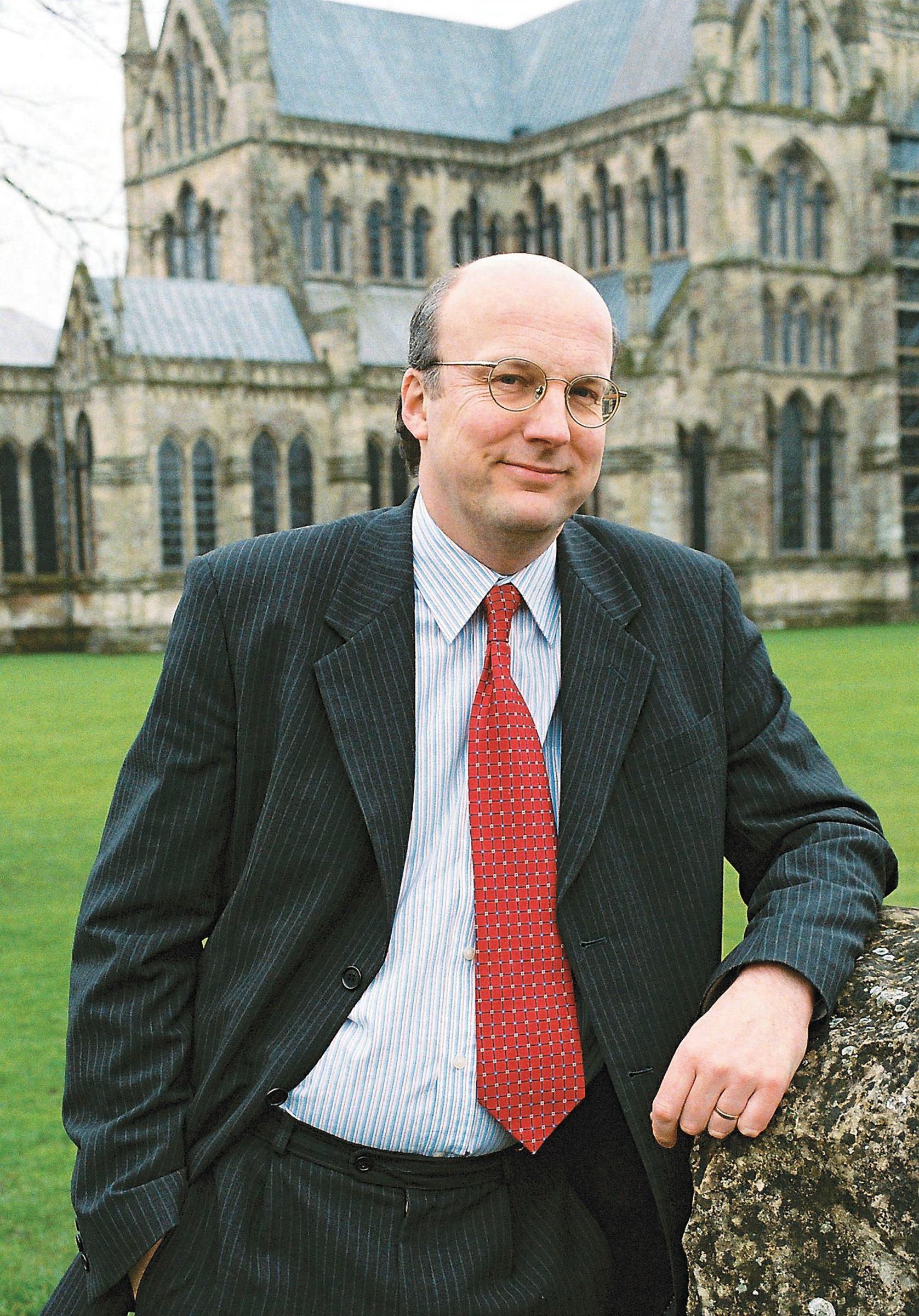
Salisbury Cathedral Director of Music 2005-
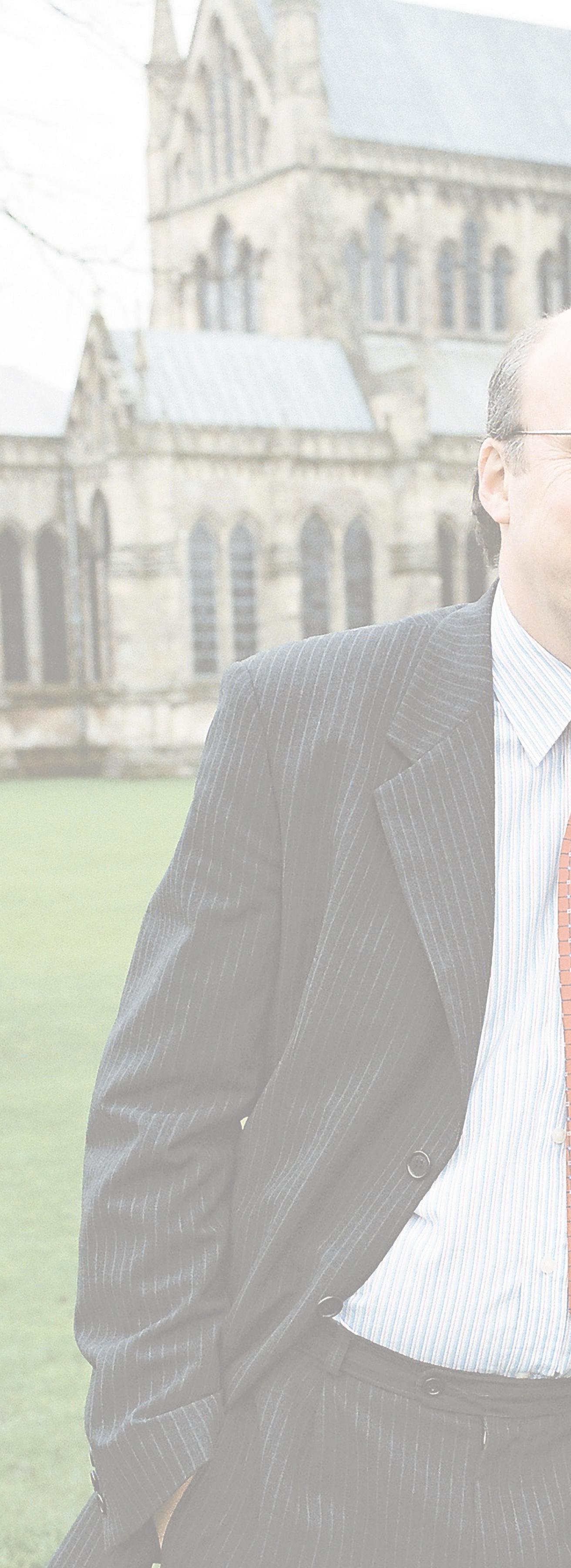
You have been assistant at Salisbury and now the No1. What has changed, if anything? And, what do you want to achieve?
I am enjoying being in overall control of the choirs here and particularly being able to rehearse them on a daily basis. The more experience I get, the more I rely on my musical instincts to produce what I hope are quality performances at a consistent standard. I want to build on the strong foundations laid by my predecessors and make Salisbury Cathedral a byword for excellence in liturgy and music.
What organ pieces have you been inspired to take up recently and why?
Although I do not play the organ as much as I should these days, I really enjoy learning music by the French School, as it suits the Willis organ so well. I have recently been tackling Vierne’s Third Symphony and movements from Widor’s symphonies.
Have you been listening to recordings of them and if so is it just one interpretation or many and which players?
I must confess that generally I do not listen to CDs of organ music as my main interests lie in choral and orchestral music.
What new repertoire will you be introducing to the choir?
I am keen to expand the repertoire of the choir in several directions. We currently do not sing enough music by Byrd, Gibbons and Tallis, and also we do not make significant inroads into the contemporary scene. Although perhaps not strictly new repertoire, a great deal of my energy over the past year has been in making the change from the Revised Psalter to Coverdale, something I had been wanting to do for a decade or so.
What or whom made you take up the organ?
Not sure really. I remember listening to a friend playing the organ and I reckon I was hooked from that moment.
Which organists do you admire the most?
I admire and am grateful to all the organists who have had an influence on me. Certainly Adrian Selway, my first teacher in Harrogate, then Ronald Perrin of Ripon Cathedral, James Lancelot, my patient mentor at Winchester, and finally Thomas Trotter, who took my playing to a new level.
What was the last CD you bought?
Erich Korngold’s Symphony with the LSO and Previn. Magnificent, underrated work, brilliantly performed.
What was the last recording you were working on?
My first in charge at Salisbury, The Virgin Mary’s Journey, recorded last year.
What is your:
(a) favourite organ to play?
St Paul’s Cathedral, London
(b) favourite building?
Turbine Hall, Tate Modern, London
(c) favourite anthem
Gibbons O thou the central orb – perfection
(d) favourite set of canticles
Stanford in C
(e) favourite psalm and accompanying chants?
Psalm 84 (Walter Alcock)
(f) favourite organ piece
Bach’s Passacaglia & fugue in C minor
(g) favourite composer
Brahms
What pieces are you including in an organ recital you are performing?
Mendelssohn’s 3rd Sonata, Walter Alcock’s Toccatina, Bach’s Prelude & fugue in B minor, Franck’s Choral 1 in E major.
Have you played for an event or recital that stands out as a great moment?
I enjoyed playing the organ part in the Saint-Saens Organ Symphony for a huge Salisbury Spire Appeal Event, when I was on the organ inside the cathedral, and the orchestra was on a stage, outside on the green at the West End.
Has any particular recording inspired you?
I still have an ancient LP of Barbirolli and the Hallé Orchestra
playing Elgar’s Symphony No. 1 and I reckon it beats all other versions I have heard. All the tempi are just right.
How do you cope with nerves? They don’t really bother me.
What are your hobbies?
Wine, beer, football, cricket, reading.
Do you play any other instruments? Cello – very, very badly.
What was the last book you read?
Vikram Seth’s An Equal Music.
What are your favourite radio and television programmes? I’m sorry I haven’t a clue and Match of the Day
What Newspapers and magazines do you read? The Week and Private Eye.
If you could have dinner with two people, one from the 21st century and the other from the past, who would you include?
Dinner with Humphrey Lyttleton and Mozart could be fun.
What should be the role of the FCM in the 21st century? To continue to encourage cathedral musicians in cherishing the past, nurturing the present and building for the future.
Saturday 20 January – boys
Saturday 3 February – girls
Do you know a child in Year 3 or 4 who loves singing and would like to be in Salisbury Cathedral Choir? A fantastic opportunity for children in a spectacular setting
Salisbury Cathedral Choir’s open day
Saturday 11 November 2006
There will also be a special workshop for prospective voice trial candidates and their parents on Saturday 9 December
The Director of Music, David Halls, is always happy to meet prospective choristers and their parents and advise on how best to prepare for voice trial
For further details about any of the above please telephone
A talk given to the FCM Oxford Gathering in March.
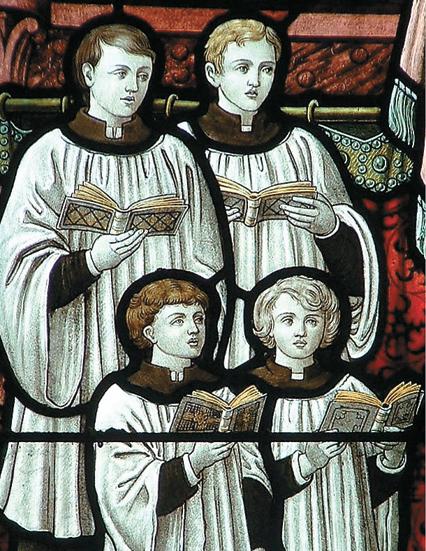
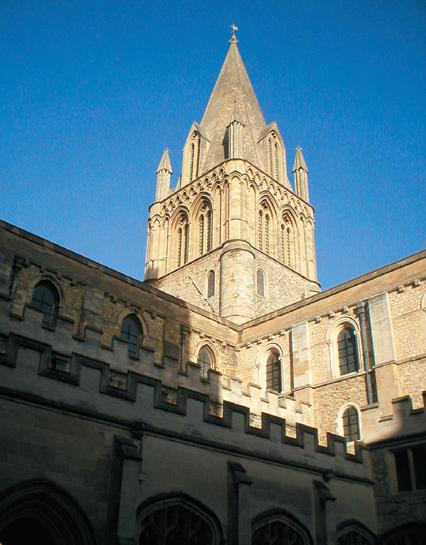
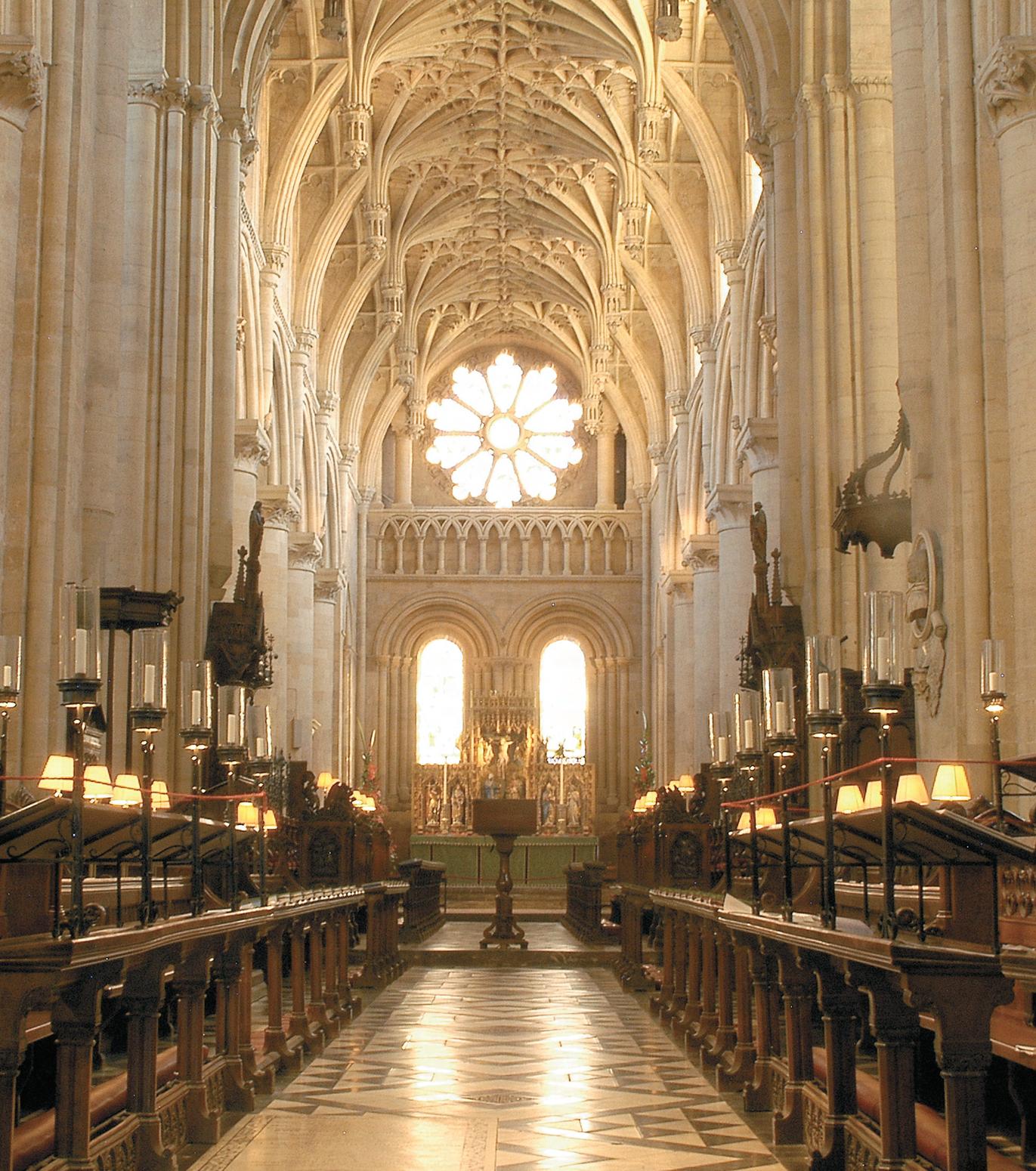
When Dr Higginbottom asked me to speak today he said that it would be fitting if your meeting in Oxford could be marked by some local colour in the shape of a talk on the Oxford Movement and its influence on church music in this country.
Let me start with a definition. The Oxford Movement is the name given to a stirring in the spirit of Anglican Churchmen, beginning in the first part of the 19th century, whose impact was to affect the whole of the Church of England. It is forever associated with Oxford because three Oxford dons were leading figures in this movement, each of them being at some point a fellow of Oriel College. I am referring to John Keble, after whom Keble College is named; John Henry Newman, who surely needs no introduction; and Edward Bouverie Pusey, in whose memory Pusey House here in Oxford was founded, where I have the privilege of working.
Now it is a pleasant irony, but an instructive one, to remember that the Oxford Movement began with politics and then got caught up with matters of theology and Church life. Also, as with so many important issues in English political affairs, you will not be surprised to learn that it involved Ireland. Put briefly, the problem was this: following the parliamentary union of England and Ireland in 1800 objections began to be raised to the system whereby in Ireland nonconformists and Roman Catholics were required to support financially the established Anglican Church. To assist the Church of Ireland financially in the wake of the changes which were coming about the English Government decided to amalgamate several Irish bishoprics, meaning that certain of them would cease to exist as independent dioceses. On purely utilitarian grounds this was reasonable, but for those who held a particular view of the nature of the Church the proposal was outrageous.
It helps to remember that the Oxford Movement did not spring from nowhere. Its roots were in that outlook on Anglican matters which we loosely call High Church. Those who hold to this position have a high opinion of the nature of the Church. They see the Church as a divine society, one instituted by God in Christ through his apostles. Its structures are therefore not accidental, but formed under the guidance of the Holy Spirit. Its bishops are successors to the Apostles, who guarantee the orthodoxy of the Church’s doctrine and teaching. God’s own life is given to His people through the Sacraments of His Church. This is a school of opinion going back to the early days of Anglicanism, and with its foundations in an older Catholic tradition.
To those who thought in this way the plan to scrap bishoprics was highly offensive because it suggested that the
State had the right to decide the practical affairs of the Church. John Keble was one such High Churchman, and he took the opportunity to say why he objected to the Irish bishoprics scheme when he preached before the Judges of Assize meeting here in Oxford in 1833. He called his sermon National Apostasy. In it he intended to ask the vital question, ‘Is the Church merely a human institution, or is it indeed of Divine origin with its structures and hierarchy approved by God?’ If the latter was true, then the State had no right to tinker with things pertaining to the Church’s organisation.
Keble effectively put a lighted match to the proverbial blue touch-paper. Of those who responded to his challenge none was more important than John Henry Newman. It was Newman whose energy and enthusiasm drew a group of supporters together to see what might be done to reawaken a torpid Church of England to a sense of her God-given nature and her mission. Rather than bother with meetings and petitions, Newman sat down and wrote the first of what became the Tracts for the Times, recalling members of the clergy in particular to a sense of the sacredness of their office. Remember that this was a period when it was relatively easy and inexpensive to get a pamphlet set up and printed. All you had to do then was to distribute it. The Tracts, which became lengthier and weightier when Dr Pusey joined the Movement, spread the challenge of their writers far beyond the confines of Oxford, though the Movement has always kept its Oxford name. So famous did the Tracts become that those who supported the initiative of Keble, Newman and Pusey became known as Tractarians – the term I shall use to refer to them.
As might be expected, the Tracts stirred up a hornets nest. Accusations were rife that their writers wished to smuggle Popery into the Church of England, yet despite hostility and opposition – not least from bishops – the Tractarians steadily gained ground among those who wished to see the Church of England as more than just the shell of an Established Church. Even the massive blow they received in 1845, when Newman left for the Roman Catholic communion, did not destroy their influence. I would mention two areas in which they made particularly important contributions to the life of the Church of England.
In the first place, by reminding Anglicans of their Catholic heritage, the Oxford Movement inspired a renewed awareness of the importance of the Sacraments in Christian life. The Tractarians were anxious to follow the quest for personal devotion and holiness of life. It was partly this which led them and their followers to share in Dr Pusey’s deep concern for the poor. The willingness of Tractarian priests to minister the sacraments in the worst slums of Victorian England’s burgeoning cities was heroic. However, the Tractarian pursuit of
‘
...the Oxford Movement inspired a renewed awareness of the importance of the Sacraments in Christian life.’
holiness had another consequence, which was a conviction that if the sacraments of the Church were to be celebrated more frequently they must also be celebrated with fitting dignity and reverence. From this it could only be a small step to a desire to transform the conduct of worship in churches, and to have new churches built which would be suitable for solemn services.
This is leading us to the influence of the Tractarians on the music of the Church of England, but I must make one thing clear. The development of reverent worship which led, especially in the slums, to the colourful and ornate style of liturgy which became known as Ritualism was certainly an offshoot of Tractarianism, but not one which would have appealed much to the original Tractarians. The concern of Keble, Newman, Pusey and their like was first and foremost sound doctrine. Get your doctrine right and teach it rightly and a desire for good conduct of life and devotion in church will follow. This desire to instil sound teaching into people led to one of the most significant musical results coming from Tractarian influence, of which I shall say more in a moment.
From this point on I am going to have to be even more selective in giving illustrations. I must therefore ask you to accept that if the impact of the Oxford Movement on English Church life was sometimes the cause of contention, it was also widespread and surprisingly rapid. Even the cathedrals were not immune from it. As priests influenced by the Tractarian outlook were promoted to cathedral posts, so the effect on how things were done in cathedrals was felt; and given the dismal standard of worship existing in many cathedrals before the Oxford Movement, the change could only be for the better. One of the most striking examples of change
concerned one of the most striking cathedrals, St Paul’s.
From 1871 St Paul’s Cathedral witnessed a staggering transformation of its life, the result of having one of the greatest deans and one of the greatest cathedral chapters in Anglican history to oversee its life. The Dean, Richard William Church, came to the cathedral in 1871. He was a firm Tractarian, though not a Ritualist. Among his canons when he arrived were two other Tractarians – the formidable Robert Gregory, destined to succeed Church as dean, and the greatest Anglican preacher of the time, Henry Parry Liddon. Church, Gregory and Liddon were determined that the condition of the cathedral’s worship, and especially its music, should be transformed and made worthy of the cathedral as well as being a reverent offering made to God. Their chance came with the retirement of Sir John Goss as cathedral organist in 1871. Goss had been aware of the need for greater discipline where the choir of the cathedral was concerned, but he was a shy man, not given to combat, and he had received too little consistent support from the previous members of the Cathedral Chapter. Now a dean and chapter had arisen who were prepared to enforce their plans for change. Almost certainly it was Dr Liddon who proposed the name of John Stainer as Goss’s successor, since he had known Stainer previously as an undergraduate in Oxford. Stainer was appointed, and with the Chapter solidly behind him he brought about a major reform in the music of St Paul’s. Not the least of his changes was to introduce an annual performance of Bach’s St Matthew Passion. The interesting point for us, however, is that Stainer was himself a follower of the Tractarians. Here in Oxford, where he became a distinguished Professor of Music, he
Saturday July 8th
7.30 pm
Mozart Symphony No.40 & Mass in C minor K 427
Sunday 9th July
10.30 am
Festival Eucharist
9.00 pm
Bach by Candlelight: Jill Crossland piano
Monday 10th July
7.30 pm
Deakin Chamber Players with Richard West clarinet
Tuesday 11th July
7.30 pm
Love and Women:Kathryn
Harries,Sarah Beth Briggs & Margaret Howard
Wednesday 12th July
7.30 pm
Wayne Marshall organ and piano with Natalie Clein cello
Thursday 13th July
7.30 pm
ZUM Gypsy Tango Inferno
Friday 14th July
7.30 pm
The Choir of St John’s College,Cambridge
10.00 pm
David Briggs: Live Organ Improvisation to The Lodger
Saturday 15th July

7.30 pm
Gilbert & Sullivan
The Pirates of Penzance from scratch conducted by David Hill
worshipped at St Cross Church in Holywell; indeed he was a Churchwarden there, and he is buried in its cemetery.
Stainer’s contribution to music and to musical scholarship is still undervalued, but one work in particular has kept his name alive, namely his Passiontide cantata, The Crucifixion. When I was young that work was a victim of the ignorant condemnation of anything Victorian which marked the 1950’s and 60’s in particular, an ignorance leading to the vandalism which demolished much fine Victorian architecture in order to supplant it with soulless concrete. It has been one of the satisfactions of my life to see Stainer’s cantata finding new recordings and new audiences in recent years. What is not always appreciated, however, is how Tractarian a work it is – an amusing thought when one reflects that The Crucifixion must have been sung not only in churches but also in hundreds of Free Church chapels. I have said that Stainer was influenced by the Tractarians. Stoutly Tractarian was W. J. Sparrow Simpson who provided him with the text for the work, notably the hymns which form an essential part of it. Few works can have done more to carry into unsuspecting Victorian breasts a Catholic teaching on the Incarnation of God in Christ and similar teaching on the Eucharist. Piers Burton-Page’s notes for the Chandos recording of The Crucifixion were wildly wrong to say that its hymns are “irredeemably Victorian in the way they dwell on suffering and gore and almost masochistic selfabnegation”. The words stress a fully Incarnational theology, gazing awestruck at the self-offering of the Son of God walking the path of suffering because of the Divine love and compassion for human beings. Even the Virgin Mary receives oblique but telling reference in the piece. We are not allowed to overlook the fact that the One dying on the Cross for the sins of the world was conceived and born of the Blessed Virgin.
Perhaps this is the point to say that Victorian Oxford enjoys the distinction of having two Tractarian influenced Professors of Music. Stainer I have mentioned, but we must not overlook the Revd Sir Frederick Arthur Gore Ouseley. His compositions have not, in the main, stood the test of time, but he performed a service of enormous value by using his private wealth to found the College of St Michael at Tenbury, where boys could be educated and also trained in the best singing of Anglican Church services.
Another area where the Tractarians exerted musical influence through a musician who had imbibed their teaching was in the revival of interest in Gregorian Chant. The credit for this goes substantially to the Rev’d Thomas Helmore who was Master of the Choristers of the Chapel Royal from 1846. You might imagine that someone in that august position would be a conventional clergyman of his period, but his Tractarian credentials are revealed by the fact that he was a member of the Ecclesiological Society, which did so much to restore dignified worship and the study of liturgy to the Church of England in the Nineteenth Century. In a paper which Helmore delivered to that Society in 1851 he expressed his pleasure at seeing a new spirit stirring in the Church which meant that “Christian art sought once more, as of old,... to deck the worship of God with fitting vestiture and seemly ornament”. However, he regretted that music used in worship was much influenced by secular models when, as he said “there does exist a style of music adapted in all respects to Church purposes, essentially different from that of the oratorio, the opera, the theatre, the concert room, or the military parade”, by which he meant plainsong. Not only did he think that the Chant was the most appropriate music for
worship, he was clear that it should be sung by ordinary congregations. In addition he argued that there should be a return to a musical notation appropriate to plainsong. This was not just a matter of historical accuracy; he was keen to avoid modern notation so that there would be no suggestion that the melodies were in any way to be confined to a strict metre. Also, though he knew that an accompaniment to plainsong is an utter anachronism he was prepared to permit it if it helped congregations to learn the melodies.
Helmore was wonderfully optimistic about the reintroducing of the Chant into Anglican services. He claimed that, “the people, wherever the true phase of a solemn and sumptuous ritualism has arisen, have rejoiced in its light, and that light is by degrees setting them free from mistaken prejudices against ecclesiastical music, and its appropriate notation”. The result of his enthusiasm was seen in two volumes called The Hymnal Noted which appeared in 1851 and 1856 respectively. Looking at them today they seem very tentative work indeed. Their plain, square musical notation in no way reflects the subtlety and variety of authentic plainsong manuscript. It is not surprising, however, that they created a stir, and also some opposition from those who predictably denounced what they saw as another attempt to introduce Romanism into Anglican services. The books were not destined lead to the musical enrichment of worship which Helmore had desired – the strange-looking music put off ordinary Church people – but along with Helmore’s later Primer of Plainsong (1877), they were pioneering works, even if they were to be rapidly superseded by the work of other
Main features include:
An entirely new supplement. Comprising fifty hymns together with a range of seasonal material and responsorial psalms and some new tunes for existing items.

Published to mark the centenary of English Hymnal of 1906. Includes material from the Common Worship: Times and Seasons volume
Available in 3 attractive editions.
Congregational
Usual
978-1-85311-735-0
234 x
Usual Price£25.00
With
scholars, notably Walter Frere. I may add that Helmore exerted personal influence here in Oxford. A Plainsong Society was established in the University in 1853, one of its founders being a distinguished Tractarian layman, Frederick Lygon, later Earl Beauchamp. It was not long before Helmore came to address them. One person who certainly wished him to come was the Rev’d Thomas Chamberlain, Vicar of St Thomas’s Church, the first church in Oxford where the principles of the Oxford Movement were put fully into effect.
However, if Helmore saw to the musical side of things in The Hymnal Noted, his colleague who looked after the words pointed the way to a real revolution in the use of singing in Anglican churches. He was the robustly Tractarian priest, John Mason Neale (1818-1866), and to him must go much of the credit for arguably the greatest liturgical and musical contribution made by the Tractarians to the Church of England, namely the revival of hymnody.
Hymns are now such a familiar part of our Church worship that it is easy to overlook the fact that following the Reformation in this country they disappeared. Certainly the responsibility for that cannot be laid at Luther’s door. He made extensive use of hymns, many of them written by him, and his purpose in using them was the reason as old as the Church, and indeed predating the Church – that hymns are a superb way of teaching doctrine. It is a fact of experience that people remember words more easily if they are put to a memorable tune, and so much the better if the words convey important Christian teaching. The problem, so far as England was concerned, was that many of the English Reformers fled to Calvin’s Geneva during the reign of Mary Tudor, and Calvinism would permit no words in its services which were not scriptural. With this conviction the Reformers returned to this country.
There was a positive side to the situation, because it led to the development of metrical versions of the Psalms and the introduction of tunes for them from abroad, of which Old 100th is the outstanding example. The reverse side of the coin
was the disappearance of the rich heritage of ancient and mediaeval hymns. Only Veni Creator survived in the Ordinal of the Book of Common Prayer. The use of metrical psalms before or after services effectively replaced the singing of hymns. Hymns which were written, for example those by George Herbert, Henry Vaughan, John Donne and Thomas Ken, were intended for private devotion. Only in the Eighteenth Century was hymn singing revived, and that was among Nonconformist congregations. They embraced hymn singing with gusto, and the high point was reached with the work of the Wesleys. John Wesley believed firmly in harnessing the power of music to open hearts to God and wrote words for hymns; but his efforts pale beside those of his brother Charles. Charles Wesley was a hymn writer whose gifts amounted to genius, and many of his hymns have become standard fare in every part of the Western Church.
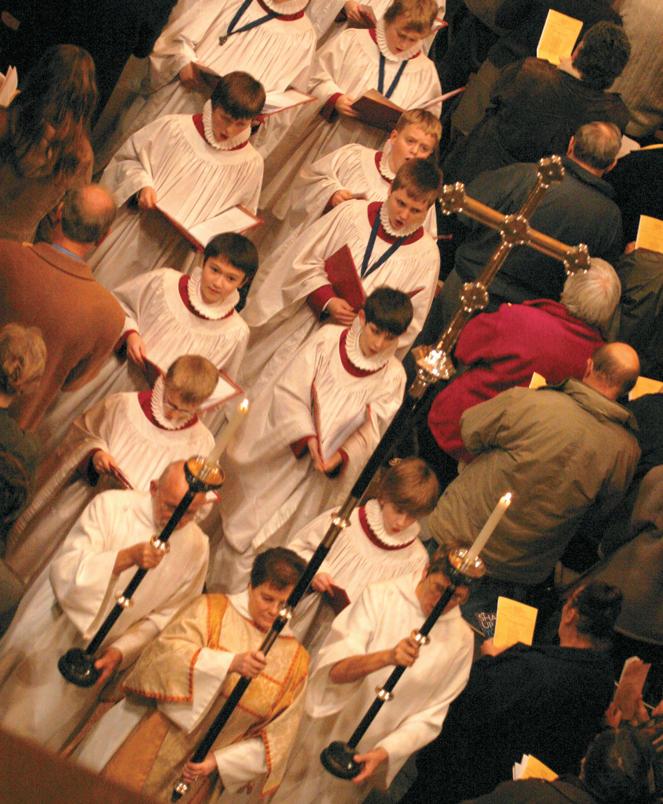
It must be confessed that the Church of England was very slow to reinstate hymns as a part of worship, partly from the Puritanical dislike of anything non-scriptural creeping into Church and partly from a prim horror at anything which might smack of religious enthusiasm. However, in the Eighteenth Century Evangelical clergymen of the Established Church realised that hymns could be sung in the chapels of charitable institutions, which were not subject to diocesan control, and by the beginning of the Nineteenth Century they were finding their way into many Evangelical churches, notably in Yorkshire. The legality of hymns in the Church of England was finally established in 1820, when certain members of the congregation of St Paul’s, Sheffield, took action against their incumbent who had introduced into his church his own book, a Selection of Psalms and Hymns for Public and Private Use. The Archbishop of York asked for the book to be withdrawn, but the following year a new edition was published, approved by the Archbishop and dedicated to him. So the principle was established that hymns or psalms might be introduced into a parish church at the discretion of

the incumbent, and this cleared the way for a major revival of hymnody in the Anglican Church.
The Tractarians were not slow to see the possibilities opened up by this change. After all, Keble was a noted writer of devotional poetry. His book The Christian Year contained verses designed to accompany the readings appointed by the Prayer Book for every Sunday of the year, and also every feast and fast day. It had immense sales, and to countless Victorians it became the companion to their Sunday devotions, though I must say that reading the verses today one is left wondering what they made of them. Keble must have been one of the most un-poetic poets ever, and these pieces make anything but easy reading. One Bishop referred to them as his Sunday puzzle. But Keble accomplished two important achievements. Firstly, in his verses he frankly embraced Romanticism and brought it within the orbit of the Church. Secondly, he persuaded hesitant fellow High Churchmen that the acceptance of verse by the Church did not mean falling into Evangelical enthusiasm. And if Keble wrote verse, so too did Newman. He said he often made them up while shaving in the morning. He had a far more musical ear than Keble and some of his verses were subsequently turned into hymns. How could we possibly wish to be without Firmly I believe and truly, or Lead, kindly light or Praise to the Holiest in the height? However, quite apart from the writing of original work, the Tractarians, with their concern to return the Church of England to a sense of its Catholic roots and heritage, were anxious that the great body of earlier Latin and even Greek hymns which had nourished Christians spiritually and doctrinally should once again become available to all. This brings us back to John Mason Neale.
Neale was anxious that church buildings should be made fitting places for divine worship, and his love of the ancient hymns was of a piece with this. Just as he wished to see churches made dignified, so he wished to see the hymns restored and he set himself to the task of their translation into English. He was not the first Tractarian to attempt this translation – Newman had tried it, among others – but his name stands supreme because in translation he showed a skill and a range in which he has had no equal. Bishop Geoffrey Rowell has described Neale’s achievement so well that I must quote him:
“If ordinary worshippers were taught to claim the architectural heritage of mediaeval Christendom as their own, then Neale was determined that English worship should be enriched by the treasures of Christian hymnody from both Greek and Latin churches, and even from further afield. There can be little doubt that his work of translation of hymns which became, and remain, well-loved parts of Anglican worship did

more to teach the great doctrines of the Creed and sacramental theology than did many tracts and theological treatises”.
When translating Latin office hymns Neale made his task the more difficult by striving to reproduce the metrical pattern of the originals so that they could be sung to the plainsong melodies, and this is an important part of his work with Helmore. The list of his other translations of hymns which were not for plainsong and which received fully harmonised music is enormous. I will pick at random Of the father’s love begotten, All glory, laud and honour, Jerusalem the golden, and The Day of Resurrection! Earth, tell it out abroad as examples of his work which have become fixed parts of Church music – no small achievement when we reflect that these hymns must have seemed startling and strange when first they appeared. In his labours of translation Neale surpassed in accuracy, faithfulness to the originals, and sheer skill in versification all who had gone before him. He also put his finger on a vital matter when he said of The Hymnal Noted that whatever shortcomings it had it was “the only hymnbook based on a true and intelligible principle”. He was not unaware that he and Helmore were attempting something new, and he was acquainted with that situation known to every organist and choirmaster in this country that when unfamiliar words and music are put before congregations “the greater part of Churchmen start back in alarm. Whatever the limitations of this book he was sure that it was a step in the right direction because, as he said, “the English Church is very anxious to possess a hymnal”.
This was an accurate assessment of the situation. With congregations now at liberty to sing hymns in Church many clergymen had assembled their own books for the use of their people, but this could never be a satisfactory solution. A hymnbook of sound content, with its words and music carefully edited was obviously going to be necessary for the use of the Church of England at large, and it was here that the followers of the Oxford Movement swept the board. A
‘...the people have rejoiced in its light, and that light is by degrees setting them free from mistaken prejudices against ecclesiastical music, and its appropriate notation.
meeting of clergy at St Barnabas’ Church, Pimlico, in the Autumn of 1857 formed a committee to assemble such a book. The secretary of the committee was another firmly Tractarian priest, the Revd Sir Henry Williams Baker, vicar of Monkland in Herefordshire. (With Baker and Ouseley the Tractarians could boast two clerical Baronets among their number). Baker was a superb choice since he was himself a hymn writer – we still sing The King of Love my Shepherd is and Lord, thy word abideth and Rejoice today with one accord, perhaps even his hymn to the Blessed Virgin (originally considered controversial) Shall we not love thee, mother dear. He was exactly the man needed for constructing the new book because of his understanding of what was required to make effective hymns and his enthusiasm for the task.
Clergy who had compiled their own hymn books were invited to submit words and music to the committee. Keble was invited to become one of its members. Characteristically he declined, but recognizing the strong Tractarian influence in that body he gave a piece of excellent advice. “If you desire to make a hymn-book for the use of the Church”, he said, “make it comprehensive”. The committee members heeded his counsel, and with Baker driving them forward, and William Henry Monk the Organist and choirmaster at King’s College, London, overseeing the music, their book was ready for Advent, 1860. You’ll scarcely need me to tell you that it was Hymns Ancient and Modern. There was no great advertising campaign for it, it was in a dull cover, and by the standard of the day it was not inexpensive (4d. for the cheapest words edition, 1s.2d. for the cheapest music edition), yet by 1868 it had sold four and a half million copies. The same year saw a
supplement appear containing new hymns by contemporary writers with many tunes specially composed for them. By following Keble’s suggestion the committee had produced a hymn book which could appeal to a broad spectrum of churchmanship. The sheer excellence and usefulness of the book sold it, and despite the fact that it included hymns for Saints’ Days, despite the fact that it was at heart “a Tractarian manifesto”, despite the fact the this was a time when Ritualism was beginning to disturb the Church of England, the book’s balanced approach in the matter of hymn selection enabled a great deal of Catholic doctrine to enter the hearts and minds of worshippers without any trouble. As one writer has said, “popular tunes carried the hymns, and their doctrine was absorbed unconsciously”. One interesting feature of the first edition of A & M is that despite its Tractarian origins it contained only five hymns under the heading of Holy Communion, a reminder to us that Tractarian teaching had not at that point led to the Eucharist becoming the chief service in churches on Sundays. Hymns Ancient and Modern had its competitors, notably Church Hymns which first appeared in 1852; but the clear superiority of A & M ensured its supremacy as the hymnbook of High Church origin until the appearance of The English Hymnal in 1906.
It would be interesting to comment on the Tractarians who contributed words to Ancient and Modern, but since my brief has been to speak on Tractarian influence on music, and I’ve already referred to Helmore, Ouseley and Stainer as musicians of Tractarian conviction, I can not omit to mention the one Tractarian composer who made a major contribution to hymnody, namely John Bacchus Dykes. Unlike the other three
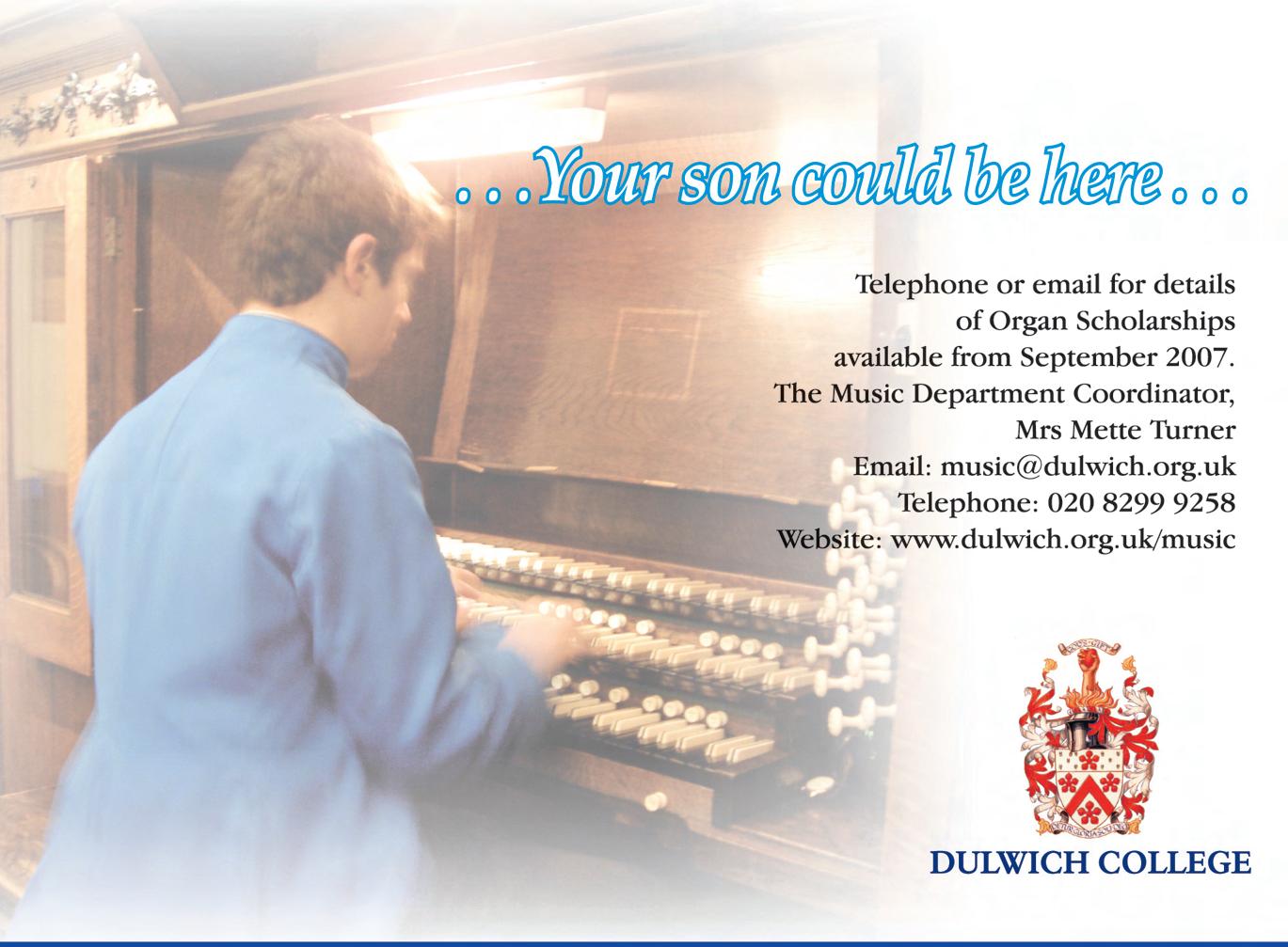
he was not a musical scholar or a professional director of Church music. He was primarily a devoted parish priest, chiefly at St Oswald’s church in Durham, the city where he had also been Precentor and Minor Canon at the Cathedral. His story is a tragic reminder of the opposition which Tractarians could face, because at St Oswald’s he was harried and oppressed by the Bishop of Durham, Charles Baring, a man of fanatical Protestantism. His behaviour led to Dykes’s breakdown and early death.
When Dykes heard that Ancient and Modern was being planned he sent seven hymn tunes which he had composed. They were all accepted and he was asked for more. In all, sixty of his tunes appeared in the new hymnal. Needless to say, they have not in every case retained popularity. At his worst he could sink into musical sentimentality, but his best work is firmly established in our legacy of hymns. For example, how could we be without his tunes for The King of Love, or Christian dost thou see them, or Holy, Holy, Holy, Lord God Almighty, or Eternal Father, strong to save? His setting of Lead, kindly Light, which is basically a part song, earned praise from Newman himself, who said, “It is not the hymn but the tune that has gained the popularity! The tune is Dykes’s, and Dr Dykes was a great master”. And, of course, there is his legendary tune for Nearer, my God, to Thee which I remember earned particular praise from the late Arthur Hutchings. (Might I here plead that Dykes’s tune for O come and mourn with me awhile deserves to be better known, and that we might even give an occasional airing to Ten thousand times ten thousand?) The renewed appreciation of things
Victorian which has restored The Crucifixion to favour should have no difficulty in appreciating the best of Dykes’ hymn tunes. As a good Tractarian his aim was to help Christian congregations to offer a worthier worship to God. In a sermon which he preached in St Peter’s Church in Derby in 1860 he stressed that our human worship is a sharing in the greater worship of the Heavenly Host, and, as he said, among the ways of offering our praise “we are to praise him with all outward expressions of reverence, and with the highest appliances of musical art and skill”. On the same day, and in the same church, Ouseley also preached, and voiced the same theme:
“Oh! It is a glorious thing to join with Angels and Archangels and all the company of Heaven in one chorus of rapturous adoration! It is a great privilege thus to realise the grand doctrine of the Communion of Saints, to bridge over the gulph (sic.) that divides us from the world of spirits, by a choral arch of which the keystone is ever Christ our Lord!”
It would be difficult to find a better expression of what the Tractarians restored to the Church of England – the combination of sound doctrine, reverence in worship, and the call to holiness of life all within the framework of a larger Catholic inheritance. How could such a vision, when it inspired musicians as well as clergy, fail to transform worship in cathedrals and parish churches? And we may justifiably take pride in the fact that it all began in this city.
 © Barry A. Orford 2007
© Barry A. Orford 2007
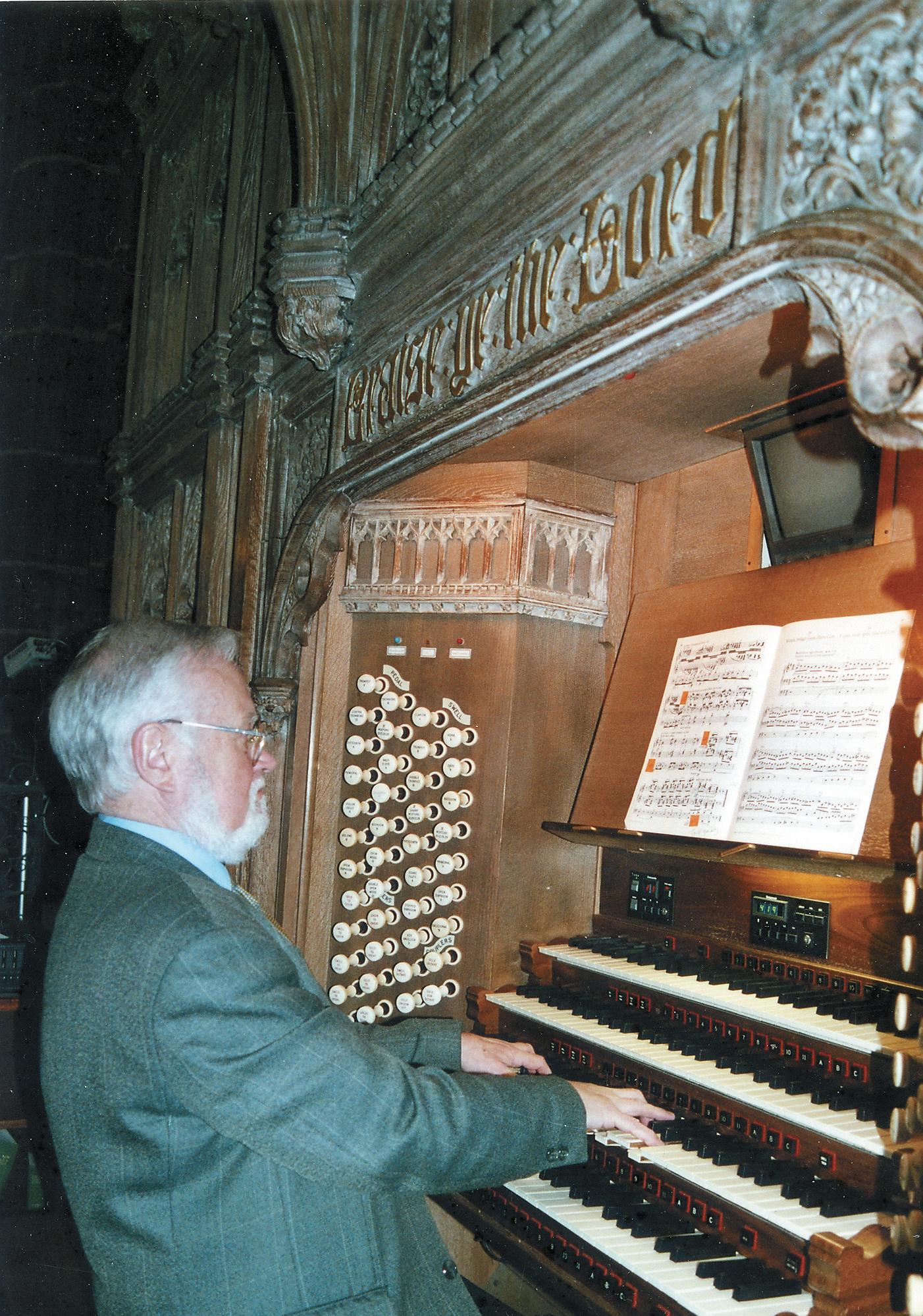
CW Roger, it’s ten years since you retired as Organist and Master of the Choristers at Chester Cathedral. In September you celebrated your 70th birthday with a special Evensong for which you chose the music and a celebratory lunch with many friends and colleagues. This must have been a very special occasion.
RF It was a very moving occasion and greatly appreciated. The singing of the choir and the organ accompaniments were superb and people I hadn’t seen for many years were there.
CW We’re sitting in your home, the Old Chapel, in North Wales. After many years in the cathedral close, how did you find this place?
RF We were happy in our 18th century house in Abbey Street, but we were thinking about the need to find our own home for the future and one which could house my practice organ. Browsing through an estate agent’s paper, we found a chapel for sale at a bargain price and decided to set about converting it. An architect had drawn up some plans, which weren’t ideal, so Gill (my wife) and I made our own drawings for the conversion. We have a house ideal for living, for teaching, performing concerts and even making recordings.
PR Your father was an accomplished musician. How did he guide you musically in your formative years?
RF My father was a splendid pianist, whose repertoire included all the Beethoven Sonatas and much Chopin (he played Saint-Saens Piano Concerto no 4 in London’s Queen’s Hall in the 1930s). He didn’t teach me officially, but taught by his own superb example, and was always there to guide, help and discuss ideas. He was a composer too and his knowledge and experience were readily available whenever I needed them. He had about a hundred 78rpm discs in his record collection and, when he was called up into the army in 1941, he said to my mother that I could play any of these while he was away. I learnt musical interpretation from some of the greatest, such as Toscanini, Beecham, Barbirolli and above all, Elgar. Dad had forty-eight 78s of Elgar’s music, most of them conducted by the composer, so nobody told me to interpret like this or that; it was just a process of absorption. I had a good piano teacher at my preparatory school, but her playing didn’t match my father’s and she said that I caused her more trouble than fifty of her pupils put together! She was probably right!
PR Who had the greatest influence on you as far as the organ was concerned?
RF I was a chorister at St Mary’s, Woodford in Essex and Harold Atkinson together with his successor, Godfrey Bramhall were fine musicians. I grew up with the sound of really good organ playing. Church politics dictated a move to All Saints’, Woodford Wells, with its Father Willis organ and Stanley Andrews, a superb musician, as organist. Stanley taught me most of my fundamental organ technique and he had a saying that ‘the amateur practises until he can do it right. The professional practises until he can’t go wrong’. I learned a lot, also, from teaching another boy, who didn’t have the benefit of a professional teacher. He was (and still is) a genius at mathematics and he proved to be a great perfectionist. In helping him solve technical problems, I helped myself a lot, too!
RF Bancroft’s School is run by the Drapers’ Company and St Michael’s Cornhill is their church. My headmaster at school suggested I approach Harold for lessons, but he put me off to start with! He didn’t reply to my letters, so I went up to him after one of his recitals at St Michael’s. He suggested that I play to him and after hearing me said I had been very well taught and that he would like to teach me Bach’s Trio Sonatas because they are the foundation of one’s technique. I was with him for four and a half years.
PR You have also studied the piano comprehensively. How do you think the organ and piano complement one another?
RF This is not fashionable thinking these days, but I believe that a good piano technique is the foundation for all good organ playing. One cannot learn the organ to a high standard without learning to get round some of the trickier passages on the piano. I was very fortunate, because when I became Assistant Organist of Hereford Cathedral, in Ledbury there was Professor Claude Biggs, who had just retired from the Royal Northern College of Music and who had taught John Ogden. Claude found holes in my technique, as I was using my fingers far too vigorously. He suggested that my finger movements should be much more economical and my five years with him were very valuable indeed.
PR You had three years as Organ Scholar of Christ Church, Oxford before going to Hereford in 1962. How did Hereford prepare you for the job at Chester?
RF Melville Cook, as organist of Hereford, was not only extremely exacting in the standards he required from his choir and his assistant, but was a consummate professional himself. His playing was very polished to an almost unbelievable degree and his handling of the organ was superb. With the choir he wanted everything just right, and this was in the days when the approximate was good enough in many cathedrals, as one could often tell by listening to Choral Evensong on the radio. Stanley Vann, H K Andrews, David Willcocks and George Guest were leading us all on to better things, of course and many younger musicians were following their example, but things change slowly in cathedrals and Melville had to struggle really hard to achieve the results he wanted. Certainly, his achievements were very much to be copied.
PR When you came to Chester in 1967, you had an organ that hadn’t been touched in nearly sixty years and needed a rebuild. How did you set about convincing the dean and chapter about the need for one?
RF I didn’t need to, because my predecessor, John Sanders, had already convinced them and there were estimates already prepared. Some were quite revolutionary, advocating changes that I couldn’t possibly have sanctioned. In the end, Rushworth and Dreaper were appointed because they had maintained the organ so well for many years. It sounded glorious, but, before 1969, was very primitive with lever swell pedals and electric actions that were worked from a six volt car battery!
CW Shortly after your arrival, the Choir School was closed down. How did you judge the significance of this and how did it affect the choir?
RF The school had been good when Canon Basil Hardy, the Precentor, was Headmaster, but .by the early 1970s, it was struggling to survive. Basil Hardy was a genius as a teacher and had experienced teachers to support him. There still were good teachers when I arrived, but they were seriously underpaid and the limited resources and unsuitable buildings of the school meant that it was unlikely that it would continue to get Ministry of Education approval for long. The Government was turning against private schools and Dean Addleshaw unilaterally decided that the school would close. I suggested that we throw the choir open to all schools in the area; we very quickly received considerable support and, for seven years, I didn’t even need to advertise for choristers. The boys continued to flourish and still do, while, since my time in Chester, so do the girls.
PR You have always made recordings and toured extensively as a recitalist and examiner. Did you make a conscious decision to keep up your organ playing despite the restrictions on practice time due to administration and choir training?
RF I would feel bereft if I didn’t play the organ and pursue this to the highest possible standard. If one is not getting better, one is inevitably getting worse! When the organ rebuild was completed I was greatly encouraged because Barry Rose suggested that he should make a recording for his Guild label. I was very nervous, but we produced a successful 45rpm disc. This gave me an incentive to telephone EMI and ask Brian Culverhouse if he would like to record another disc in his Great Cathedral Organ Series. He immediately said ‘yes’ and we did a disc that included Reubke’s Organ Sonata and it had good reviews. Michael Smythe of VISTA, who had recorded me privately in Hereford, asked if he could come and he sold his recordings to DECCA and to RCA as well as issuing recordings on his own label. Later, I did several cassette recordings for WEALDEN and SALIX but, soon, the digital age revolutionised the recording industry and, through Martin Monkman at AMPHION, I have continued to make recordings very regularly indeed. Some very fine organs have been featured on these discs and I’m particularly happy that one features a live performance at Lincoln Cathedral.
PR In 1972 you began the weekly organ recital series at the cathedral. Many famous names have played. Are there any performances that stand out in your mind?
RF Even before that series was started we had a recital that was given by Maurice and Madeline Duruflé that was astonishingly good. We paid them a very large fee and even had to go to Lloyds to insure against the organ breaking down! Their playing had a warmth and a brilliance, which I shall always remember.
CW You have given and still are giving many organ recitals both in this country and around the world. Which organs stand out as being particularly memorable?
RF In the USA, Grace Cathedral, San Francisco and St Peter’s, Morristown, New Jersey, have superb organs. The City Hall in Pietermaritzburg has a fine organ, as do Johannesburg and Cape Town Cathedrals. Sydney Town Hall has a glorious instrument, and Melbourne Town Hall, too, is very impressive. The Marktkirche in Wiesbaden, Germany (Max Reger was organist there) and Aarhus Dom in Denmark, have splendid organs, while one often finds small instruments which can give enormous pleasure. One of the pleasures of touring, of course, is the friendships which are created in the process; my wife and I now have friends all over the world!
CW I think you are being a little modest about your playing, Roger, as I know that you have played many exceptional recitals over recent years. Are there any pieces new to you that you hope to learn and possibly record?
RF Well, there always are. I would like to learn and record more of Vierne’s Symphonies and some Widor Symphonies Perhaps I should do some more Reger, too. I should like, also, to record some repertoire that I’ve known all my life, such as Bach’s Trio Sonatas. The organist of a church in Bavaria gave me a score of a Chaconne by Johann Nepomuk David, which I’ve played through and would like to find the time to learn and I have a Toccata and Fugue by Tertius Noble to learn and a Sonatina by Karg-Elert. I should like, too, to play more music by Christopher Steel. I commissioned his Variations on a theme of Guillaume de Machaut and I play his Variations on Croatian Carols and his Sinfonia for Organ and Strings.
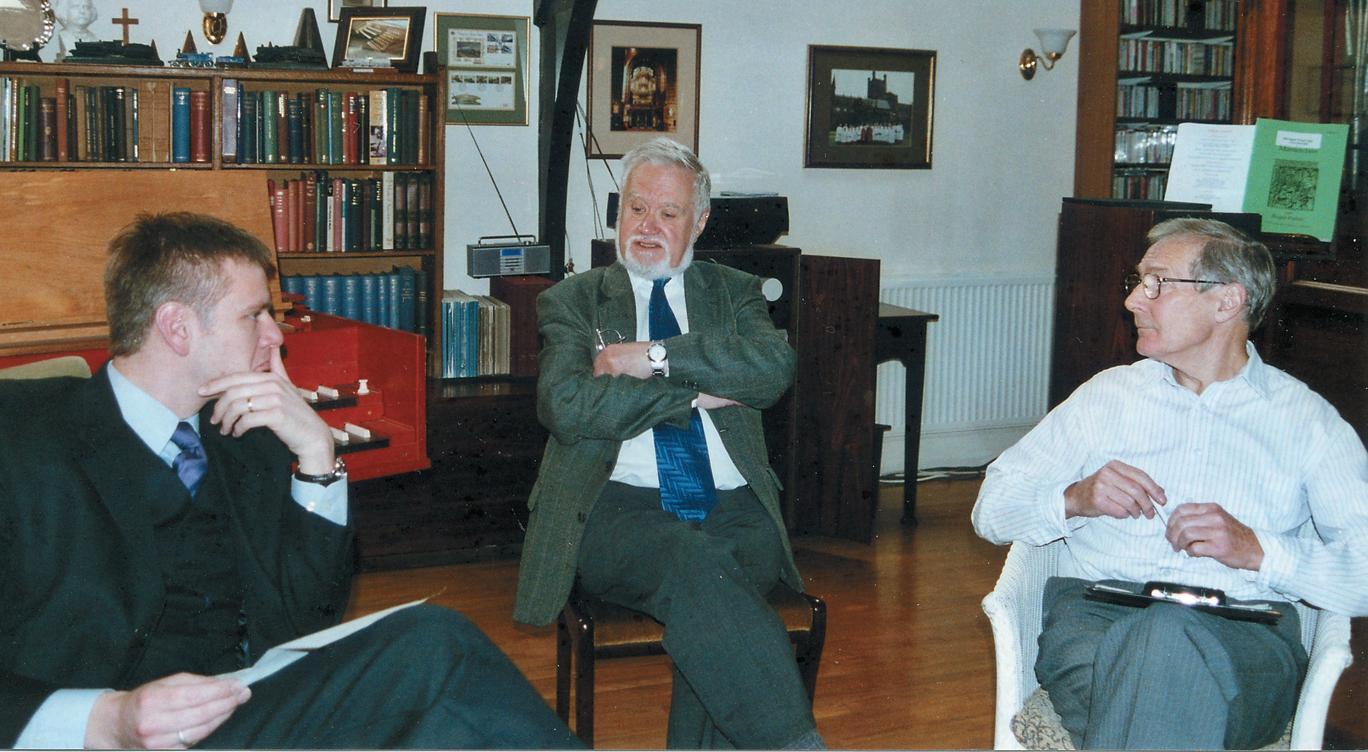
CW Do you suffer from nerves before a recital?
RF If I didn’t suffer from nerves I should stop playing! With experience it is possible to know how to handle nerves and to know what might upset you in performance. Having said that, one never knows when nerves may attack, but one has to recognise that, as one gets older, eye muscles don’t react as quickly as they used to. It’s no use giving a performance if one is under prepared. Everything has got to be in the memory with the copy there merely as an aide memoire.
CW I remember the late Brian Runnett telling me that the better he became known the more nervous he became, as more and more was expected of him.
RF To perform live one is always in competition with ones own past, whether in recordings or live performances and it can be unsettling to know that a distinguished recitalist is in the audience too, as there’s then nowhere to hide! The other side of that coin is to know that some other players are equally nervous when I’m listening to them!
PR 1992 saw the 900th Anniversary of Chester Cathedral and a busy year for the choir. What was the highlight musically for you?
RF We did a performance of Elgar’s The Dream of Gerontius with the Hallé Orchestra and Chorus, with the cathedral choir as the semi-chorus, and that was very exciting. The Royal Maundy was a very moving occasion that year and the combination of our own choir and the Chapel Royal Choir gave a splendid sound, which I shall never forget.
PR The music of a cathedral is its life-blood. Was there ever a time when you doubted the support of various deans and chapters that come and go?
RF The dean and chapter have always been supportive if not always understanding. They wondered in the 1970s, after the school closed down, where the choir was going and how we should continue both financially and how the boys would be educated. They also worried about getting good Lay Clerks –at one stage I had no tenors at all and some of the older boys had to sing tenor!
PR How do you think the job of a cathedral organist has changed over the last forty years?
RF The amount of administration has multiplied I should think at least ten times. When I first arrived in Chester there would be a morning practice with the boys, followed by some letter writing, or I might do some diocesan organ advisory work in the county and return for choir practice and evensong. Now there are so many meetings to attend and so many people to consult. By 1996 we had myself, my assistant and a second assistant, plus an organ scholar, and my wife doing unpaid secretarial work just to keep up. Much as I miss the job I’m glad I’m not doing it anymore, as I am not young enough to cope with all those pressures!
PR In your 70th year you are busier than ever and still making recordings, going on tour and you have just published four volumes on teaching and performing on the piano and the organ. What gave you the impetus to write such a work?

RF A number of years ago I realised that a number of things were coming up in lessons on a very regular basis and I wanted to put something down in writing to help a wider range of players. As Features Editor of Organists’ Review there was an opportunity to contribute short articles for reluctant organists, those pianists who play in church because there is no-one else to accompany the hymns. Positive feedback came from organists here and from abroad, so, when I finished with Organists’ Review, my wife said I must get on with my book!
Over the last ten years I’ve been developing teaching methods which are not all conventional and new methods have continued to suggest themselves and have proved to be effective. Whether these volumes will benefit others, I don’t know, but I know I’ve benefited and found myself practising in a more focussed way since I completed it! It is not a tutor, merely a book that suggests things. Writing it has been a great experience and Adrian Self at ANIMUS has given it tremendous support.
CW In addition to cathedral music, you have a great interest in attending orchestral concerts – an important part of your life.
RF Indeed! I feel that one must always be taking in outside influences and, if you are not feeding, then you can’t give out musically in the way that you should. Also, I think organists should treat the organ as part of the musical scene in general. If one just pursues organ playing on its own, then one becomes very, very blinkered. An organist who doesn’t listen
‘I would feel bereft if I didn’t play the organ and pursue this to the highest possible standard. If one is not getting better, one is inevitably getting worse!’
regularly to string bowing or a wind instruments’ phrasing, for example, is bereft of an awful lot of information that is needed in order to give good interpretations.
Another strong influence has been to act as piano accompanist for that prince of lay-clerks, Gordon Pullin. Eight CDs of The English Tenor Repertoire demonstrate what a wonderful heritage our British composers have given us.
CW Of the professional musicians I know, it has always surprised me how few of them are really interested in having first rate HI-FI equipment at home for their CDs. Now you have a good, large system here and we have had a lot of fun improving it and this is clearly important to you.
RF Very important. I remember the first time I moved from an adequate HI-FI to having a QUAD amplifier of a very high standard and realised that I had a completely new record collection upon hearing the discs again! The advent of Castle Acoustic’s magnificent “Winchester” loudspeakers and a recent change from QUAD to ORELLE amplification has given me another new record collection even though the discs haven’t changed! Even listening to recordings made in the 1920s one can hear so much more detail than would ever have been thought possible when they were made!
CW You must have a fund of amusing stories from your time as Master of the Choristers at Chester!
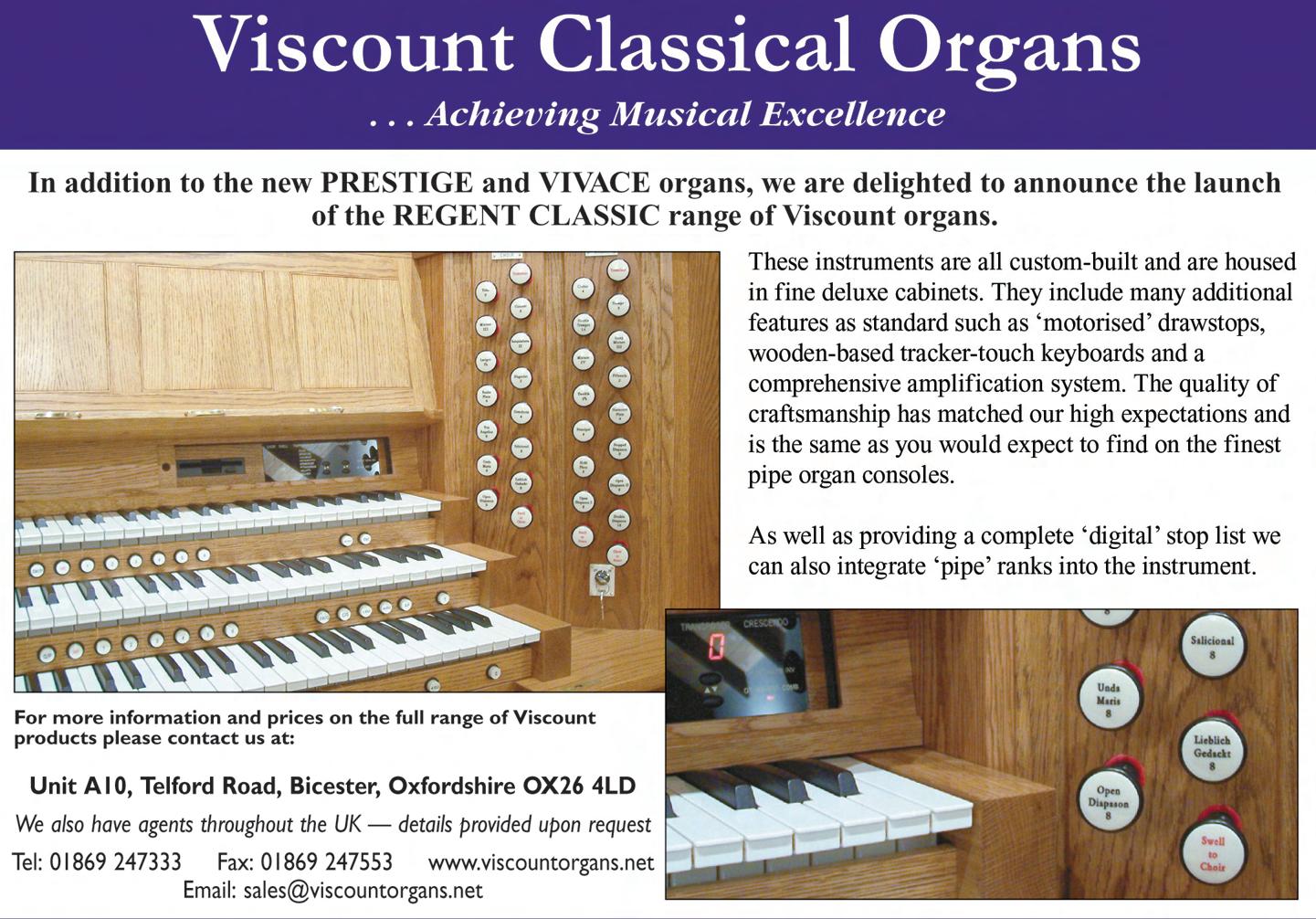
RF Oh dear! Choristers should be respectful, of course, but I love repartee! I can remember one seven-year old going into
his first service and I said that he should watch the beat very carefully. He didn’t look up once, so I asked why – perhaps he thought I was very ugly! His reply was ‘No! You’re not very ugly, only a little bit ugly’!
On Christmas Day we’d just had a lovely evensong, with every seat in the Quire taken. After the service, I thanked the choir and, when the lay clerks had departed, discussed the term’s work with the choristers. I pointed out their many splendid achievements, and said “mind you, there have been times when you’ve nearly driven me to suicide!” “That’s all right, Sir” said the head boy, “We’ll try harder next term!”
CW One abiding memory I have is an FCM gathering at Chester when the late John Sanders came to speak and we have a picture of you, John your predecessor, and our current organist, David Poulter. I think that is unique in the annals of Chester. Sadly, John died very suddenly only a few months later.
RF What a pity my old friends and former Chester cathedral organists Malcolm Boyle and Roland Middleton couldn’t have been there too! Malcolm’s widow Ruby is still alive and I’ve always been grateful to her for her total support and encouragement. John Sanders played a large part in the musical life of this country, particularly in the Three Choirs Festival at Gloucester and I know that many will join me in feeling his loss very keenly indeed. Looking at the present day, though, David Poulter keeps up a tremendous standard in Chester and the cathedral is very fortunate indeed to have him.
Twelve year old Joseph Wicks, Bishop’s Chorister (head chorister) of Salisbury Cathedral Choir and from Salisbury, assumed the role of Boy Bishop during Evensong in the Cathedral on Sunday 10 December at 3.00pm. In the ceremony, the Bishop of Salisbury gives his staff and ring to Joseph – who is dressed in replica Bishop’s regalia – and installs him on his throne. The service is a celebration of an ancient tradition and also an acknowledgement of the important part the boy choristers play in the cathedral’s musical life. As Boy Bishop, Joseph will lead the prayers, bless the congregation and receive the collection. The highlight of the service is undoubtedly the sermon which is both written and delivered by the Boy Bishop. This Boy Bishop ceremony is a reconstruction of a medieval ceremony. Around the time of the Feast of the Holy Innocents, the Church hierarchy was reversed: the chorister ascended the Bishop’s throne and the Bishop took a lower place. This happened during the singing of the Magnificat with its revolutionary proclamation ‘God has put down the mighty from their throne and has exalted the humble and meek’. The ceremony is a lesson in humility and recognition of the wisdom of youthful innocence. In mediaeval times the Boy Bishop would have taken office from the Feast of St Nicholas (6 December) to the Feast of the Holy Innocents (28 December).
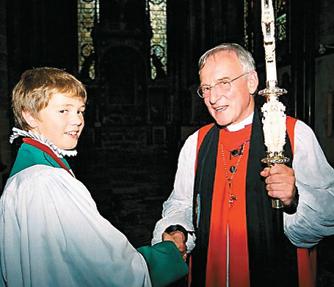
The Dean of the Metropolitan Cathedral (Canon Anthony O’Brien) has announced that Timothy Noon has been appointed Director of Music in succession to Mr Terence Duffy, who is due to retire at the end of July. Timothy Noon is currently Organist and Master of Choristers at St Davids Cathedral, Pembrokeshire, and will take up his new post in September 2007. Timothy was born in 1974 and began his musical career as a chorister in Hereford Cathedral Choir, learning the organ with Dr Roy Massey. At the age of seventeen he was appointed Organ Scholar of Canterbury Cathedral, and the following year became Organ Scholar at Christ Church, Oxford where he also read for a degree in music. In 1993 he became a Fellow of the Royal College of Organists, winning six prizes in the examination, including the coveted Limpus prize. On graduating with First Class Honours, Timothy was appointed sub-organist of St Patrick’s Cathedral, Dublin. He returned to Canterbury as Assistant Organist in January 1997 where, in addition to his work at the cathedral, Timothy was organist of the King’s School and Musical Director of The Canterbury Singers. In 2001 he was appointed to St Davids Cathedral. His wife, Sarah, has been appointed Director of Studies at Chetham’s Music School, Manchester and also takes up her new post in September.
St Davids Cathedral now has a new piano for its newly refurbished choir room to aid the rehearsals of its choirs thanks to a generous grant from the Friends of Cathedral Music. The piano is a 1979 Yamaha six foot grand supplied by Besbrode Pianos of Leeds.

Over thirty services and events took place in Salisbury Cathedral during Holy Week and Easter Day this year beginning with a performance of Bach’s St John Passion and finishing with Festal Evensong on Easter Day sung by the boy and girl choristers and men.

A particular highlight on 2 April was a performance of David Halls’ Pilgrimage, a setting of the poem Pilgrimage to Salisbury by Hugh Dickinson, Dean Emeritus. This cantata for tenor solo, string quartet and piano is performed by Hugh Hetherington, The Eberle Quartet and David Halls. The Eberle will also perform Webern’s meditative Langsamer Satz. Easter Eve, the day between our commemoration of Jesus’ death and the celebration of his Resurrection, was observed as a day of waiting, watching and silent prayer. Throughout the day until 6.00pm the Nave is kept as an area for quiet meditation and prayer. At 7.30pm Vespers for the Burial of Christ will be followed by an All Night Vigil. Easter Day services began at 5.00am with The Dawn Liturgy which starts on the lawn at the West Front of the cathedral where the great bonfire was lit. The Bishop of Salisbury presided. This service was followed by breakfast served in the Chapter House. Director of Music, David Halls, said “Holy Week and Easter Day contain some of the very finest church music. The use of an orchestra on Easter Day at 10.00am will make this celebration of Christ’s resurrection even more special”.
The Very Rev’d June Osborne, Dean of Salisbury and Chairman of Governors at Salisbury Cathedral School, announced the new Head Master for the school was Paul Greenfield.
Paul has already had experience of working in two choir schools. He was housemaster and choristers’ tutor at St John’s, Cambridge and for the last 12 years he has been Head of the Lower School at Norwich School. In between he was head of history at one Yorkshire school and then Master of Lisvane School, Scarborough. So he comes with a wealth of experience which will equip him well as he leads the school into its next stage of development. Paul is married to Jayne, herself a teacher, and they have three children, their daughter having recently been Head Chorister in the Norwich Choir.
The Dean continued: “We will look forward to welcoming them next summer, with Paul taking up his responsibilities from September 2007”.
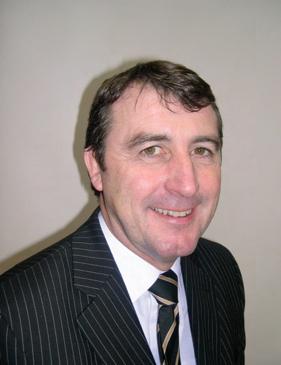
Hereford Cathedral Choir recently toured California and a great time was had by all with four concerts, four services and two school assemblies being sung. One of the little additional ‘sings’ was a performance of Charles Wood’s Hail, gladdening light under the dome at the State Capitol, Sacramento. Although the Governor, Arnold Schwarzenegger, was not there to hear us, the resident staff and many visitors seemed to enjoy it! In addition to singing we managed a little sightseeing ranging from the Getty centre and Huntington Library to the USS Hornet (aircraft carrier involved in rescuing the Apollo 11 capsule) and, of course, walking (in some cases running) both ways across the Golden Gate bridge.
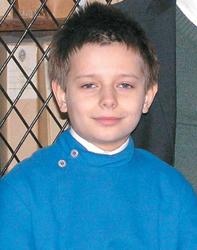
Twelve year old Adrian Walerowski has become the first Polish boy to become a chorister and don the traditional blue cassock and ruff at Hereford Cathedral. Adrian, was made a full chorister with his fellow probationer Nicholas Entwistle on Sunday 4 February.
‘We were delighted to be able to welcome Adrian into the choir as a probationer last summer and are grateful to Julia Lunn from St Thomas Cantilupe School for letting us know about his musical potential’, said Geraint Bowen, Organist and Director of Music. ‘For a boy who spoke no English at all on arrival in the UK 15 months ago, he has learnt the ropes remarkably quickly and has become a great asset to the choir, with the other boys also benefiting from the new cultural influences that he brings with him’.
Since joining the choir Adrian, along with his fellow probationer, has sung at the Three Choirs Festival, broadcast on Radio 3 and spent his last birthday with the choir on tour in California. Further information about choristerships can be obtained from Geraint Bowen (01432 374238 or organist@herefordcathedral.org).
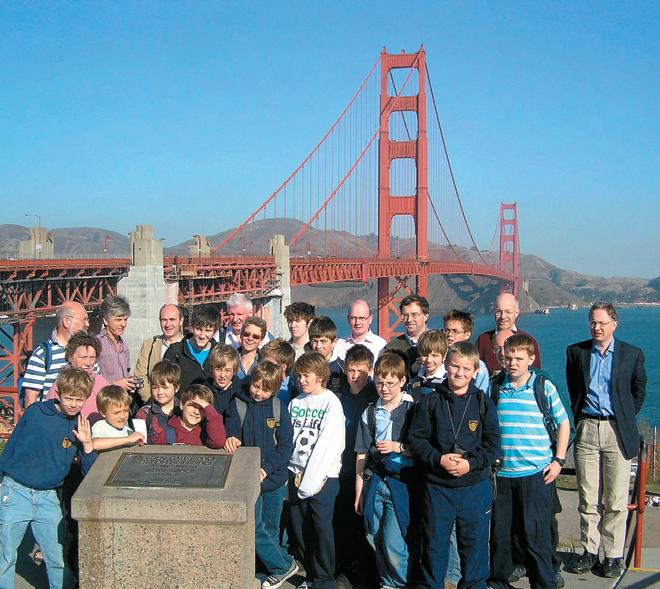
Former St John’s College, Cambridge, Organ Scholar Andrew Nethsingha is returning to St John’s as Director of Music taking up his post on 1 September 2007. He succeeds Dr David Hill who will take over from Stephen Cleobury as Chief Conductor of the BBC Singers at the end of the current season. Andrew has held Organ Scholarships under Christopher Robinson at St George’s Chapel, Windsor Castle and George Guest while reading music at St John’s College. Currently, Andrew is Director of Music at Gloucester Cathedral, Artistic Director of the Gloucester Three Choirs Festival and Musical Director of Gloucester Choral Society.


In this our 80th Anniversary year it is good to profile some of our musical developments, in a small cathedral, not acoustically blessed, in a multi cultural city.

Originally built in 1930 by Harrisons from pipework including ranks by Snetzler and placed in exalted position in the West Gallery, our four manual Organ was re-built, again by Harrisons, in 2003 with the generous financial support of the Smith family, owners of a local dairy firm. We preserved the character of this instrument, rich in orchestral colours and added six new stops. Our Tuesday Summer recital series has been going since 1945 and recent players have included Thomas Trotter, Roy Massey and David Saint as well as prize winners from the Royal Academy of Music – giving a platform for these excellent young players. The organ has a digital play back system which enables prerecorded pieces to be played in the absence of the organist, useful when exhibiting flower displays and the like!

Leicester-Japan links were present before I came to the cathedral in 1994, as our diocese was linked to the diocese of Yokahama. We have taken our choir (44 of us) to Japan in 1998 and 2005 and have an ongoing friendship with Rikyo University and Schools in Tokyo. We exchange visits and have entertained choirs, organists, koto ensembles, a school orchestra and a variety of clergy and parish visitors in our cathedral; this is part of our wider mission and outreach. Japan has a Christian presence of about 2 per cent of the population. In 2005, 33 of our young people sang in Tokyo, Nara, Kyoto, Yokohama and Toyama, where we sang at the opening of a new church and had a live link up with Radio Leicester. A high point was walking with all our choristers in the Japan Alps near Toyama, ringing bells to keep away wild bears. Japanese Organ students have studied with me in Tokyo and Leicester and we value the link with Rikyo’s Director of Music Scott Shaw.
Recruiting for the Choir is ongoing, needing time and regular visiting of schools and much communication with teachers and prospective parents. Without a choir school, parents are
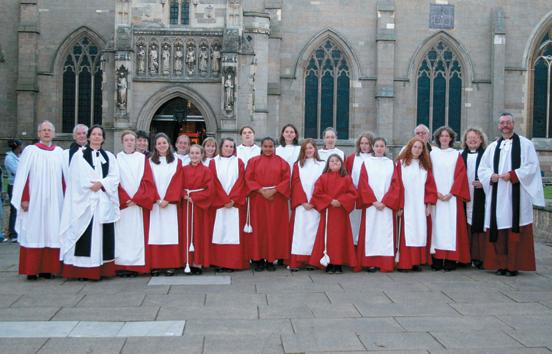
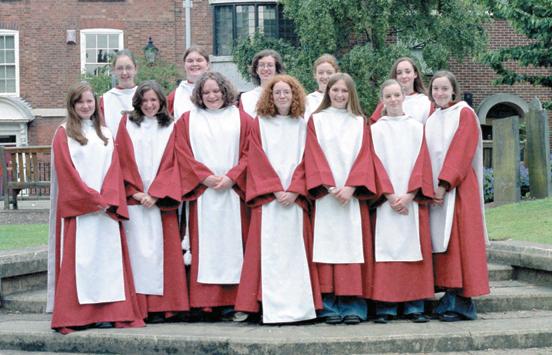
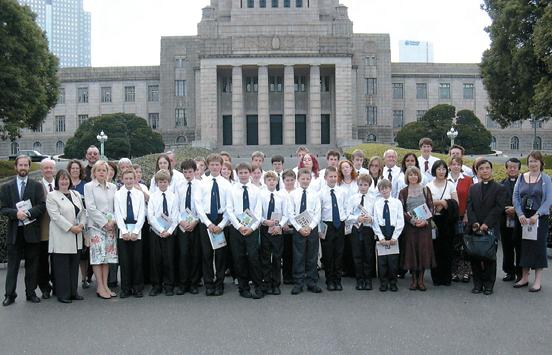


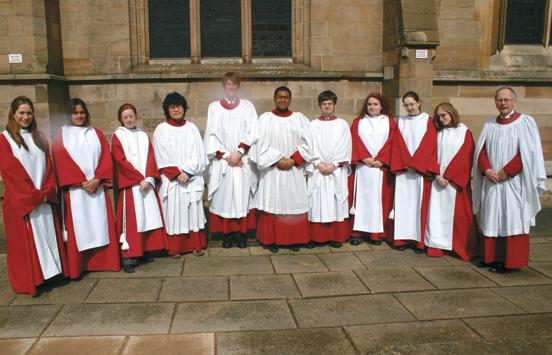
needed to transport their boys and girls (we have two separate teams, that join together as required). Only when parents see the enjoyment and active learning of their children do they fully ‘sign up’ to the commitment. I have feeder sessions with youngsters from age six on Saturday mornings and after school on Mondays. The frustrating thing is that there can be unpredictable and fallow years in recruitment of able children, despite consistent effort. Amongst the rewards, are that after voice change, the boys develop promising A T B voices and there is good social interaction with the girls and the songmen. Former choristers have achieved scholarships to Trinity, Christ’s and King’s Colleges in Cambridge and to the Royal College of Music.
Music’s ministry is part of our teamwork, mission and vision at Leicester Cathedral whose outreach is in a variety of forms. Our contribution has enabled a supply of young people and their families to be part of a growth and spiritual development in our city centre environment. There are many challenges in our multi cultural city.
We combine with neighbouring Cathedral Choirs for Three Choirs evensongs: in recent years with Southwell, Derby, Birmingham and Coventry Cathedrals. These special musical
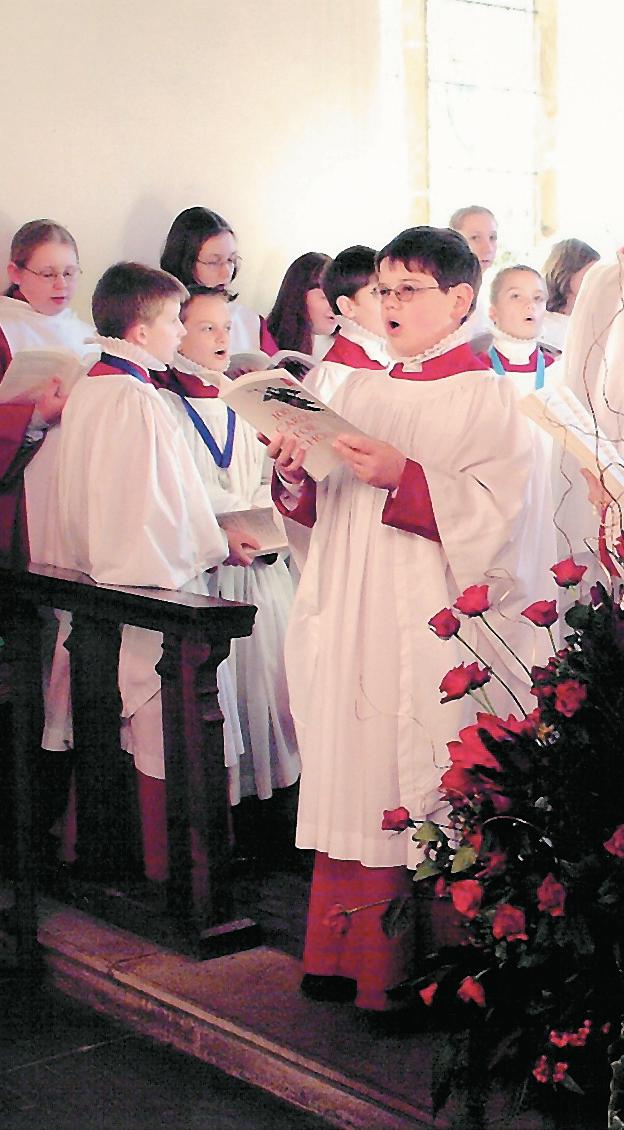
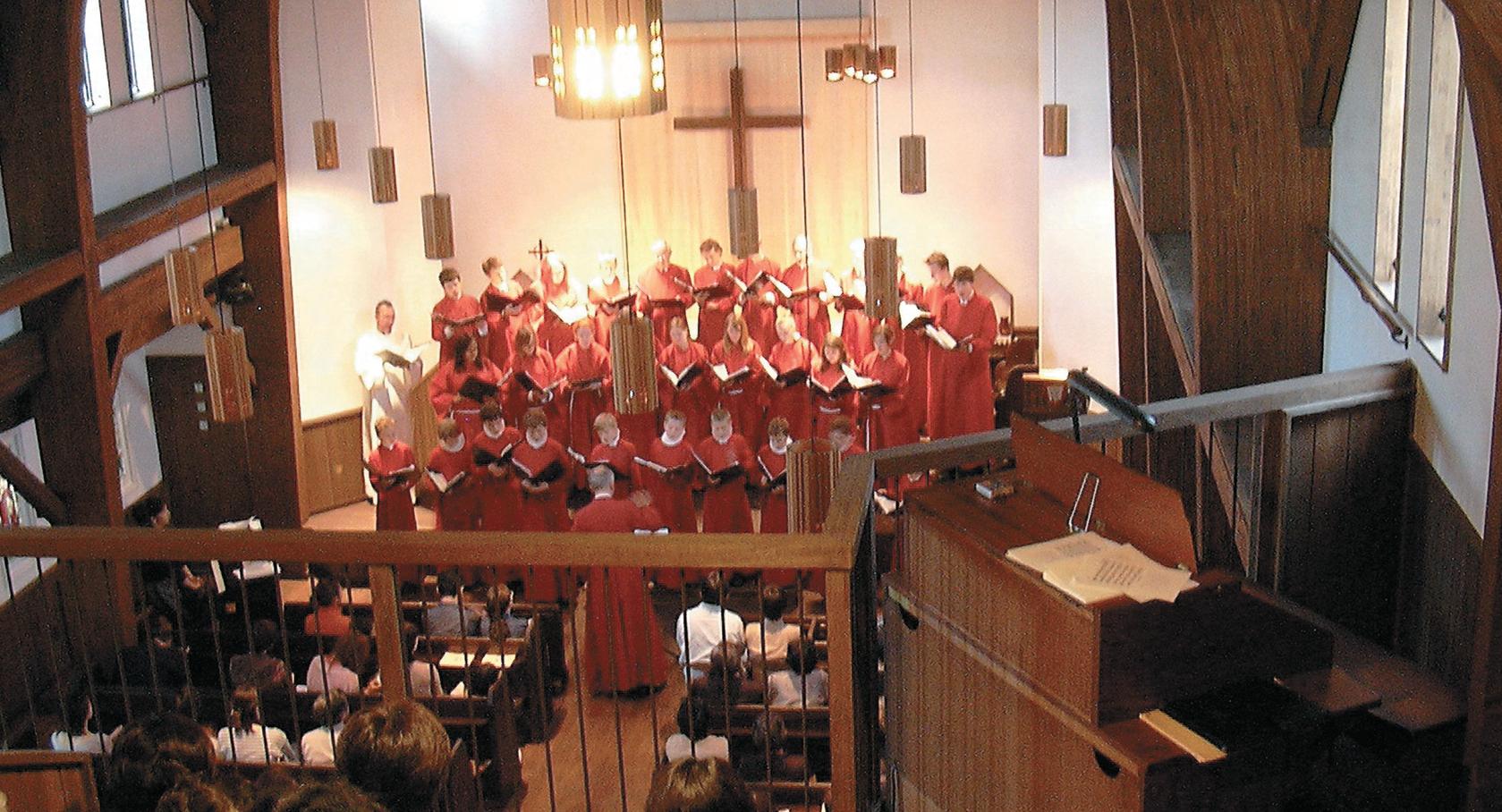
‘
Only when parents see the enjoyment and active learning of their children do they fully ‘sign up’ to the commitment.’
occasions, in each other’s cathedral, have been a delight for choristers and congregations in the Midlands. With our operatrained Precentor Canon Stephen Foster, we sing out in the diocese, visiting Mount St Bernard’s Abbey, Hallaton and Thorpe Arnold Parish Churches recently, with a regular training week at Launde Abbey and visiting other cathedrals. We are particularly grateful for the FCM endowment of 25k which will help in financing one of five Choral Scholarships for University students.
An educational charity committed to enabling the best use of music in worship, church life, and the wider community.
Voice for Life
A training scheme for singers of all ages and abilities.Young Voices Festival services for school and church choirs.
Sacred Music Studies
Certificate of Higher Education (DipRSCM) for anyone leading music in worship, in association with the University ofWales, Bangor. Part-time and distance-learning options.
Short Courses
A range of residential courses for singers and organists, held in beautiful locations, led by experienced and inspirational directors. Specialist courses for young people.
INSPIRATION, TRAINING, ENRICHMENT, ENJOYMENT
Royal School of Church Music

19 The Close, Salisbury SP1 2EB 01722 424848
education@rscm.com
www.rscm.com
Pre-Preparatory and Preparatory Day and Boarding School for Boys and Girls 3-13 years.
•High quality education and traditional values
•Co-educational policy within a prep school environment
•Opportunities for boy choristers to sing in StGeorge’s Chapel

•Five day academic week with flexible boarding arrangements
•Purpose built & equipped Nursery & Pre-Preparatory Dept
•Extensive playing fields and heated indoor swimming pool
•Secure environment for pupils within the Home Park
SATURDAY OCTOBER 6th
CHORAL AUDITIONS
For Boys (7 1/2-91/2 years old)
Saturday November 3rd 2007
Open Auditions will be held for Choristerships (worth up to 50% of the school fees.)
Enquiries to the Registrar Rebecca Farha, J.Roger Jones,Head Master St George’s School,Windsor Castle Berkshire SL4 1QF Tel:01753 865553Fax:01753 842093
e-mail:registrar@stgwindsor.co.uk
Website:www.stgwindsor.co.uk

In 1994 Geoffrey Burgon wrote for Cathedral Music on the significance of words and how he chooses them for his compositions. Last year a new CD was released of his choral

AP: How did you go about picking the music and choosing the choir for this CD?
GB: All the music on this disc was written before I knew which choir was going to perform it. Having now done it, I am pleased with the results. I did not go for a cathedral choir at first, as the music originally chosen was not all liturgical, There was going to be one piece with adult sopranos so I thought of Stephen Layton’s group, Polyphony. Then Simon Perry at Hyperion sent me an album of Wells Cathedral and I was so impressed with the girls’ choir that I went for it. The sound is different but not that different - I am sure that many people listening to it cold on the CD player may not twig straight away that it is girls, then having decided on a cathedral choir I decided to include only music that was useful liturgically.
AP: So no preconceptions about girls?
GB: No. For me what came out of this recording session was the professionalism of the girls’ choir, (which of course includes men). The CD was all recorded in four sessions from 6:30pm to 9.00pm and the choristers gave their all; they were as bright as buttons and that has to come down to Matthew Owens. Having said that about girls the recent Handel Messiah recording by New College Choir of boys and men, has a tremendous quality, especially from the treble solos. The quality of the boys on this disc highlights the unique tradition in the UK.
AP: When did you become a composer?
GB: Well I started late. I was playing the jazz trumpet when I was 14. From there I had this urge to write music, so I taught myself notation. I went on to study trumpet and composition with Peter Wisehart (a former pupil of Nadia Boulanger )at the Guildhall. When I left music college I composed film and TV music, because I vowed I did not want to be a teacher.
AP: Your famous Nunc Dimittis, used on the television programme, Tinker Tailor, Soldier, Spy has been changed - why?
GB: I have arranged it for SATB mainly because it became SUCH a popular piece and now small parish choirs can sing the piece and it gives the whole choir
something to do rather than a soloist.
AP: How did you come to write the Nunc?
GB: The director of Tinker Tailor was an ex-chorister at Durham Cathedral and he was going to use a setting of the nunc dimittis that he knew from his chorister days. So I said can I write a version? He agreed. so Iwrote my setting very quickly, hastily put together a ‘demo’ with a countertenor friend and luckily the director loved it!
AP: Are you a religious person?
GB: I am not a church-goer; I’ve never been comfortable with the institution. I was drawn to composing church music from the music itself. It is not in my family background. I was drawn to the Renaissance, Tudor and early music periods. I once arranged THE Guillaume de Machaut Messe de Nostre Dame. I love music of that period and I love words, especially from religious authors such as St John of the Cross - in essence what he is saying in words I am trying to create using music. What religion means to artists in general, and I don’t want to sound pompous, is finding a way of expressing something which is difficult to articulate.
Pop music for example is really an everyday thing: in general boy meets girl, falls in love, etc which is on a small scale. Classical music, on the other hand, is, I would describe, on a more epic scale, perhaps more on a universal level. Church music is universal not domestic and classical composers get to grips with the bigger picture.
All artists tend to confront religion at some point. It’s always been there and there is a need for it. It was Haydn who signed off his compositions ‘To the glory of God’. Now I don’t know what God is but I am trying to create something which is as perfect as possible. I know that sounds grand but at the end of the day, God is an image of perfection, so in my music trying to get to that level is important.
AP: You have a jazz background. There are some who think that jazz Evensongs are a good idea. As a genre does it lend itself to being used in a liturgical sense?
GB: Well I am not drawn to do a jazz
liturgical work as I have not found an effective marriage yet. On the other hand gospel music comes from a sense of jazz. Black musicians have used gospel traditions in a way going back to jazz origins – free rhythms and incredibly intense. Duke Ellington tried marrying up jazz with a Mass but generally I am not keen on arranged jazz.
What I like is the improvisatory aspect. A good example of what I mean by this is hearing the Ray Brown Trio at the Cheltenham Festival one year. with just piano, bass and drums they gave a concert that was as good as any I’ve heard in any genre, all extemporised, with not note of music in front of them and of an unbelievably high level of virtuosity.
AP: What on the CD was the most difficult piece to write?
GB: Probably the Te deum, a text that gets used regularly. I found myself with some spare time and saw it as a good challenge. I composed something and then put it away for a year, after which I showed it to Barry Rose, who said it was too long, with repeated words at the end. So I cut it to get it more concise by a minute or so. It’s not the most original piece on the disc but I will be interested to see if it gets taken up
AP: What is a favourite?
GB: Perhaps the Short Mass. Maybe because it was my first piece of liturgical music, it is simple, unaccompanied and one can hear the influences of Britten. My earliest influences were Britten, Stravinsky and I suppose Messiaen, as opposed to the post-Viennese school that was all the fashion in the 60s and 70s when I was a student and starting out composing.
AP: So are they your favourite composers?
GB: Well I couldn’t be without Bach –I love the way he balances the cerebral and the emotional.

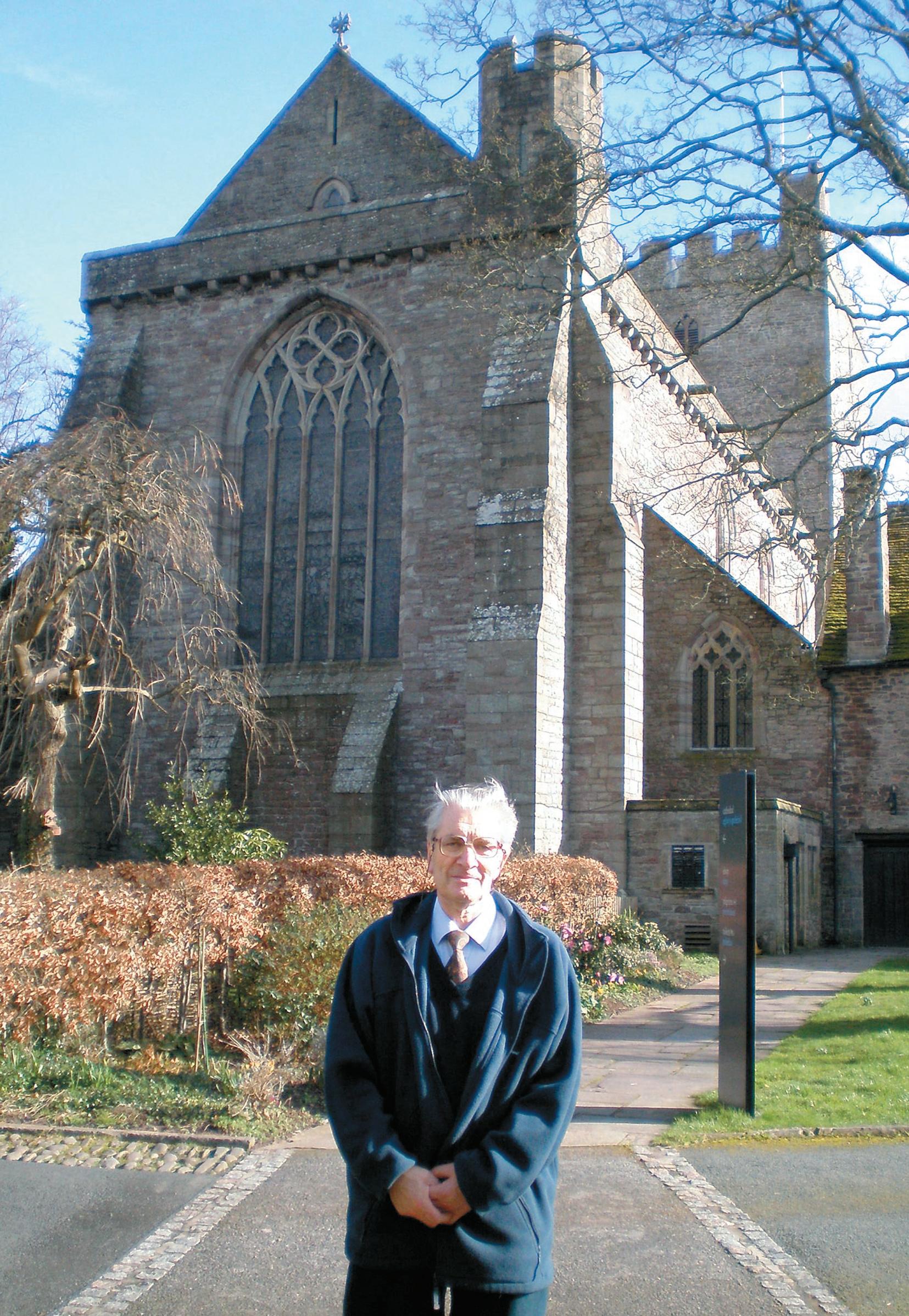
After 41 years at Brecon Cathedral David and Hazel Gedge hang up their cassocks Trevor Godfrey went to meet them on the day that I drove down to Brecon to meet David and Hazel Gedge, there was to be an evening service in the cathedral, being Ash Wednesday.
Two days later I received a letter from David (written in his incredibly neat handwriting) in which he said “The service last night actually was a lovely affair, we were all ‘ashed’, then afterwards I took the youngsters down to the chip shop – they had done so well with what we call the Allegri ‘Misery’ and Purcell’s Hear my Prayer”.
That immediately gives one a picture of the warmth and character of this incredible couple. As Organist and Choirmaster and Assistant Organist respectively, they have not only given to the music of Brecon Cathedral over a period of 41 years but they have demonstrated a very real love for the people who make the music and the children of the choir in particular, a love which is genuinely reciprocated.
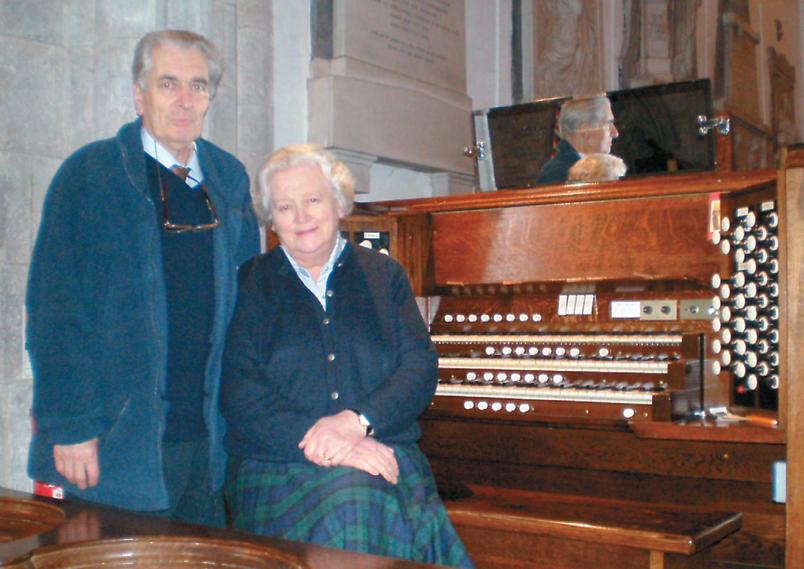
In an open letter written last Christmas David said, “The major happening of 2006 turned out to be the Cathedral Singers’ concert in July but for an unfortunate reason. Three pages from the end of Haydn’s Creation, I suffered a stroke which brought the performance to an early conclusion. Those not watching the conductor were the last to stop! Five weeks in hospital saw me on the road to recovery; so many prayers were said for me. Hazel and I have brought forward retirement to Easter Day, we think it safest, also my consultant advised it.” We are glad to report that David has recovered well.
In his modest way, David had forgotten to mention in his letter that last year both of them were awarded the Cross of St Augustine by the Archbishop of Canterbury at Lambeth Palace for their outstanding service to the Church and the wider community, a rare honour as there are only 10 to 12 recipients each year.
I met David and Hazel at their home, Garth Cottage, which used to be a school, across the road from the cathedral, a home full of pictures, clocks and meaningful memorabilia plus two pianos, a grand (a wedding present) and an upright which was Hazels. Among the pictures were oil paintings of some of David’s ancestors going back to the mid 18th century. When I first arrived Hazel was out, teaching at a local school, so David and I talked in the kitchen, accompanied by the gentle ticking of a large wall clock and the snoring of Nutmeg their pug dog, who slept contentedly on an organ stool. There was an amazing amount of crockery carefully displayed on a Welsh dresser, an indication of the hospitality which this couple regularly dispense at their home. “Hazel is cracked on cooking” as David described
it, “and she does an enormous amount of entertaining – it’s a pleasure not a chore. She is also very good on interior design”.
David Gedge was born in 1939, the son of the Vicar of Holy Trinity Church, Lambeth, a tough area near Waterloo Station in the diocese of Southwark His father, Paul was not only interested in drawing young people into his church, but also in their everyday existence, a trait which David has emulated easily and naturally at Brecon. “My mother did all she could to nurture my musical talent teaching me the piano and violin and encouraging me to join the choir of nearby Southwark Cathedral. It became my second home and I loved its music and everyone connected with the place. In charge of the music was the legendry Dr E. T. Cook who was for four years Assistant Organist at Worcester Cathedral and heavily involved in the day-to-day running of the cathedral services. When I joined the choir the top eight boys were all between 14 and 16, consequently the sound was big and mature and it benefited from the more intelligent musicianship that comes from age and experience. My lasting memory will, of course, be of singing as a treble in the choir at Westminster Abbey at the Coronation of Queen Elizabeth II”.
At this stage David said how much he regretted the fact that Choral Matins is now usually heard only on Sunday mornings in our cathedrals. “This is sad”, he said, “because it has resulted in the loss of one-third of the British cathedral music repertoire and this includes many fine settings of the Te Deum and Benedictus which are now in cold storage”.
Eventually David entered the Royal Academy of Music and one really needs to read his recently published book, A Country Cathedral Organistlooks back, to live this fascinating and impressionable part of his life. He recalled, “Here I not only mixed with the great and the good but also young musicians many of whom went on to hold senior posts in the realm of cathedral music. I joined the London Junior Orchestra as a viola player and during this time was appointed as organist to St. Mary the Virgin, Primrose Hill, north London, where the vicar once was the celebrated Percy Dearmer largely responsible for producing the epoch-making English Hymnal”.
During this period, David founded and conducted the Thomas Morley Chamber Orchestra and due to the indisposition of Harold Dexter for a concert at Southwark Cathedral, he was asked to take over at short notice.
“Unbeknown to me”, he recalled, “at that concert was a young Welsh music student, Hazel Davies who, like me, was a pupil of C. H. Trevor at the R.A.M”.
“Is this how your remarkable partnership commenced?” I asked gingerly. “Yes”, David replied, “and I slowly worked my way into her confidence and to marry seemed the natural thing. She was a considerably better organist than me, having at the end of her first year won the prize awarded to the student who gave the best performance in the annual examinations and in her second year she won an organ scholarship”. To this day, Hazel, handles her considerable ability on the cathedral’s three-manual Hill organ with great modesty, indeed this is an attractive trait of both of them for David is very modest about his achievements with the Cathedral choir and as conductor of the Gwent Chamber Orchestra and arranger of endless musical events in the area. One senses that everything they do is a joyful service for others.
Hazel joined us at this juncture, fresh from teaching. She talked about the family home where she was brought up at Kidwelly, mid-way between Llanelli and Carmarthen, to which they will retire after leaving Brecon. Two lovely paintings of the castle there adorn the wall of their kitchen. As they near retirement and take their leave of Brecon I asked them if after 41 years if they would leave with a sense of regret, sadness or fulfilment. “That’s very hard to answer”, said David, “we’ve had such a happy time here in cathedral music and like all good things, there has to come to an end. I will be glad not to have the worry about getting sufficient choir members on occasions of sickness for example, which makes it difficult to keep things going. But I will miss the choir, the kids, and the men – they’ve been like a family to me and I can’t praise them highly enough. Making music with this gang is always fun.” Hazel added the optimistic thought that “reinforcements will arrive in due time encouraged and helped by the Dean who has always been very supportive”.
“What do you consider the greatest thing that you and Hazel have given to Brecon Cathedral over the years” I asked? “We’ve given Brecon music, which it didn’t really have before. When we came here the choir sang one setting of the communion service, four settings of the evening canticles and three anthems in rotation. The repertoire now has more than 50 canticles, more than 120 anthems and 30 settings of the Eucharist. So we have given the place ‘cathedral music’ and it’s been accomplished entirely by local people. There are no paid lay clerks and the kids do it for pocket money and the amazing thing is that they come from what used to be called a council estate. There’s a lovely rapport between these youngsters and the lay clerks and they have become like a big family and the youngsters treat the cathedral as a second home. None of the children are subjected to a voice test and no one is turned away and they appear at the cathedral five times each week and sing three services with an average attendance of over 90%. Of course we hope it will continue when we’ve gone for what I’ve done is what my father used to do as vicar of a back street parish in Lambeth and that’s how he worked”.
“How”, I asked, “do you deal with somebody who really cannot sing? Do they eventually take themselves off or what happens?” “The only people who can’t sing”, David replied, “are those who speak in a monotone. Providing you don’t talk like that in the end you will sing. Everybody else can be taught or they pick it up”. Not being a professional musician or having experience under a voice trainer I am still pondering, what to me was a revelation.
I asked if the recruitment of choristers had been easy. David replied “For the first 30 years there was no problem because boys brought boys but latterly the supply has dwindled. These kids need love, for lots of them come from difficult homes”. In saying this, David and Hazel reveal that their combined work at Brecon has been as much about social work as musical training and they are much loved and respected. Hazel added, “Lately we have been doing coffee mornings every month and the kids litter pick in the Jazz Festival to raise funds which help in subsidising overseas visits of our choir. They have been to the USA, Canada, Denmark, France and Germany. They particularly like going to Cork and have sung in the cathedral there four times.”
There must have been moments of disappointment I suggested to which David replied,” I suppose my only regret is that we haven’t produced an ordinand. One of my choristers at Primrose Hill is now a vicar of a church in Peckham and one of my choristers from Selby Abbey became ordained. On the other hand we have produced from the council estate here a Cambridge organ scholar and to help him, three of our lay clerks clubbed together to buy him a piano which he has now passed on to one of the current choir boys.”
I reminded David that at the time of his appointment to Brecon he was the youngest cathedral organist in Britain and now after 41 years he is the longest serving. How does that all feel now? In his laid-back manner David replied, “It just happened. On leaving Selby Abbey (my previous post) for Brecon one of my teachers at the R.A.M., an ex-cathedral organist, said ’Congratulations, but don’t think you’re going to a real cathedral!’ I have to add that when coming to Brecon I also had the distinction of being the lowest paid cathedral organist and for 30 years Hazel was not paid at all, then peanuts. We both had to teach to make ends meet.”
“And what of your replacements? I asked. “Mark Duthie, currently Assistant Organist at Peterborough Cathedral will become the Director of Music as from June but an assistant for him has yet to be appointed.”
In addition to running the music at Brecon Cathedral, David has become a local icon in broadening the scope of music in the area. He started a choral society, known as the Cathedral Singers, from Brecon and the surrounding area and he also founded the Gwent Chamber Orchestra and the Diocesan Choral Festival which does most of its work in Swansea. They have helped perform Widor’s Mass for two choirs and two organs at ordinations in the cathedral thereby involving choristers from the diocese in such services.
Choral and orchestral concerts including Elgar's Dream of Gerontius, Britten's War Requiem and Mahler's epic 8th Symphony, alongside choral and chamber music performed by some of the country's top musicians including the Philharmonia Orchestra.

I ventured the question was there ever a time you felt you wanted to move on? “Only once”, David replied with a slight twinge of sadness in his voice, “One job I coveted was Hereford Cathedral because I love doing choral work with an orchestra and I would have loved to have been involved in the Three Choirs Festival”.
At this juncture we wandered over the road to the Pilgrims Tea Room in the Cathedral Close, one of the best such facilities in a cathedral that I have come across. We enjoyed lunch among lots of visitors, which for February was quite amazing.
We resumed our verbal meanderings in the choir practice room in the cathedral where I ask David what he feels about today’s standards of cathedral music generally.
“They’ve never been higher and because of these increasingly high standards it makes a choir like ours feel like the third division yet we have something to look up to. One cannot expect a choir such as ours to attain the standards of other more affluent cathedrals; we just don’t have the resources”. This seemed to me a good time to ask how the Brecon Cathedral Choir Endowment Appeal launched in 2003 is doing, remembering that FCM contributed £18,000 towards it. “Slowly but surely”, replied David, “we targeted £1m and it’s now reached £400,000”.
“Working together for over 40 years must have included times when something has gone wrong in a performance”, I suggested. They both agreed that two stood out. “One was when we were singing the anthem Let all the world in every corner sing when the middle pages of David’s copy went missing and the choir sang no more and I just carried on, the other being when we were performing the Alan Ridout’ Service of 12 notes which we tried without the organ. It simply didn’t work” said Hazel, “it was unrecognisable!”
“What is your favourite non-cathedral music David?” “With the Gwent Chamber Orchestra we have accompanied all the Mozart Piano Concertos bar one and I enjoy many of the Mozart and Haydn symphonies. I love baroque instrumental music and I adore Elgar’s Serenade for Strings”, and we agreed the latter was a mutual favourite. Hazel finds it more difficult to name favourites as it depends so much on one’s mood.
I wondered if David had ever composed music. “I did write a chant that started with the notes G.E.D.G.E. set to Psalm 132 Lord remember David and all his trouble” he said with a chuckle. “Did you know”, he continued “that Elgar wrote a duet for piano and violin on the same notes for two young ladies who were pupils of his? They were the daughters of the Rev’d Wilberforce Gedge, who was headmaster of a prep school in Malvern. Actually he was a relation of mine and appears in our family tree”.
Nearing the end of our discourse I asked if they would still visit Brecon. David replied “We have lots of friends here, it’s like a club, in fact more like the community of a village pub. It will be a wrench to leave it all”.
“Where will you worship in retirement?” I asked Hazel. “Kidwelly has a lovely medieval church where we were married and I was baptised and confirmed. It has a lovely organ and for years we have stayed in our family home there mid week to give us a break from the pressure at Brecon. Obviously we’ll help out there if we can”. I can’t see that offer from such a talented and generous couple being turned down.
David and Hazel’s daughter Harriet is Far East Manager for Music Sales (which includes Novello, Bosworth and Chester). Their son, Nicholas, was born in Brecon and sang in the cathedral choir until moving to St. John’s College, Cambridge where eventually he became head chorister. He returned there as a Choral Scholar after a spell at Eton College and
eventually decide to pursue a career in singing as a bassbaritone and won a scholarship to the Royal Academy of Music. He can be heard as the bass soloist on the Naxos CD of Bach’s Magnificat and Cantata 82, also the Fauré Requiem. He now works as a barrister in Cardiff. His wife, Kate works in public relations and numbers among her clients. The Sixteen and Eton College.
As David had remarked earlier about their long and enjoyable stay at Brecon, “All good things have to come to an end”. I asked if they had chosen the music for their final service which will be on Easter Sunday. “Easter will be a big musical event here, as it has been for years” said David producing a provisional design for poster (all his own work) listing the music.”
Cathedral Choir, Singers & Friends
Gwent Chamber Orchestra
Directed for the last time by David Gedge
Listed below were details of the Good Friday evening concert with music by Pergolesi, Bach, Greene, Lotti and Rheinberger’s Organ Concerto op 137. Among the soloists will be their son Nicholas. Holy Saturday will include Beethoven’s Triple Concerto, Britten’s canticle Abraham & Isaac and Fauré’s Requiem
So their final service will be Choral Eucharist on Easter Day and will include Stanford’s Service in B flat, S. S. Wesley’s anthem Blessed be the God & Father of our Lord Jesus Christ and among the hymns Jesus lives! Thy terrors now sung to the 12th century German tune Christ ist Eistanden. David remarked that this strong tune was sung at Southwark Cathedral when he was a chorister and Hazel proceeded to hum the tune to us. The choir will consist of the Cathedral choir, plus many friends and 30 choristers from Swansea who worked with them for years.
Even an outstanding couple like David and Hazel had to hang up their cassocks one day but their legacy to Brecon and its Cathedral will live on. Their love of the people and the beautiful countryside has become absorbed into their souls as has the music which they created and brought to the life of the cathedral. Their legacy of music-making and social work will be indelibly printed in the history of Brecon Cathedral.
Perhaps the last word should be left to the following, which was picked up from the USA by David and Hazel’s daughter, Harriet, when surfing the internet after his stroke.
‘David’s inspirational leadership and warm humanity has touched the lives of countless choristers during his tenure. He does more than conduct music – time and again he has been a needed mentor or friend to someone for whom the Brecon Cathedral Choir was an all-important refuge. Music can and does change lives and David’s work has changed and bettered the lives of many, many people. He has built his choir not from the children of the great and the good, but with young people from disadvantaged backgrounds, broken homes and profoundly challenging circumstances. Lest I make him out to be a boring, pious do-gooder, I also want to point out that he’s a great guy to go for a beer with –funny, laid back and wise’.
As Friends of Cathedral Music we wish them a long and happy retirement.
Author’s note
This article was written in March and we can report that the Easter weekend services and events were a great success. David and Hazel have now moved to Kidwelly.
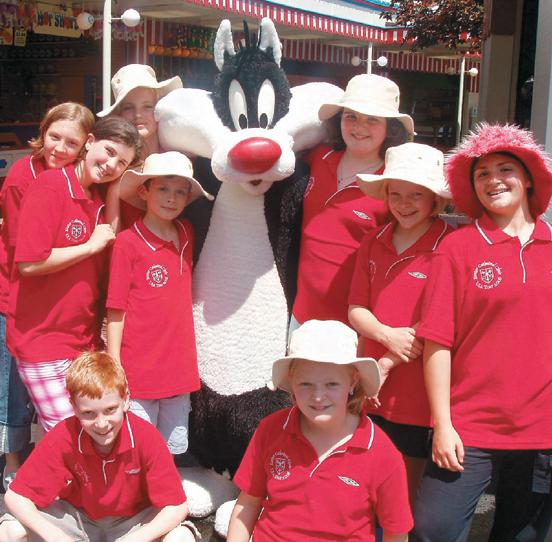

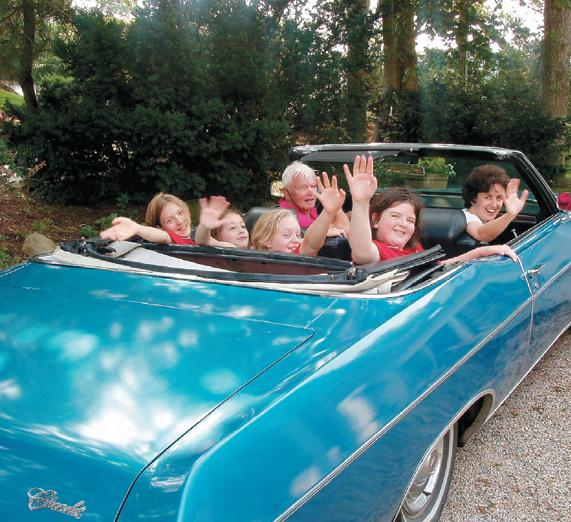

Such was the title of Andrew Millington’s expedition during the May half term, when he spent a week indulging in two of his passions – walking and playing the organ whilst raising money for the Exeter Cathedral Choir Tour to the USA in July 2006.
Setting out from Sidmouth on the Saturday, his aim was to walk 60 miles of the South West coast path to Dartmouth, giving 12 organ recitals en route. The first recital was a huge success, and followed a service at which Andrew played which celebrated 25 years as Organist at Sidmouth Parish Church for Bob Millington (no relation, but the father of a former Cathedral Head Chorister). With this encouragement at the start, Andrew set out to walk to Budleigh Salterton, to give an evening recital. The next day saw a walk to Topsham, with a recital in Exmouth along the way, before a return to Exeter and a recital on home ground in the cathedral on Bank Holiday Monday.
Andrew resumed the walk on the Tuesday at Starcross. Over the next three days, he played at two churches a day in Dawlish, Teignmouth, Shaldon, Torquay, Paignton and Brixham, with walks of varying lengths between. The weather became better and better as the week progressed and the sun tan deeper and deeper! Fortunately, there were no blisters and he was shedding the pounds!
The 11 mile walk from Brixham to Dartmouth on the Friday morning was completed in glorious sunshine. Once there, Andrew was joined by the Gentlemen of the Choir for a relaxed concert featuring organ music, jazz numbers and some fine close harmony singing. The week ended with a convivial party hosted by the Christopher and Helen Helyer (Christopher is a former Headmaster of the Cathedral School).
Throughout the week, Andrew was joined by several choristers and their families on stretches of the walk, and was fortunate to have very efficient back up support, particularly from Rachel Smith (chorister parent and Secretary of the Matthew Locke Society – Exeter’s choir parents’ association). This included appearing at each Church with a large case of music from which Andrew selected each programme. He endeavoured to choose an appealing selection to suit each organ, avoiding too much repetition. He erred on the side of popularity, including some well known ‘lollipops’ which pleased the audiences.
In every case, there was enthusiastic support from the parishes and he received warm welcomes and hospitality along his route. It became clear that the important link between the mother church and the parishes of the Diocese was being strengthened by this venture.
Andrew had been sponsored for the walk and, there were retiring collections after each recital. The total sum reached over £5,200 for the Choir Tour Fund, as part of a huge fundraising effort by the choir families and the Cathedral community.
An exciting tour is now in prospect, awaited with much anticipation.
Canon Turner describes the tour…
“I had no idea that the music could be as life-changing as this”.
“Our little village is still ‘a buzz’ about the wonderful visit by you and your choir”.
“We are all still riding high from the whole experience! Praise God!”
Just some of the comments we have received since 32
choristers, 14 gentlemen, three organists, two Chapter members and five chaperones returned from an exhausting yet exhilarating tour of the USA in July. In 12 days we had 9 concerts, 4 services, 3 sermons, a trip to see the Milwaukee Brewers play Baseball, saw nine hump-back whales with two calves and ride the world’s largest, double, wooden racing roller coaster! Yes it sometimes felt like a roller-coaster ride; very early starts, long journeys in coaches and even an internal flight. The children behaved magnificently and were a true credit to the cathedral and the cathedral school. “They are like angels” said one person to me before I preached at mass in Holy Spirit, Orleans on Cape Cod “You wouldn’t say that if you had just spent a day with them at an American theme park!” came the reply.
Our tour was centred around two very contrasting parts of the USA. All Saints Cathedral, Milwaukee, were our hosts while we toured Chicago, Evanston, Madison, Milwaukee and Sheboygan. We then flew to Boston and sang in Newport, Rhode Island and then on to Cape Cod with concerts and services at Orleans, Barnstable and East Sandwich.
Everywhere we went we were overwhelmed by hospitality in true American style great food, warm people and appreciative audiences. Mr Pike, a Tenor Lay Vicar, even received a special ‘sherry spritzer’ from Fr Rex Perry, the parish priest of Sheboygan the USA’s National Shrine of our Lady of Walsingham duly researched on the internet... mind you, the rest of the gentlemen will never forget arriving there at lunchtime to the immortal words “Welcome Exeter! Gentlemen, the Bloody Mary’s are in the Church Hall kitchen!”.
In the Mid-West we sang in huge Roman Catholic Basilicas and Graceful Lutheran Churches. In sharp contrast on the East Coast we found ourselves singing in a wooden English Church filled with wonderful box pews and... 17th century chandeliers made in Exeter!
We shared our commitment to the English choral tradition and, in particular, our love of Exeter Cathedral. We have new friends, new interest in supporting the choir and a HUGE number of people who now have Exeter firmly in their diaries for a return visit next year. There was an incredibly high standard of singing and organ playing led so ably by Andrew Millington, Stephen Tanner and Paul Morgan; two venues completely sold-out before we arrived (in one Church two people stood inside a cupboard!) and eight standing-ovations required encores. The schedule was punishing but everyone rose to the challenge; apart from one medical emergency which was quickly resolved by a fine local hospital we had not one hitch and managed to move our group of 55 people and 82 bags safely and on-time.Now we are home with plenty of memories, lots of new friends and the experience of true Christian hospitality that the American Church is famed for to encourage us here in Exeter. There is so much more to tell the spine-tingling moments of beautiful singing the moving liturgies where we felt God’s Spirit move among us the excitement of walking in to churches full and with people standing in the doors (in one church two people stood in a cupboard!). From the fun of a water park to sailing on a tallship on Lake Michigan; from seeing baby gorillas in Chicago Zoo to celebrating the 100th anniversary of a tiny mission church perched on a hill. And many of the choir can’t wait to go back and see their new friends.
Rachel Smith and Canon Carl Turner Precentor at Exeter Cathedral write about the preparation and subsequent tour of the USA.
Would Christmas be recognisable without the singing of carols? They have been heard in shopping malls and on the radio and television. Carols sung by great choirs have elbowed their way up the CD charts. Fleets of steam trains have taken unknown numbers of day trippers to cathedrals for special carol services and feasts. Many more people have flocked to their cathedral or church for carol services especially arranged for their group from work. Cathedrals now have carol services dominating their December activities.
The carol service from King’s, Cambridge, has a world-wide following.
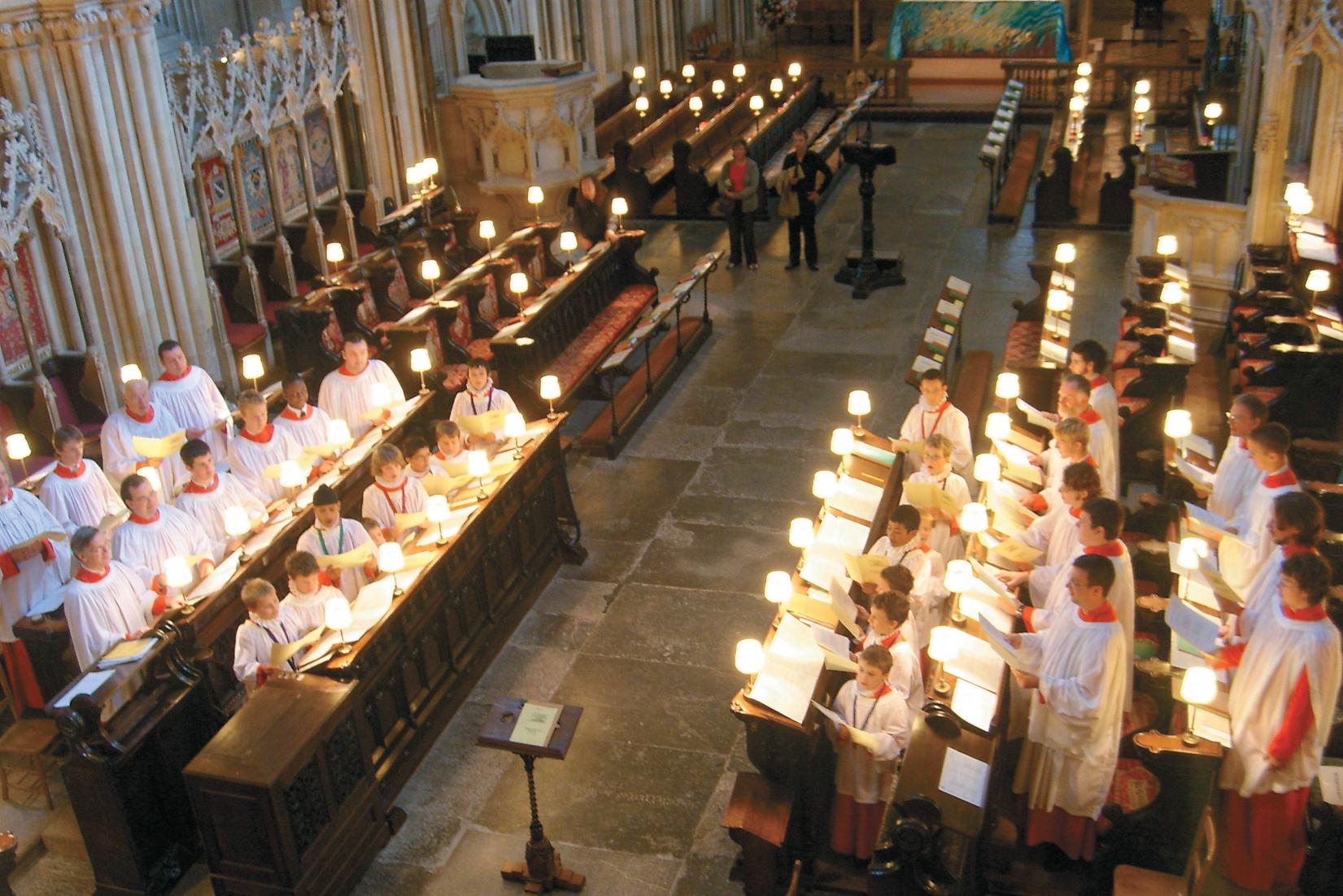
Cathedral choirs play a pivotal role in this key expression of English religion. But few appreciate how near many of these great choirs are from being axed. This threat comes not from absurdly politically correct local authority officials, or weak-kneed employers, who wish to ban any mention of Christmas for fear of offending ethic minorities, although there has never been a single complaint from this quarter. No, the most deadly of threats to this great English tradition of celebrating
Christmas, and the other great festivals, is economic. The cost of these choirs now dominates cathedral budgets, sometimes taking from a third to a half of its yearly income. As the last carol service is sung deans and canons across the country will be wondering for how many more years they will be able to meet the rapidly rising bill for these exquisite musical bonanzas.
The loss of cathedral choirs will subtly but irreversibly change British society. One wag once observed that the reason why the Church of England survived was that it knows instinctively how much
religion the English will take – which is not very much. But, like so many clever comments, this one misses an essential truth. The English man and woman’s holding of religion at arms length is only partly because of our instinctive horror of anything that smacks of extremism. Much more importantly, we have come through the centuries to realise that the great questions about our existence can never be answered satisfactorily by some formula, no matter how cunning and adroit its drafting.
Singing or listening to carols plays a key part in the country’s involvement in Christmas celebrations and, however tenuously, as witness to its Christian heritage. It is now so natural an activity that we do not have to have second thoughts on what we are doing. But this particular English celebration of Christmas is not a once a year tapping into a dead tradition. It is a living tradition where new words are written, new music is composed to give the great story a modern face.
Here cathedral choirs again play a key role. They continue to set new standards of singing partly by the introduction of new works. While Benjamin Britten’s Christmas litany was shocking to hear for many in those drab early post-war years, the singing of his and similar works have broadened and enriched the tastes of the country. John Taverner might not be a household name on a par with, say Bono, but his music is now treasured by countless people who were simply awestruck when they heard the choice of music by the then Westminster Abbey organist and choir-master, Martin Neary, with which to conclude the funeral of Princess Diana. Taverner became a figure of national importance as the coffin of a princess was borne away with the sound of boys’ voices filling the space between now and eternity with
Taverner’s Song for Athene. No homily came anywhere near to how those voices expressed our pondering of Diana’s and our own mortality.
The Westminster Abbey choir is assured. But we have no such guarantee for most of our other great cathedral choirs. Some deans must be driven to despair about how, in the future, the bills are to be met. But to contradict one of Mrs Thatcher’s great sayings, there is, for once, an alternative. This alternative can secure the future of cathedral choirs while making a huge contribution to the serious teaching of music throughout our schools, and into adult life.
One reason why some of these choirs cost so much is that they are full-time and many of them are nurtured in special choir schools. The schools are small because cathedrals need only the best couple of dozen boys and, increasingly, girl singers in their area. It is this smallness which makes for their extraordinary cost. Smallness also involves elitism. If cathedral choirs are to survive it is important to break out of this elitism and return cathedral choir schools to what they once were, great schools educating significant numbers of pupils.
The Government’s academy scheme could be the basis for establishing across the country a series of music schools open to boys and girls who have an interest and aptitude in music which is now all too infrequently developed in our own schools. The cathedral choir schools could become the driving force behind a transformation, offering to convert their status into academies. The governing of these new schools should be set so that local education authorities play their part in ensuring that these centres of excellence strengthen music in other state schools. The movement of staff into surrounding schools, and for classes in
those schools to come back into the cathedral schools, will not only benefit the children, but will help to break down the terrible barriers we have between specialist and other schools in this country.
It is important at the outset to be clear on the basis of this new education contract. In return for covering the cost of what are now choir schools, cathedrals would offer to spread their excellence through these new musical academies to a huge group of young people, many of whose musical talents remain starved of development. There will, of course, be certain cynicism in some areas as to what appears to be a deathbed conversion to this universal role. So cathedrals must earn the new privileges they will be seeking from taxpayers.
The most important way to build this wide coalition of support would be to begin, next year, establishing a number of pathfinder ‘after hours music schools’. Here cathedral choirs and staff would work with existing state schools in order to develop community school choirs. These choirs would be trained and would sing in the cathedral as well as in the community more generally. Similarly, the teaching of musical instruments would, as a second stage, form a key part in these afterhours music schools. The skills of resulting community-based children’s orchestras should similarly be nurtured by performances of key events in the cathedral, such as playing at midnight masses which will be celebrated throughout the country tonight. The sound of this music will also herald a great change in English education. Music would begin to regain its rightful place in the curriculum. And taxpayer attention would be drawn to how the excellence of a few is spread to many schools up and down our country.

It might be useful to share some of the experience of St. Peter’s Collegiate Church, Wolverhampton in relation to current initiatives about Outreach. They have been and are, at the forefront of the Singing Initiative.
St Peter’s has a different situation from the Cathedrals with Choir Schools. Of their school-age choristers, 33 are at a variety of Primary Schools and 22 (10 girls; 6 boys and 6 choral scholars) attend St Peter’s Collegiate School (an 11-18 church comprehensive school). nine choristers are at other secondary schools in the city.
The Outreach programme began three years ago with an unashamed intention of raising the profile of what is done in the city’s most prominent building among those who live and work there. There was a three-pronged approach at the outset summed up as acting in the community; inviting into the church and recruitment. The emphasis has changed as the project has developed.
Acting in the community began with a series of open charity concerts which raised money for particular causes. The choir and its associated orchestra (Junction 10 Orchestra) began by responding to the Tsunami disaster and has gone on to raise quite large sums at a number of concerts. Indeed Zoe Morris, the 10-year old chorister daughter of Director of Music Peter Morris, has just raised more than £750 for the charity Kidsforkids by organising a two hour concert in St Peter’s. She invited the Mayor and cajoled various instrumentalists and singers, including the girls’ choir and the men’s close harmony group ‘Aftershave’, into performing to a large audience.
Inviting the community into the church to participate in its building was best evident in performances of Britten’s ‘Noye’s Fludde’ and Iain Kendell’s ‘Petrus’. Here the community at large (primary and secondary schools as well as adults) was invited to be a part of these events and Awards for All funding was forthcoming. The response was very heartening and almost 300 children came to participate alongside the choristers in two performances of ‘Noye’s Fludde’. As a result of these activities a close relationship has built up between the Collegiate Church’s music department and the city’s Music School and Youth
Orchestra. Peter Morris has been into the schools, sometimes with choristers, to facilitate these performances and the Music School staff are able to provide that entrée to schools for him. A bonus in ‘Petrus’, where many of the additional performers were adults (with a no-audition policy ensuring open access), was the return of tenor Neil Jenkins in the work commissioned by him for the Millennium of St Peter’s Church in 1994.
The recruitment aspect of the Outreach work seems to have worked embarrassingly well. There are now 64 choristers of school age as well as 11 lay clerks an enormous workload for Peter and his two assistant organists. There is also a healthy number of new probationers in training, ready to start in the overcrowded choir stalls. Thanks to FCM and the Friends of St. Peter’s Church there is a newly appointed voice coach, Pamela Davies. She has a particular brief for the training of broken voices among the choral scholars. She will also be available for individual and group teaching for various other choristers from 7 year olds to the oldest lay clerks!
The next outreach phase brings the choirs together with both Primary and Secondary schools on March 21st in performances of two cantatas by Robin Grant based on local stories. Performing in the 2000 seater Wolverhampton Civic Hall, the primary aged choristers will join with children from a variety of primary schools in a performance of ‘Iron Mad Wilkinson’ accompanied by the City’s Youth Wind Band and the secondary and adult sectors will perform ‘This land, Our land’ with the Wolverhampton Youth Orchestra.
Opportunities are being provided for large numbers of Wolverhampton children (and indeed adults in the community), irrespective of initial vocal standard or creed, to participate in the thrill of active music-making by St Peter’s Outreach; Secondary and Primary schools are being made aware of, and encouraged to use, the valuable musical resource which the Collegiate Church has to offer; the Church is set firmly at the centre of initiatives to increase participation in singing among all the city’s youngsters.
The imaginative Singing Together initiative, run jointly by Salisbury Cathedral School and Cathedral to promote singing in primary schools and help get more music into their curriculum, has now involved over 1000 children. In March, children from Great Wishford CE Primary School and Durweston CE VA Primary School entertained a large audience of over two hundred parents and visitors with a special workshop demonstration and concert in the Cathedral. Joined by Year 4 pupils from Salisbury Cathedral School and the boy and girl choristers of the Cathedral Choir the concert culminated in a rousing performance of Michael Hurd’s Jonah-Man Jazz. Ian Wicks, Director of Music at Salisbury Cathedral School who teaches the children explained, “I spend one hour a week with the children in each school. Apart from learning Jonah Man Jazz we’ve learnt a lot more besides – including how much fun it is singing”. The event began with the children enjoying their fun warm up exercises and songs. David Halls, Director of Music at the Cathedral, followed this by demonstrating how the Cathedral choristers warm up their voices with more formal vocal exercises. Then, accompanied by piano and drumkit, the children sang What shall
Cathedral School on 01722 555305. Priority is given to those schools that have little or no music specialist input each week”. This project is funded as part of the Government’s ‘Music Manifesto’ via the Choir Schools Association (CSA) who themselves are strong advocates of community singing initiatives and of choir schools being involved in outreach work. Recent announcements about extra funding mean that we will be planning further initiatives in the future.

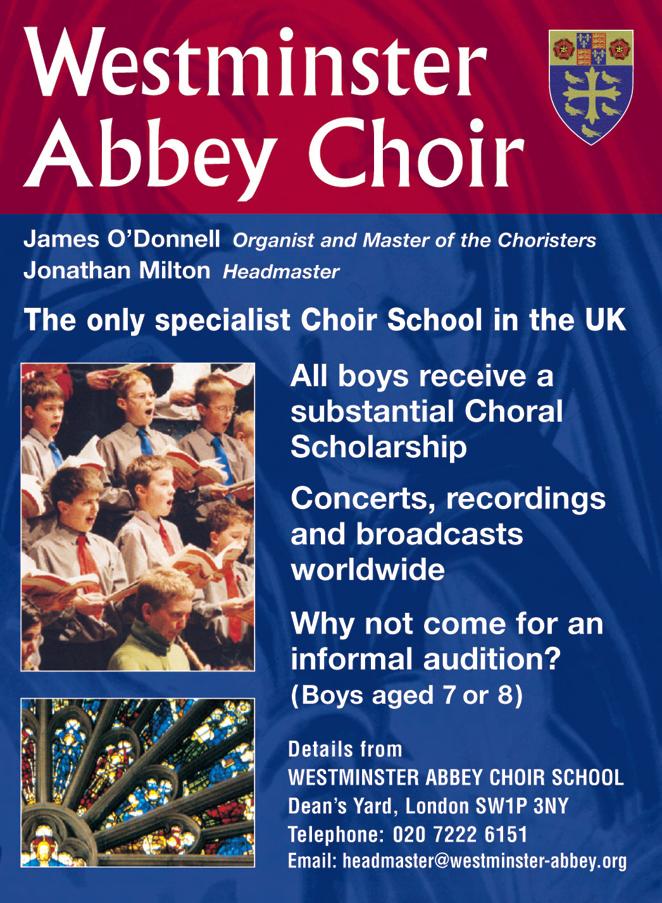
with the drunken sailor and When the saints go marching in firstly singing a single line and then each school simultaneously singing a different melody line, or ‘riff’. The build up of sound and singing in parts was clearly tremendously exciting for children and parents alike. David Halls gave an instructive demonstration of the famous Father Willis organ. The Jonah-Man Jazz was sung from memory by all the children, a feat in itself, with Ian Wicks also acting as narrator in between the musical sections. This was an excellent and energetic performance which was rewarded with huge applause and great pleasure and pride on the faces of parents and accompanying school staff. Ian Wicks would be delighted to hear from other primary schools who would like to be involved with this project. “This initiative is free to participating schools and if your school is interested in finding out more, please telephone the Head Master’s secretary at the
Sir: The article by Stephen Shipley on ‘BBC’s longest running show’ was very interesting and thoughtful. However he slips in the move of Choral Evensong from live on Wednesday to ‘query live’ on Sunday afternoon, as though it is some sort of improvement. I say ‘query live’ because one wonders whether the wealth of venues willing and able to provide a live service, hitherto available on a Wednesday, can be provided on a Sunday. Although Sunday may be ‘prime time’ for radio, one of the joys of Wednesday evensong has been the very fact that it is on a weekday. Another step to confine religious service to Sunday? It would be a great loss for that oasis midweek to disappear. There may well be a demand to hear Choral Evensong on a Sunday but why not broadcast a recording of the live Wednesday service? I trust that many readers will protest to the BBC that the change proposed is not welcome and that this jewel in the BBC mid week radio programme should be retained.
Sir: I have read with deep regret in CM Issue 2/06 that the 4.00pm broadcast of Choral Evensong on Wednesdays is to be switched to Sundays and am amazed that this seems to meet the approval of Stephen Shipley (‘there will beam much larger audience’).
I have for years kept my 4.00pm on Wednesdays free in my diary and the same time on Sundays would never be a possibility – indeed nor would any other time on Sunday! The great joy of the Wednesday broadcast is it coming in the middle of a busy week. I find that I am
not alone in this area, in feeling real grief in this coming deprivation.
Sir: I am sure there must be many FCM members who, like me, wish to protest at the rescheduling of Choral Evensong from 4.00pm on Wednesdays to the same time but on Sundays. As a Lay Minster I often officiate at a 4.00pm service on Sundays, especially in the winter, so on any occasions it would be impossible for me to listen to the service, something I have been doing for over 50 years (including having sung in cathedral and parish church choirs). And it is ironic that it will now be more difficult to listen than ever before. By the same token, it will prevent many regular worshippers who attend Evensong on a Sunday to have their mid-week hour of peace of tranquility a time of reflection away from life’s normal hustle and bustle. I recall that the last time the BBC attempted to reschedule Choral Evensong, the outcry was so great that it was eventually reinstated at the Wednesday slot and the then Controller lost his post. I wonder whether ‘people power’ could achieve a similar result this time. I do hope so.
Sir: As many people do, I sit down at 3.00pm on Christmas Eve to listen to the service of lessons and carols from King’s College Cambridge. Christmas starts here for both myself and my family. The highest standards of the English choral tradition are displayed to produce a moving and uplifting celebration of the birth of Christ. However, this for me has not been the case for the last few years.
The problem centres around the way the boys are being made to sing. For some reason the wonderful clear, yet rich tone of the past, has been replaced
with a thin sound that seems strained and forced, leaving the listener on edge and apprehensive. It is the singing of vowel sounds which seems to be at the heart of the change. ‘Thin’ vowels lead to a thin sound and worse to indeterminate tuning, something else of which the boys are guilty.
Perhaps it is time for a change? The sound of King’s near neighbours is again for me infinitely preferable to their own at present. I never thought I would say this but this year I was glad when the service was over and I could rest my senses. I felt I had to write as this is important. I wonder if others share my views?
David Martin, York.Stephen Shipley, in his excellent article on Choral Evensong in the November 2006 issue of Cathedral Music, observes that, ‘the heritage of the English choral tradition is unique’. Indeed it is; but I think that one has to come from the outside, as it were, to fully appreciate the point.
I was brought up as a Presbyterian in New Zealand, far from the Anglican tradition. But I began to call myself a High Presbyterian, and to attend what I felt to be illicit evensongs in Christchurch’s Anglican cathedral. In my late twenties I settled in England, where I was gradually drawn into the cathedral choral tradition. I found that the English people around me, though greatly respecting that choral tradition, to some extent took it for granted. For them, it has always been there. For me it had not been so, and I could better appreciate what a unique tradition this is. It is strong and self-confident. It is noble in both its music and liturgy. T aims for eh highest standards in performance. And above all, t has a quiddity and distinctiveness that sets it right apart from every other tradition of music and liturgy known to me. It is a tradition of significance not only in England, but in the world.
All readers whose letters are published will receive a copy of FCM CD O How Glorious a compilation of cathedral music from the Priory Records catalogue. Letters may be shortened for publication.
Choral and Organ music of Patrick Gowers
Guildford Philharmonic Orchestra
Guildford Camerata

Guildford Cathedral Choir conducted by David Hill and Stephen Farr organ:David Davies and Stephen Farr
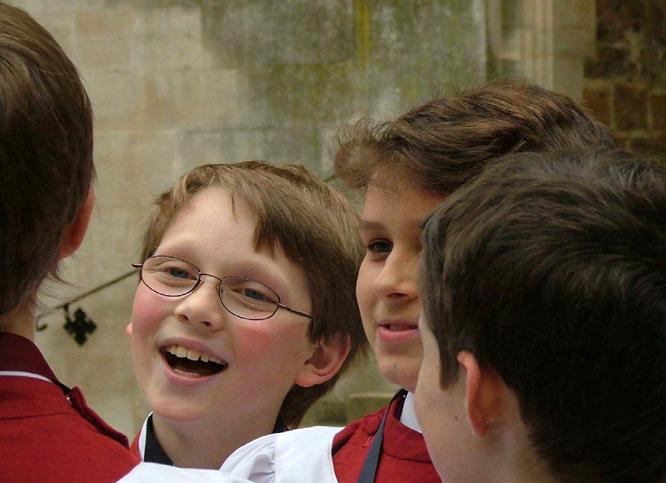
Veni,Sancte Spiritus


Cantata
Adagio organ
Chester Lullaby
Toccata organ
Fugue organ
Libera me
An Occasional Trumpet Voluntary organ
Symphonies by Schubert and Mendelssohn

transcribed for Organ Duet byDavid Gibbs
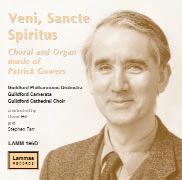
played by Greg Morris and David Gibbs on the organ of Blackburn Cathedral
Symphony No.5 in B flat D485
Franz Schubert
Symphony No.4 Op.90
Felix Mendelssohn-Bartholdy
 Arthur Wills
Arthur Wills
300 pages 21x14cm ISBN 1-905203-89-6
Paperback £8.99 Pen Press
Readers may remember reading about Dr Wills last year in Cathedral Music (and Organists’ Review also), and now we have the chance to enjoy his own account of a career that took him from humble beginnings in Coventry to a position of international renown as choirmaster, composer and organist. His life seems to have been a series of happy accidents which led him via St Mary’s, Warwick to a scholarship at the School of English Church Music at Canterbury, whence Sidney Campbell took him in 1949 to be Assistant Organist (and tenor lay-clerk) at Ely Cathedral. Having served Campbell’s successor Michael Howard for five difficult years (about which he is characteristically charitable), Wills succeeded him as Organist in 1958, remaining in Ely until he retired in 1990.
It is a remarkably cheerful tale, permeated with contentment and gratitude, and he makes light of the considerable hard work and determination by which after his rather late start he gained his FRCO, ADCM and BMus (Durham) between 1948 and 1952. His DMus followed in 1957. He certainly delighted in being busy, and his account of the daily round at Ely plus his compositions, concerts, organ recitals and teaching commitments (initially at the King’s School, Ely and then at Cambridge University and the Royal Academy of Music) makes one wonder at his stamina. The book might have benefited by some sub-editing to remove a certain amount of repetition, and the accounts of concert tours in the latter part of the book may be better taken in small doses, but it gives a fascinating account of way of life in parish church and cathedral quite unlike anything to be found today, and takes us inside the mind of a musician of great charm and distinction. No Friend of Cathedral Music should be without it.
You can buy it from Pen Press via Amazon, but it may be better to treat yourself to a visit to Ely and buy a signed copy from either of the city’s excellent bookshops, Burrows (9, High Street Passage CB7 4NB, telephone 01353 669759) or Toppings (9 High Street CB7 4LJ, telephone 01353 645005). I am sure that both will be happy to post the book to you if necessary.
Timothy StoreyAlan Spedding
Ref: Organ 14048 £3.95 Banks Music Publications.
A welcome organ composition on Martin Shaw’s hymn tune Marching Composed for the dedication of the Pilgrimage window and sculpture in the retro-quire of Beverley Minster. It is an easy to play piece consisting of a processional and postlude. Both movements can be played on a reasonably sized organ. The processional builds up to a Maestoso section where the tune is played leading to a fast postlude which begin on manuals with a simple pedal part coming through ending with a terrific climax.
Bryan MatthewsEdited Richard Lyne, Honorary General Editor, Church Music Society and published on CMS behalf by Margaret Silver of Banks Publications, Sand Hutton, York. YO41 1LB. Copies (£5) are only obtainable from Banks Music Publications. Watkins Shaw – now where I have seen that name before? The answer lies in the score to the Messiah. Most singers these days use his edition. There was much more to this man as the books and article in my study testify. Here was a scholar, friend and writer and in this 70 page booklet we find out more about the man. As always with CMS publications this edition is well-sourced, informative and overall presentation excellent. It is a collection of essays on the life of Watkins Shaw, who was Chairman of the CMS. In this delightful pamphlet one finds HWS’s own musings on his family, childhood memories, choirboy days and life. It gives a useful insight into the period and his work in the education world. The second half is dedicated to recollections from friends such as Sir David Willcocks and Roy Massey among just a few. All are written as a narrative using anecdotes to briong the man to life. Henry Sandon (from Antiques Roadshow fame) shares his stories and I enjoyed Pam Thompson’s, she is the Keeper of the Parry Room Library at the Royal College of Music. Copies are only £5 which is a bargain.
Daniel Reed.
The Exon Singers.
Director: Matthew Owens.
Organ: David Bednall
DELPHIAN DCD34035
This is the most exciting choral CD I have heard for a long time. There is a saying attributed to William Boyce to the effect that ‘music is good when it causes doors in one’s back to open and shut,’ and that is precisely the effect on your reviewer of Dr Jackson’s music in these very fine performances. The Missa Matris Dei written for Nicholas Danby’s choir at the Jesuit Church, Farm Street, is the largest work included and perhaps the most immediately accessible, with a Gloria of great drive and excitement and a pair of Hosanna movements that crackle with energy; and something of the same jollity pervades Thanks be to the Lord, a splendid pièce d’occasion for the Commonwealth games in 2002. More effort on the listener’s part may be required for the most recent works, the five-part Evening Service of 2005 and the previous year’s setting of Donne’s famous A Hymn to God the Father; the latter is an extended sacred part-song, rather along the lines of Parry’s Songs of Farewell, while the former is a masterpiece of highly-skilled musical development, with the best wine, as it were, saved for the end of the feast. And these are only the highlights, for there is much enjoyment to be had from the well-contrasted shorter works in this programme: the music’s considerable demands are more than matched by the ability of the performers, and how good it is to hear plenty of organ at the right moments. Buy this CD, and hear for yourself.
Timothy StoreyThe Choir of Westminster Cathedral sing Palestrina’s Third Book of Lamentations. Director: Martin Baker.

HYPERION CDA67610 TT 79:16
Martin Baker’s choir of men and boys show why this is one of the finest choirs around with impeccable intonation and strength to convey the full majesty of Palestrina’s sublime compositions. The men show how versatile they are interweaving in and out of their parts adding to the elegant and polished phrases. This choir is the leading Catholic ensemble in the world and this disc just proves it. Quite simply this is glorious music sung by a magnificent choir. There’s not much more I can write except most definitely recommended.
Ian MorganThe Choir of Hereford Cathedral.
Director: Roy Massey. Organ: David Briggs
PRIORY PRCD 5022
This re-issue of a recording made in 1989 is a happy reminder of the high standards maintained by Dr Massey (which his successor most ably continues). It is like listening to an exceptionally good broadcast of Choral Evensong, for it includes prayers, readings and a hymn; its pre-CD duration of just under an hour sustains the illusion, for there is no time for musical (or any other) excess, just a fine choir doing what it is meant to do and doing it well. Though not specifically billed as such, it is Evensong of Easter Sunday; Sumsion in G,Christ the Lord is risen again (Rutter), Dum transisset Sabbatum (Taverner) and, of course, S. S. Wesley’s famous Blessed be the God and Father, composed for Hereford at a time when only the trebles and a lone bass attended on Sunday mornings. It’s a fair bet Dr Massey’s choir gives it a better performance than SSW ever heard, and as for that dominant seventh chord on the Father Willis... Definitely worth buying.
Timothy StoreyThe Choir of Truro Cathedral.
Director: Robert Sharpe. Organ: Christopher Gray. Briggs The Truro Eucharist; The Truro Service; Carne Lannanta Carol; Pascoe Lo, how a Rose e’re blooming; Pader an Arleth; Gabriel Jackson Missa Triueruensis; Salve Regina; Comeau Preces & Responses;The Truro Service; Watts’ Cradle Song.

The excellence of Truro Cathedral Choir is well established and this latest collection of music by composers associated with the cathedral (either because they are Cornish or as a result of a commission) demonstrates that the work achieved by former organists David Briggs and Andrew Nethsingha is being superbly continued by Robert Sharpe. Many of the 21 tracks, as well as three of the featured composers (Paul Comeau, Russell Pascoe and Jonathan Carne), may well be new to listeners, but there is much here to enjoy. Of the unfamiliar names, Russell Pascoe’s Advent Lo, how a rose e’re blooming is a highly satisfying arrangement of the well known German melody. For those seeking different evening canticles there’s Paul Comeau’s reflective set sandwiched between his more energetic Responses. Gabriel Jackson’s unaccompanied Mass and his attractive, but personality-free, setting of Salve Regina can be heard, but it is David Briggs’s two works that will claim your sustained interest.
David Truslove
Wells Cathedral Choir.
Director: Matthew Owens. Organ: David Bednall. Easter Alleluia; The Wells Service (Te Deum; Jubilate; Benedicite, Omnia Opera; Benedictus); Come, Holy Ghost; Lux et Origo; Hail, gladdening Light; Adagio for Organ; The Gloucester Service.
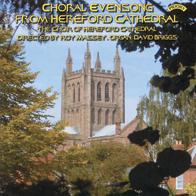
REGENT REGCD247 TT 75:16
It is an enterprising recording company (Regent) that promotes the music of an assistant cathedral organist – and one, not yet thirty, who has yet to establish his name beyond that of the vathedral fraternity. That said, Regent and Matthew Owens clearly believe in David Bednall and his music, and Wells Cathedral Choir (with girls on the top line) generally make a convincing case for these recent settings of the morning and evening canticles with exuberant, full throated singing. Occasionally there are sacrifices to blend and in the Te Deum at ‘Make them to be numbered with thy Saints’ we are taken ‘by the scruff of the neck’ from the choir stalls to the opera house in a style more in keeping with Verdi than Herbert Howells whom David Bednall claims to be his strongest compositional influence. This is clearly evident in his 2001 setting of the Gloucester Service which, whilst having many of Howells’ musical fingerprints, has its own personal stamp marking out David Bednall as someone to watch out for.
 David Truslove
David Truslove
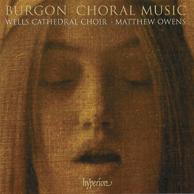
The Choir of Wells Cathedral.
Director: Matthew Owens. Organ: David Bednall. Trumpet: Alan Thomas,
All the round earth’s imagined corners; The Assumption; Short Mass; Of flowers and emeralds sheen; Magnificat; Nunc dimittisl As the angels stood; Apple Blossom; The Corpus Christi Carol; The song of creatures; Death be not proud; Come let us pity not the dead; Te Deum.
HYPERION CDA67567. TT 72:35
One might think that with two other discs of choral music by Geoffrey Burgon (Chichester Cathedral Choir and The Elysian Singers) this new release seems almost superfluous. However, with ten first recordings and eight new pieces all composed this millennium, plus strong performances from the Wells Cathedral girl choristers and lay clerks, I was soon persuaded that this recording (spanning forty years of choral writing) is a welcome addition to the Burgon discography. Several of the 18 tracks bear repeated listening and a number of the new works will, no doubt, soon belong to concert or service repertoire. Well worth exploring is the beautiful Corpus Christi Carol (with admirable soloists), The Assumption, and the atmospheric Of flowers and emeralds sheen marred only by rather determined singing from altos and basses. Organ and trumpet add their distinctive colours in several works; one of which, Death be not proud (setting words by John Donne), comes off very well. For fans of Burgon this disc will fill that gap on your shelves between Bruckner and Byrd.
David TrusloveThe Choir of Westminster Abbey.
Director: James O’Donnell.
Organ: Robert Quinney.
HYPERION CDA67586
‘This disc contains music you might hear if you visited Westminster Abbey on the Feast of the Translation of Edward, King and Confessor;’ and it succeeds admirably in carrying out this intention, for although a demanding programme it stays within the bounds of what would be desirable and possible in a single day’s services. The range of musical styles is as varied as could be, from the plainsong Laudes Regiae (‘Christus vincit’) right through to substantial works recently commissioned for the Abbey; Jonathan Harvey’s remarkable Missa brevis (1995) draws on a whole range of contemporary techniques and idioms including choral shouting, and Philip Moore’s extended anthem The King and the Robin to a text by the Poet Laureate, most appropriately given its first performance at the Abbey in a Radio Three broadcast of Choral Evensong on the Eve of the Feast of King Edward in October 2005, is a fine example of York Minster’s Master of the Music at his most imaginative and highly satisfying. The standard of singing and recording is fully equal to such demanding music, but it is equally satisfying to hear psalms and familiar canticles, Stanford in C (Morning) and Purcell in G minor (Evening), performed with such loving care. An excellent disc, strongly recommended.
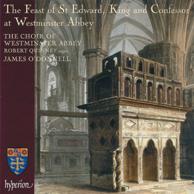 Timothy Storey
Timothy Storey

Kasier-Hymnus.
Organ of St Mungo’s Cathedral, Glasgow.
Director: John R. Turner.
The Seven Last Words of our Saviour on the Cross. Including seven sonatas, two introductions and an earthquake.
MOLLTERZ MTZ002 TT 64:02
Few of Haydn’s works have had such a colourful history as The Seven Last Words. It meant much to Haydn, a man of simple faith, and he regarded it as one of his most significant achievements. In later years he conducted it a number of times for charity and it was the last work he conducted in public. The work was commissioned by a Canon of Cadiz Cathedral in Spain for the Good Friday meditations in 1787. It was scored for baritone solo and
orchestra and was soon taken up and performed across Europe. By 1793 it had even reached North America. The Canon’s novel way of rewarding Haydn was to send him a box through the post. When Haydn opened it he was mystified and not a little annoyed to find a chocolate cake. He attacked it with a knife only to find it full of gold pieces! Haydn himself arranged the work for string quartet (the version in which it is best known today) and also collaborated with Baron van Swieten in a choral version. He also approved (according to a letter to his publisher) of an arrangement for piano. None of the later versions included the introductory baritone solos, probably for practical or financial reasons. John R Turner follows Haydn’s example by making his effective and idiomatic organ arrangement and he gives a convincing performance on this disc. As a bonus he includes a further arrangement of the variations on the Emperor’s Hymn from Haydn’s String Quartet, Opus 76/3. Both these arrangements could well be of use in 2009 when organists will be looking for items for the Haydn bi-centenary celebrations.
Alan SpeddingRichard Lloyd
The Bede Singers.
Director: David Hill. Organ: Ian Shaw.
The Ballard of the Judas Tree; Were you there? Grant to your servants, O God; A Garland of Praise; Great Lord of Lords; The Call; Kindle a light; View me, Lord; King of Glory; Fill thou my life; God be in my head; To Christ, the Prince of Praise; Open our hearts; God is love; The Linden Tree; Magnificat & Nunc dimittis; O God, who through all the grace. PRIORY PRCD 838 TT 76:29
Richard Lloyd’s church music is written in a clearly recognisable Anglican cathedral language but with the composer’s equally unmistakable accent. One may detect influences gained over a lifetime steeped in performing cathedral repertoire but the ingredients are blended by a masterly musical chef into a most satisfying musical feast. Not only is there a feeling for the words of the texts (some familiar, others less so), but also the sense of a deep spiritual understanding of their meaning. This survey of music written over a period of nearly half a century is well served by The Bede Singers, specially formed for this recording and comprising numbers of former Durham choristers and friends, directed by David Hill and accompanied by Ian Shaw (organ), both sometime sub-organists at Durham during Richard Lloyd’s tenure. Together they convey the warmth and humanity in the music which reflects the character of the composer himself.
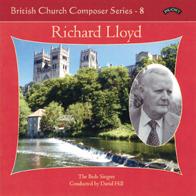 Alan Spedding
Alan Spedding
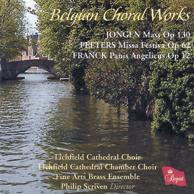
Lichfield Cathedral Choir.
Lichefield Cathedral Chamber Choir.
Fine Arts Brass Ensemble.
Director: Philip Scriven.
Jongen Mass Op 130; Chnat de May; Franck Panis Angelicus; Peeters Aria; Missa Festiva. REGENT REGCD241 TT 71:42
This is the first recording to couple two great Belgian Masses of the midtwentieth century and the first by an English choir of Jongen’s glorious and radiant Mass. Jongen authority John Scott Whitley provides excellent notes on the music. The brass accompaniments are certainly needed but at times one feels that they could be left out particularly in the quieter sections such as the Kyrie and Agnus Dei. However, when needed they make for rousing climaxes especially in the Sanctus with its brass fanfares and superb choral writing. There are time during the performance when the choir is only slightly under pitch. I thoroughly enjoyed the Jongen and also the demanding and tricky Peeters’s Missa , which is ravishing in parts. Peeters’s Mass is only superficially related to that of Jongen, for while Jongen’s Mass is the product of a lifetime’s compositional refinement, the Missa Festiva is more of an organist’s contrapuntal improvisation. The solo organ pieces by Jongen and Peeters that are interspersed between the choral items are welcome although Peeters’s popular Aria suffers in registration after hearing a delightfully and delicately played Chant de May. Most enjoyable listening.
Andrew PalmerThe Chapel Choir of The Royal Hospital Chelsea. Director: Ian Curror. Organ: Tim Wakerell

Fauré Requiem ; Rutter Requiem ; arr David Bowerman O Valiant Hearts; A C Green Sunset; Elgar arr Bowerman Greater Love
Produced in aid of the Chelsea Pensioners’ Appeal, funds from which will fiannce a new infirmary and improved living facilities for the gentlemen.
SIXPV003 TT 77:07.
Two well-known Requiems fill the main part of this new release from the Chapel Choir of the Royal Hospital Chelsea, produced last year as part of a £35m fund-raising scheme aimed at building improvements for the permanent residents. The 12 voice professional choir are well supported by the organ scholar, Tim Wakerell – a final year student at the Royal College of Music - playing a 1978 Hill, Norman & Beard organ, restored by Walkers in 2005. While its distinctive timbres occasionally fail to convince (through no fault of the organist), the tone of the singers is superb and, I suspect, far exceeds anything Fauré himself would have experienced. With four sopranos, two altos, two tenors and four basses (directed by Ian Curror) the balance and ensemble is second to none. Excellent contributions from cello, oboe and soprano soloists help hold my attention for Rutter’s Requiem Completing the disc are three arrangements by the CD’s sponsor David Bowerman whose generous support has enabled this production.
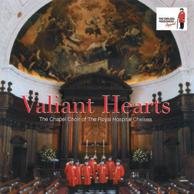 David Truslove
David Truslove
The King’s Singers.
East Hence, stars, too dim of light; Norcombe With angel’s face and brightness; Mundy Lightly she whipped o’er the dales; E Gibbons Long live fair Oriana; Round about her charret; Bennet All creatures now are merryminded; Hilton Fair Oriana; Marson The nymphs and shepherds danced; Carlton Calm was the air and clear the sky; Holmes Thus Bonnyboots the birthday celebrated; Nicolson Sing, shepherds all; Tomkins The fauns and satyrs tripping; Cavendish Come, gentle swains; Cobbold With wreaths of rose and laurel; Morley Arise, awake; Farmer The lady Oriana; Hunt Hark! Did you ever hear so sweet a singing?; Weelkes As vesta was from Latmos hill descending; Milton Fair Orion, in the morn; Kirbye Bright Phoebus greets most clearly; Jones Fair Oriana, seeming to wink at folly; Lisley Fair Cytherea presents her doves; Morley Hard by a crystal fountain; Johnson Come, blessed Byrd.
SIGNUM
According to the excellent programme notes The Triumphs of Oriana is an extravagant musical compliment paid to Eliazbeth1 by Thomas Morley. Here we have the impeccable sound of the King’s Singers performing 25 madrigals all of which end with the words: ‘Long live fair Oriana’. Everything one would expect from this experienced group is here: excellent tuning and phrasing, agile singing and all recorded nearly 10 years ago in March 1998 at Mandelsloh, St Osdag, Germany, The scene is set for the listener by historian David Starkey who writes a brief historical backgrounder. This is a pleasing disc and despite thinking that all the music will be ‘samey’ it has a refreshing feel to each track as the King’s Singers delight their Queen.
 Ian Morgan
Ian Morgan
Salisbury Cathedral Choir.
Director: David Halls
Organ: Daniel Cook & Simon Jacobs.
Howells A spotless rose; Dupré Ave Maria; Reger Ave Maria; Stanford Magnificat in G; Poulenc O magnum mysterium; Shephard Prayer for a new mother; MacMillan Gaudeamus in loci pace; Eccard When to the temple Mary went; Marenzio Tribus miraculis; Casals O vos omnes; Pergolesi Stabat Mater; Langlais Ave Maria; Philips Salve Regina; Gesualdo Ave, dulcissima Maria; Berkeley Regina coeli laetare
GRIFFIN GCCD 4054 TT 63:35
Released last year, this attractive Salisbury and Marian-themed compilation features lay clerks with both boy and girl choristers (exactly when each is singing is left for you to work out for yourself) and is the first CD under David Hall’s direction. It provides a varied snapshot of the choir’s repertoire and an opportunity to hear one or two fine solo contributions, notable amongst which is Camilla Harris in Stanford in G. Whilst the singing is clearly of a high


standard most of the performances never really rise to an excellent, musthear-that-again quality: tuning and blend are sometimes an issue, (Poulenc and Berkeley items) as is a somewhat four-square approach to such gems as A Spotless Rose which lacks a certain intimacy. Any feeling of workaday performance is dispelled, however, in a compelling account of O Vos Omnes where a more expressive mood is achieved and a memorable rendering given.
David TrusloveThe Chapel Choir of Worcester College.
Director: Thomas Primrose.
Organ: Daniel Chambers. Gant Ave verum corpus;A good-night; Leighton A Christmas Caroll;Missa brevis; Saxton The child of light; Johnson Missa Aedis Christi; Oliver Psalm 150l Rubbra Let us now praise famous men;There is a spirit;Except the Lord build the house; Infant holy; And when the builders; A hymn to the Virgin.
LAMMAS LAMM 195D TT 64:16
The Chapel Choir opts for a programme close to its heart, with all the music here written by composers with Worcester College connections. The pieces are unashamedly modern (none of them was written before 1925) but accessible at the same time. I love the spiky dissonances in the opening of Saxton’s The Child of light depicting the shepherds’ journey over rough land, and Rubbra’s beautiful There is a spirit for soprano solo and choir, Leighton’s agonised Kyrie from the Missa brevis and Gant’s wistful A good-night. And unlike the college choir of the early 1990s for whom it was conceived, the present Chapel Choir copes well with Sherlaw Johnson’s mass. Its meticulously notated lower parts in the Sanctus, depicting the ad lib chanting of Eastern churchmen, undoubtedly contributed to that choir deeming the work unsingable back then (it was premièred by Christ Church Cathedral choir instead). It’s a shame the choir’s boy trebles sing in only a handful of the tracks, but, despite one or two wobbly soloists, the mixed student choir provides 64 minutes of thoroughly enjoyable music.
Martin WolfFormal Voice Trials for boys aged 6 – 9 years old, who are interested in admission to St John’s College Choir, are held in spring and autumn each year.
For further details please contact Mr Alex Loria at St John’s College School on 01223 353652 or by sending an e-mail to admissions@sjcs.co.uk
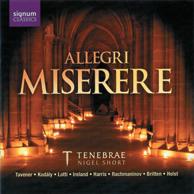
Tenebrae.
Director: Nigel Short. Tavener Song of Athene;The Lamb; Ireland Ex ore innocentium; Rachmaninov Hymn to the Cherubim; Count Sheremetiev Now ye heavenly powers; Britten Hymn to St Cecilia; Likaszewski Ave Maria; Lotti 8part Crucifixus; Allegri Misere; Koldáy Esti dal; Holst Psalm 148; Harris Faire is the Heaven.
SIGNUM SIGCD 085 TT 71:03
‘Songs of innocence and experience, war, remembrance and hope mingle with Orthodox hymns, Roman Catholic motets and Anglican anthems.’ So read the programme notes. Tavener’s highly-charged Song for Athene sets the contemplative tone of much of the disc, and there are many other familiar tracks too. But most memorable for me are the lesser-known gems: Kodály’s charming Hungarian folksong-inspired Esti Dal about a soldier praying for protection to see him through another night in a foreign land, and Lukaszewski’s fresh contribution to the setting of the Ave Maria. The haunting beauty Sheremetiev’s Now ye heavenly powers with the men’s voices plumbing the depths of the scale in true Russian tradition is utterly spinetingling. Tenebrae are outstanding. Few choirs can boast such ferocious technique and emotional depth without compromising either. A must.
Martin WolfSacred & Secular Treble Solos.
Freddy De Rivaz.
Organ: James Davy.
Piano: Nicholas Robinson & Simon Johnson. Walford Davies God be in my Head; Rodney Bennett the Birds Lament; Lallouette O misterium Ineffabile; Shepherd Let him who seeks; Humfrey A hymn to God the Father; Warlock Balulalow; Caldara Alma del Core; Clarke An Evening Hymn; Gounod Ave Maria; Hurford Litany of the Holy Spirit; Britten That Younge Child; Fauré Pie Jesu; Mendelssohn Hear my Prayer; Orff In Trutina; Sharpe Skye Boar Song.
GUILD GMCD 7308 TT 38:20
The programme here does read a bit like a (mainly) religious ‘top of the pops’, with favourites that would bring many a tear to Auntie Mabel’s glass eye, but lots of people will love it for just that. Freddy de Rivaz’s sound is more ‘clean’ than mellow, his enunciation clear but often mannered. There are also times when he seems to have been placed uncomfortably near the mike. But overshadowing all this is the fact that, even taking into account the benefit of his years as a treble at St Alban’s Abbey (he was 13 when the recording was made, only a few months before he was to hang up his robes as a treble at St Alban’s Abbey), what emerges in these performances is an impressively mature sense of musicianship which goes well beyond his years.
Martin WolfThe Choir of St Mary Redcliffe, Bristol. Clifton Brass.
Director: Andrew Kirk.
Organists: Graham Alsop, Claire Alsop, Simon Hogan.
Vaughan Williams The Old Hundredth;O clap your hands; Anon Rejoice in the Lord always; Britten Te Deum in C; Parry I was glad; Arensky Bow doen thine ear; Cox War in heaven; Scheidt Galliard Battaglia; Elgar
The spirit of the Lord; Lindley Ave Maria; Mendelssohn Christus; Shepherd The secret of Christ; Stanford Te Deum in B flat.
HERALD HAVPCD 319 TT 67:10
Despite a few niggles: some unbalanced tracks, a few tuning problems, some variations in speeds and a brass section that fails to ignite and excite, this is not a bad disc to show off some of the gems from the English choral tradition. Particularly pleasing is the performance of Simon Lindley’s beautiful Ave Maria with some fine singing from the trebles. It is an excellent tradition at St Mary Redcliffe and Andrew Kirk should be praised for maintaining a traditional choir. The 1911 Harrison and Harrison organ comes into its own in Neil Cox’s War in heaven with its organ part.

 Daniel Reed.
Daniel Reed.
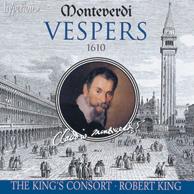
The King’s Consort & Choir. Director: Robert King.
Two compact CDs TT 136:05
HYPERION CDA67531/2.
Here we are presented with another superb recording from the team that is Hyperion and Robert King. The fine musicality that comes from The King’s Consort is to be admired especially the contrapuntal flair. King’s choir and orchestra produces quality performances ensuring that this is not just another recording. The articulation and ensemble are first-rate as is the spatial acoustic. It’s fresh interpretation and commitment ensures that this will remain in the catalogue for many years to come. The impressive group of soloists have been well-chosen each bringing vitality to their roles, in particular Carolyn Sampson and James Gilchrist. What marks this particular recording out from manyothers is that the Vespers are complete on one disc, with the Magnificat and Missa on another. This is a magnificent recording and don’t take my word for it – the recording has won many top critic awards and justly deserved too.
Patrick Mayhew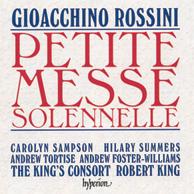
The King’s Consort.
Director: Robert King.
Pianos: Gary Cooper, Matthe Halls 19th-century. Harmonium: Mark Williams.
HYPERION CDA67570 TT 79:39
‘Dear God, here it is, finished, this poor little mass. Is it sacred music that I have written or damned music? I was born for opera buffa, as you know well! Little technique, a little heart, that’s all. Be blessed then and grant me paradise.’ So wrote Rossini in 1863 about this work. Who better than Robert King and his Consort to record this work? In fact King’s intention in the recording was to represent that of a substantial but generously furnished aristocratic Parisian salon of the period, spacious enough to house 12 singers, three keyboards and a small audience. King succeeds in capturing the spirit of the work with some wonderful soloists not. The speeds of the various movements create the excitement of the piece and the pianists’ contribution add to the performance. It is one of those works that if you have not heard you should put right immediately and this disc is one of the best on the market.
Daniel ReedMusic from Eton. Chamber Orchestra, Brass Ensemble; School Concert Choir and Orchestra,Eton College Chapel Choir.

Director: Ralph Allwood.
Melville Smith Brass Fanfare; Boyle Thou, O God, art praised in Sion; Parry Ye boundless realms of joy (organ); My soul there is a country; Jerusalem; Arne Organ Concerto No 5; Duruflé Scherzo; Scarlatti Baroque Sonata (for brass); Nesbett Magnificat; Vaughan Williams Fantasia on a them by Thomas Tallis; Barnby Carmen Etonese; Drummond Eton Boating Song; Grier God who mad the earth and sky.
HERALD HAVP320 TT 69:84.
A fascinating musical compilation mostly of composers associated with Eton College that represents the considerable talents of the Chapel Choir, Brass ensemble, Chamber Orchestra and School Concert Choir and Orchestra. It is always good to hear Thou, O God, art praised in Sion and the Eton boys bring a lustre to their singing in the familiar central section. John Nesbitt’s Magnificat demonstrates the choir’s impressive unaccompanied singing in this lengthy and demanding polyphonic setting. From the sublime to the (well, different) is a distinguished account of the Tallis Fantasia and, as if to remind us that were are listening to a school CD, a rousing rendition of two Eton songs. The other items make interesting listening - especially if you’re an old boy, in which case you would be immensely proud of the achievements recorded here.
David TrusloveAcademy of Ancient Music. Choir of New College, Oxford.
Director: Edward Higginbottom. Trebles: Henry Jenkinson, Otta Jones, Robert Brooks.
Countertenor: Iestyn Davies. Tenor: Toby Spence. Bass: Eamonn Dougan. NAXOS 8.570131-32 TT 2:22:19
This is one of the best recordings I have of Messiah. This particular CD had the added bonus that the treble solos are shared between three of the boys: Henry Jenkinson, Otta Jones and Robert Brooks. New College continues to produce superlative recordings. Musicality oozes from each of the individual movements and Higginbottom’s reading is one to show how articulate his choir is. The precision of the choir and the orchestra, in this case, the Academy of Ancient Music, provide us with exciting and accurate playing. Henry Jenkinson’s singing of I know that my redeemer is just sublime. The back row are on top[ form as well and the three male soloists add a dynamism to a recording that will surely become a hit. Warmly recommended.

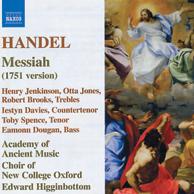 Cathryn Fogg
Cathryn Fogg
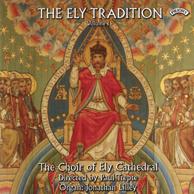
The Choir of Ely Cathedral
Director: Paul Trepte.
Organ: Joanthan Liley.
Blow Salvator mundi; Mendelssohn Hear my prayer; O for the wings of a dove; Dering O bone Jesu; Handel Wash me thoroughly; Cornyshe Woefully arrayd; Heath When Israel; Draghi This is the day; Stanford Ye choirs of new Jerusalem. Interspersed with plainsong.
PRIORY
The Ely Tradition owes much to the distinctive musical and liturgical preferences of Patrick Hankey (Dean 1951-69) and his organists Michael Howard and Arthur Wills, most evident in the daily singing of an Office Hymn to its proper plainchant melody and in the inclusion of an exceptional quantity of ‘early music’ in the choir’s repertory, with some notable ‘Ely specials’ such as Woefully arrayed by William Cornysh (14651523). This is one of the highlights of the disc under review, along with a highly interesting anthem for men’s voices by Giovanni Draghi, edited from an Ely manuscript, a splendid verse anthem for Easter by John Heath (15891668) and a setting by Handel of Wash me thoroughly (sic) about which we could well have been told a little more. The choral works are framed by a selection of Ely-style Office Hymns in a sequence from Ash Wednesday to Easter, a good idea in theory but a little wearisome in practice when (a) consecutive texts are set to the same tune and (b) when the singing is, frankly, not terribly good, with much highly dubious intonation form the boys and some stylistic quirks of the kind which can so easily creep almost unnoticed into daily performance. As to Mendelssohn’s Hear my prayer, very oddly cut in two by a plainsong hymn, one can only begin to imagine what Dean Hankey and Organist Howard would have to say. Clearly the Ely tradition has moved on somewhat! An interesting disc, full of character, and perhaps worth buying for the handful of ‘Ely specials’ it contains.
Timothy Storey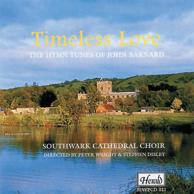
Director: Paul Simms.
Organ: Stephen Dagg.
A live recording featuring: Little Kyrie; Stiggio Ecce Beatam Lucem; Tallis Spem in Alium; Hanson And there shall be no night there; Cooke Deus, Deus Meus.
DILUTE DIL 06001 TT 51:51
This is a live recording of a public concert, applause and coughing included, which I confess to having approached with mild interest but no great expectations; after all, I myself had taken part in one of the many productions of the forty-part motet Spem in alium during the Year of Thomas Tallis (2005) and am fully aware of how difficult it is for anyone except the very best professional singers. How intrepid, even foolish, for the Tallis Society to have three other forty-part motets in the programme, plus a Kyrie
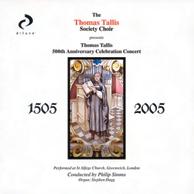
in a mere twenty-one parts as a makeweight! I need not have worried, as the singing is of the highest quality with scarcely an anxious moment, and all the music is of great interest. Ecce beatam lucem by Alessandro Striggio (1535-92) is always quoted as the ‘other’ (even ‘only other’) motet in forty parts, and it duly appears in this programme together with And there shall be no night there (eight five-part choirs plus brass quintet) by Robert Hanson, b. 1948, Director of Music at Morley College, and Deus, Deus meus by Mervyn Cooke, b. 1963, Professor of Music at Nottingham University. The twenty-one part Kyrie is by the Jonathan Little, who trained in Australia and is now Principal of the Academy of Contemporary Music in Guildford. Deus, Deus meus is surely the best of these, with a contrapuntal finale that brings the concert to a close amid great excitement. Definitely worth buying, if you can find it.
Timothy StoreyThe choir of St George’s Chapel, Windsor Castle. Director: Timothy Byram-Wigfield.
Organ: Roger Judd.
O hearken thou; Strengthen ye the weak hands; Faire is the heav’n; Love of love; King of glory; Praise the Lord; The night is come; The Shepherd-men; O joyful light; From a heart made whole; I said to the man; Bring us O Lord.
NAXOS 8570148 TT 65:45
Any recording by this distinguished choir is always to be welcomed, and this is a disc of unusual interest, introducing us to music we may have heard of but have certainly never heard. It contains, inevitably, Bring us, O Lord God and Faire is the heaven, justly celebrated and frequently recorded: Strengthen ye the weak hands and O what their joy and their glory must be (the latter not on the disc under review) were included in John Scott’s English Anthem series (Hyperion); but few of us, I suspect, have heard or sung Love of love or From a heart made whole, or such extended essays as Praise the Lord and The night is come. It is quite a revelation to discover what a great variety of musical language Harris could employ to suit his texts, even assuming a quasi-Russian style for the very beautiful evening hymn O joyful light. As Organist of St George’s Chapel (193361) he insisted that the singing be restrained and impersonal, so he might find the current Windsor choir somewhat over-exuberant, especially the boy who seems to have operatic ambitions; but do not let that put you off buying this fascinating CD, which of course comes at the usual Naxos bargain price.
Timothy StoreyThe hymn tunes of John Barnard.
Southwark Cathedral Choir.
Directors: Peter Wright and Stephen Disley. Organ Scholar: David Pipe.
HERALD HAVPCD 321 TT 68:17
Most if not all readers will be familiar with Guiting Power, named after a village near Cheltenham and indelibly associated with Michael Saward’s hymn Christ Triumphant. This and twenty-three other tunes by John Barnard are sung by Southwark’s boy and girl choristers (both separately and together) with fourteen professional and volunteer lay clerks, and the singing is generally attractive and sometimes thrilling, though one becomes a little weary of the boys’ tendency to flatness. A seventy-minute programme of a single composer’s hymn tunes is a challenge to performer and listener alike, though no criticism of Mr Barnard is implied, as even Dykes or Stainer might not emerge with any great credit from such an
ordeal. One could single out Great Cheverell, a rather jolly Handelian pastiche to I’ll praise the Lord for ever and ever (words by Paul Wigmore); Eythorne (The stars declare his glory) has unfortunately lingered in your reviewer’s memory for its striking resemblance to the Flintstones’ signature tune. The liner notes tell us all that we can reasonably wish to know about the music, but say nothing about the composer, who was born in 1948, has taught (German) at John Lyon School, Harrow, and elsewhere, and is organist at John Keble Church, Mill Hill. He has contributed to several hymn-books including Hymns for Today’s Church
Timothy StoreySamuel Sebastian Wesley
Choir of Clare College, Cambridge.
Director: Christopher Robinson.
Organ: James McVinnie.
Ascribe unto the Lord; O give thanks unto the Lord; Thou wilt keep him; Wash me thoroughly; O God, whose nature; Let is lift up our heart; Blessed be the God and Father; cast me not away; The Wilderness.
NAXOS 8.570318 TT 75:14
This enjoyable recital has at least two interesting features. Firstly, two less well-known items are included. Secondly, the treble line is female (and adults rather than girls) as is the vast majority of the alto line. O Give thanks unto the Lord is, I suspect, known mainly for the lovely section ‘Who can express the noble acts of the Lord?’ – sometimes performed by itself. The anthem comes from Wesley’s time at Hereford and the section instanced above is a more developed example of the treble solo/duet Love one another’ (from another Hereford anthem Blessed be the God and Father). The shorter O God whose nature and property is almost like a Victorian part-song (though in its original working of 1820, also at Hereford, is not quite Victorian, being reworked in Wesley’s Gloucester days) and I suspect this may be its first appearance on CD. At the other end of the scale is the mini-cantata Let us Lift up Our Heart, which was written in Wesley’s Winchester period, and in its orchestral scoring by Elgar was performed for the first time at the Worcester Festival of 1923. The fine baritone solo is here performed admirably by George Humphreys, about whom I can glean nothing from the programme note except that he does not appear to be a member of the choir. Again, I don’t know of another recording on CD. The choir is directed by Christopher Robinson and the performances are, as you would expect, sensitive and imaginative. Diction is a strong point, even in the last section of The Wilderness which is all too often performed con belto. The presence of an adult female line does, I suspect, contribute to the maturity of interpretation in the singing though there is inevitably a little more vibrato than might be expected from younger singers. If you don’t think you like your Wesley with female voices, all I will say is ‘take care’ because Wesley himself did approve of female voices. Still, a contralto soloist in The Wilderness was initially a surprise. The disc was recorded in St Michael’s Tenbury, so benefiting from the Willis organ, and was produced by John Rutter. There are excellent notes by Nicholas Temperley (some of which are also in German). At the normal Naxos price of £5.99 this is an outstanding bargain The Wesley bi-centenary occurs in 2010. I hope choirs and recording companies will take account of this? What about a recording of some of the orchestrated pieces, along the lines of the wonderful concert in Winchester in 1976?
Richard OsmondThe Choir of Westminster Abbey.
Director: James O’Donnell.
Organ: Robert Quinney.
Great is the Lord; They are at rest; Queen Alexandra Memorial Ode; Ave Maria; the Spirit of the Lord; te Deum & Benedictus; O salutaris hostia; Ave Verum; Ecce sacerdos magnus; O hearken Thou; Give unto the Lord.
HYPERION CDA67593 TT 72:11
Here we have most of Elgar’s major church music compositions on one compact disc sung by possibly our most famous ‘cathedral’ choir coming only three years after a Naxos disc from St John’s College, Cambridge (still available), and nine works appear on both discs. They are at rest,
Queen Alexandra Memorial Ode and Ecce Sacerdos do not feature on the St John’s disc, which includes instead Ave Maris Stella , Go song of mine and extracts from The Light of Life . Any readers who need to decide which recording is “best” should buy them both so that they can make up their own mind. It is widely known that Elgar’s one and only church appointment was in Worcester at St George’s Catholic Church where he eventually took over as organist from his father having been involved with the music at the church from his youth up. It is from this period that most of the short works on this disc, including the ever-popular Ave Verum , originally date. These works are all for use in the Roman Catholic liturgy and were not published until 1902. After a short and unsuccessful period in London, Elgar moved to Malvern and gradually became better known. In 1897 he was commissioned to write the Te Deum and Benedictus for the opening service of that year’s Three Choirs Festivals, marking the start of his small oeuvre of music for the Anglican Church. The Spirit of the Lord forms the prologue to Elgar’s oratorio The Apostles and dates from 1903. It was first published separately as an anthem in 1907 and is probably sung more widely today than any of the longer works on the disc. The remaining works were conceived as anthems for Anglican services. O hearken thou being composed to be sung during that part of the Coronation of George V in 1911 when the King made his communion and Give unto the Lord also being a commission, this time for the 1914 Festival of the Sons of the Clergy. The Queen Alexandra Memorial Ode (with words by John Masefield) deserves mention, as it was written for the unveiling of a memorial outside Marlborough House in 1932, when it was accompanied by a military band. After that the work vanished with just the short score remaining in the Royal Library. The performance on the disc is a reconstruction by Jonathan Wix with an organ accompaniment by Robert Quinney. Every work on the disc receives a convincing performance. James O’Donnell has obviously chosen the tempi carefully, allowing the music enough space to breathe in the Abbey’s generous acoustic whilst managing to avoid any sense of dragging. The choir sings well throughout and almost without fail produces a well-blended sound. Robert Quinney’s accompaniments are colourful and exciting, no doubt aided by the fact that (if the photographs in the booklet are to be believed) the recording was made with the choir in the crossing, which is, of course, some distance from the organ (and the console). Highly recommended.
Tim RogersonStanford A song of peace; Lole Ubi Caritas; The Father's Love; Fauré Messe Basse 4 Movements; Macpherson Andante in G; Warlock Balulalow; Lloyd What Songs are these?; Wesley Who can express the noble acts of the Lord?; Mendelssohn I waited for the Lord; Ireland Ex ore innocentium; Parry Chorale Prelude on 'Eventide'; Robinson Magnificat and Nunc Dimitits in C; Elgar Ave Verum; Hurford Litany to the Holy Spirit; Boyle Praise and Glory.
The choristers of Jesus College, Cambridge. Director: Daniel Hyde.
Organ Scholars: David Humphreys, Samuel Hanson.
PRIORY PRCD 882 TT 58:45
The music on this recording is representative of the repertoire I sang as a cathedral chorister in the late 1980s, so it is good to hear some works I haven't heard since then. Daniel Hyde is clearly an enthusiastic choir director, and has a number of good solo voices represented on this disk in the Fauré, Elgar, Hurford, Ireland, Mendelssohn and Warlock. The chapel's vibrant acoustic gives the sound a warm bloom. The Song of Peace, Praise and Glory, Robinson in C and the Messe Basse particular stand out as fine interpretations. That Jesus College does not have a resident choir school like some other Oxbridge colleges is even more reason to highlight the quality of this disc. The Lloyd and Boyle are new to me, and are both fresh, tuneful compositions worthy of inclusion alongside the other works. Save for a few moments when the organ's upperwork dominates, or where the boys' sound isn't quite as well blended as it could be, the general quality is of a high standard. All involved in the hard work putting together this disc should be justly proud of their achievements.
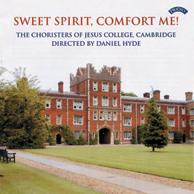

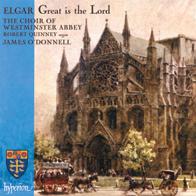 Stephen Power
Stephen Power

Brahms Academic Festival Overture;Variations ona theme by Haydn;Wir Wandelten; Adagio from Violin Sonata No 3; Wagner Siegfried-Idyll;Prelude ot Act 1, Die Meistersinger; Dupré Prelude and Fugue in B major; F minor; G Minor; Variations sur un Noël; Evocation; Cortège et Litanie. 2 CD set
SIGNUM CLASSICS SIGCD089 TT CD1 74:30 CD2 70:38
It’s exciting news that Signum Classics has begun to record organ music. First we had the Vierne Symphonies from Jeremy Filsell. On this new release Royal College of Organists ‘Performer of the Year’ 2002, Robert Quinney produces a superb recital. He enjoys a growing reputation as a dynamic performer, whose repertoire stretches from the sixteenth century to the present day. He is currently Sub-Organist of Westminster Abbey. Quinney knows this organ well as he served as Asistant Organist at Westminster Cathedral foro four years. He is a consummate and stylish performer and skilfully tackles the four-manual Willis III organ in repertoire that shows the kaleidoscsopic range of the organ to good effect. His playing and technique, especially his brilliant pedalwork, is flawless and his familiarity with the organ enables Quinney to register the repertoire on this CD with expertise achieving delightful sounds ranging form the sonorous softer movements to the thrilling grand organ. Quite simply fantastic playing, terrific recording quality and without doubt highly recommended.
Andrew PalmerDupré Placare Christe servulis; Busoni Praeludium; Doppelfuge zum Choral; Franck Pièce Héroïque; Liszt Consolation No 3;Tu es Petrus – Hymne du Pape; Homilius Prelude in G; Lemare Andanrino in D flat; Rachmaninoff Barcarolle; Howells Master Tallis’ testament; Howard Preghiera – Præludium for organ; Reger Introduction and Passacaglia.
RAVEN OAR-880 TT 67:45
Available from Raven www.RavenCD.com for $14.98.
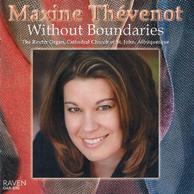
Mulet Carillon Sortie; Grainger (arr. Quinn) Early One Morning; Quinn Continuum; Cabena Sonata Giojoso; Mendelssohn Sonata V Op 65; Bach Prelude and Fugue in G major BWV 541; Togni Five Liturgical Inventions for Organ; Hampton At the Ballet; Robinson Hommage à Messiaen; Dupre Cortége et Litanie Op 19.
RAVEN OAR-890 TT 73:39
Two recordings from the same Cathedral. Iain Quinn has been organist at Albuquerque since 2005, having moved to America in 1994 after studying at the Welsh College of Music and Drama and previously singing as a chorister at Llandaff Cathedral. Maxine Thévonet has been Associate Organist-Choir Director at Albuquerque since 2005 having grown up in Canada. The organ was built in 2002 using part of an instrument dating from 1950. Both recordings feature a number of first recordings as well as several well-known works. One particularly welcome ‘find’ on Iain Quinn’s recording is the

OUR RECENT WORK HAS INCLUDED;
LICHFIELD CATHEDRAL
Reconstruction of Hill organ with 13-stop nave division
ST DAVIDS CATHEDRAL
New organ of 54 stops based on Father Willis pipework
RIPON CATHEDRAL new mobile nave console
ELY CATHEDRAL
Restoration of H&H organ, with eight new stops
EXETER CATHEDRAL
Minstrel Organ of 8 stops and new 32ft reed
PETERBOROUGH CATHEDRAL
Restoration of Hill organ following the fire
FUTURE WORK WILL INCLUDE;
ST ALBANS CATHEDRAL,2007-9

Restoration of H&H organ and addition of 32ft reed
PAISLEY ABBEY,2008-9
Overhaul of Walker organ and redesign of wind system
ST EDMUNDSBURY CATHEDRAL 2009-10
New 4-manual organ, with pipework from present organ
ST JOHN’S ROAD, MEADOWFIELD, DURHAM DH7 8YH Telephone 0191 378 2222 Fax 0191 378 3388
e-mail h.h@btinternet.com www.harrison-organs.co.uk
Busoni Preludeand Fugue. Although the two sections were not composed together they work well as a single piece. The prelude is rather gentle with an ostinato bass, whilst the dignified fugue builds to a satisfying conclusion. Quinn also gives a monumentally magisterial performance of Reger’s Introduction and Passacaglia, which enables the listener to hear all of the manifold details in this powerful work. Unfortunately, Franck’s Pièce Héroïque receives a rather hurried treatment, whilst contrarily Master Tallis’ Testament is played considerably slowly than Howell’s metronome marking with the section marked a tempo con anima being barely quicker than the opening Quasi lento and still slower than the opening metronome mark. Tempi are more mainstream on Maxine Thévenot’s disc. The Carillon Sortie by Mulet setting a cheerful note for the whole disc, which is continued by Bach’s G major Prelude and Fugue. Iain Quinn’s arrangement of Early One Morning explores some of the organ’s softer and pleasing registers. The five Togni Inventions are all in different styles, mirroring the mood of the plainsong upon which they are based and plainsong again features in the Dupré piece, which brings the disc to a fine conclusion.
Tim Rogerson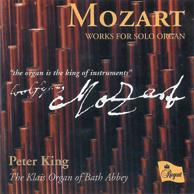
Peter King plays the Klais
Organ of Bath Abbey.
Fantasia in F min; Adagio in C; Adagio and Allegro in F min and maj; Sonata in D for piano duet; Adagio in B minor; Adagio and Rondo in C min and maj; Strahower Improvisation; Gigue in G; Andante in F; Adagio and Fugue in C min.
REGENT REGCD244 TT 79:06
The reviewer can probably type without fear of contradiction that Mozart wrote not more than one piece of music for the organ. We are told (in David Gammie’s informative programme notes) that the organ was his favourite instrument and that he usually improvised whenever he played at an organ. This disc contains the three famous pieces for ‘clock organ’ (a mechanical

instrument containing organ pipes), two works composed for the glassharmonica (instruments which use glass containers filled with water to produce sounds!), two works for piano duet, one work for piano, a work based on a report of an improvisation by Mozart and (finally) the one piece that Mozart seems to have written down to be played on an organ. The organ in Bath Abbey was built in 1997 by the German firm of Klais, but it incorporates some pipework from previous instruments by British builders. Peter King uses the programme to give the listener a tour of the organ’s varied tonal resources. I especially enjoyed the shimmering strings in the outer movements of the Fantasia in F minor and major, which gave way to a delightfully bright chorus for the middle section. Indeed, every piece seems to present new and often unexpected combinations of sounds, all of which suit the music in a very satisfying way. The final work on the disc, the Fugue in C minor, also deserves a special mention, as towards the end it seems that are more than two hands (and two feet) at the organ, as Mozart’s relentless and intricate counterpoint builds to its imposing conclusion. The programme notes also tell us that ‘Peter King’s choice of music … gives … a programme of absorbing musical interest, which explores almost every aspect of Mozart’s multifaceted musical personality’. To that I should like to add that the technically secure and exciting way in which the music is performed and makes for an extremely disc, which I am pleased to recommend to readers.
Tim RogersonMarcus Torén plays the Van den Heuvel Organ of the Katrarina Church, Stockholm.
Campra Rigaudon (from Idoménée); Von Koch Cantilena Vivo; Langlais Movements from Hommage à Frescobaldi; Rosenberg Fantasia e Fuga C; Bach Arioso (Cantata No 156); Nun danket alle Gott; Grunenwald Hommage à Josquin-des-Près; Fryklöf Symfoniskt stycke; Falcinelli Variations-Études sur une berceuse; Eben Finale (Sonntagsmusik).
PRIORY PRCD 852 TT 77:58
This latest CD in Priory’s Great European Organs series features the splendid 3-manual, 62 stop Van den Heuvel of the Katarina Church, Stockholm in a varied programme splendidly played by Marcus Torén. Appropriately, Swedish composers are well represented: Hilding Rosenberg (1892 – 1985) by his neo-Bachian Fantasia and Fugue in C; Harald Fryklöf (1882 – 1919) by his masterpiece Symfoniskt stycke (under the influence of his contemporary, Reger), and Erland von Koch by two pieces using elements of Swedish folk music. Organist and instrument are as one in the delightful variations by Falcinelli and the Eben Finale provides a stunning end to the programme. The recording is a model of clarity and the playing assured and masterly throughout. (Even the overblown vulgarity of the Virgil Fox Bach arrangements are raised to the level of artistic excellence!)
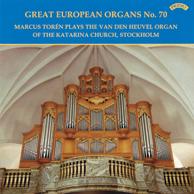
David Herman plays the Jefferson Organ Dobson Op 74 at the University of Delaware. Recorded and Produced by Andreas K Meyer. (www.meyer-media.com)
De Grigny Veni Creator Spiritus; Couperin Chacone; Pachelbel Ciacona in F minor; Bach Komm, Gott, Schöpfer, Heiliger Geist, BWV 631; Komm, Gott, Schöpfer, Heiliger Geist, BWV 667; Meine Seele erhebet den Herrn; Mendelssohn Sonata No 3; Sousa The Washington Post March; Walton Spitfire Prelude; Tallis Hymn:Veni redemptor; Howells; Master Tallis’s Testament; Dubois Cantilène Religieuse; Toccata in G. UDCD 0601 TT 57:58
Some will find the opening block of seven baroque tracks a little heavygoing, they might have worked better more evenly spread out. There is ample opportunity to show off what is quite a colourful organ by Dobson, although full-on it can come across as vaguely tinny (e.g. the last chord of the Walton). From Mendelssohn onwards the mood is mainly lighter. Sousa’s Washington Post March is always good fun and Dubois’ Cantilène Religieuse is an attractive little number, but fussy registration changes in Master Tallis’s Testament hinder any sense of flow, and the playing does betray the odd fluffed note (e.g. track 5). Nonetheless an interesting disc.
Martin WolfPatrick Wedd plays the Casavant Organ of the Église Saint-Jean Baptiste, Montréal, Canada.
Organ works: Prelude & Fugue in C minor; Chorale Prelude on a Melody by Orlando Gibbons; Introduction, Passacaglia and Fugue; Aria from a Fugal Trilogy; Five Preludes on Plainchant Melodies; Passacaglia and Fugue No 2 in E minor; Prelude on Aberystwyth; Epilogue. NAXOS 8.557375 TT 77:39.
There is a substantial misprint on the front of this Naxos recording! Apparently Willan wrote an ‘Introduction, Prelude and Fugue’, and a ‘Prelude and Fugue no.2’ … In both cases “prelude” should of course read ‘passacaglia’. Oops! Patrick Wedd plays in a rather routine, matter of fact manner for much of the time, only really grabbing the ears with some exciting playing in the bigger moments. According to the liner notes Willan was fond of using the tremulants a lot, but at times Wedd’s registration is really not to my taste. The mysterious opening chords of Introduction, Passacaglia and Fugue are marred by a rather odeonesque use of the (otherwise quite fine) organ. It is good to hear more of Willan than his famous masterpiece – not the greatest music ever, perhaps, but plenty if interest nonetheless.
Tom Bell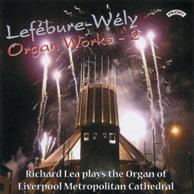

Richard Lea plays the organ of Liverpool Metropolitan Cathedral.
Offertoire in C; Pastorale in C; Procession Adoro Te; Marche in E flat; Morceau in F; Sortie in G minor; sortie in B flat; Prelude in D; Verset in A; Elevation or Communion in E; Offertoire in C. PRIORY PRCD 785 TT 64:57
Many readers will have heard, at one time or another, the famous ‘LeftFoot-Welly in E flat’ by Sortie! ‘You know, the one that sounds like a fair ground organ’. That he was one of the most well-known composers of organ music of his time (born 190 years ago incidentally) shows the general lack of musical taste at the time. I have never heard it played on a fair ground organ, and it may surprise some readers that most of the music, certainly on this CD, was written for liturgical use rather than the concert hall. This volume of Richard Lea’s exploration through the trite that is Lefebure-Wely’s L’organist Moderne includes two sorties; the better known one in B flat (marginally more interesting than the one referred to above in E flat) and the one in G minor. In his defence, there is no doubt that Lefebure-Wely was a highly talented tunesmith, and the tension he builds up over a dominant pedal should be the envy of many a composer. Richard Lea gives a suitably colourful, technical and musical performance, (there are some ravishingly beautiful moments too in the Prelude in D and Elevation in E,) which makes this a welcome addition to a growing CD collection. Perhaps, on the back of this collection, Richard Lea may be approached to record something of slightly more meaty substance on the wonderful Walker.
Stephen Power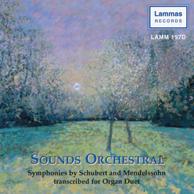
Symphonies by Schubert and Mendelssohn transcribed for organ duet by David Gibbs and played by Greg Morris and David Gibbs on the organ of Blackburn Cathedral.
Schubert Symphony 5; Mendelssohn Symphony 4.
LAMMAS LAMM 197D TT 62:37
This is a very well recorded disc. The transcription is clear, making the two works sound as though they were conceived for the organ. The orchestral colouring is ever present, using the new solo organ to good effect, as well as the plethora of flutes and other imitative stops to great effect. The playing is of the highest order. Just occasionally, such as at the very beginning of the Schubert, the pedals are a bit on the heavy, but always clear. Lance Andrews's series of 'Sounds ..' recordings is a really good thing. Highly recommended.
Stephen Power
Adrian Partington plays the organ of Clifton College, Bristol.
In Exitu Israel; Voluntary in D flat; Processional; three Short Pieces; Toccata; Lullaby; Three Preludes on Anglican Chants; Prelude, Larghetto and Finale.
PRIORY PRCD 781 TT 67:31
Adrian Partington and Priory Records return to Bristol to record the final volume in the Organ Works of Basil Harwood series, not to the cathedral where their exploration began, but instead to the Harrison organ in the chapel at Clifton College. It has everything one needs to interpret this fine composer's organ works, especially the big solo reed, and the softer foundation and imitative stops. The music leaps out off the page in Partington's lively interpretation, even in the softer pieces. Every nuance is enhanced by Partington's ability to show the listener where they are. For those who thought they heard a larigot stop in the Second Prelude on Anglican Chants, the specification listed has been superseded. Let's hope this organ gets used more in recordings in the future.
 Stephen Power
Stephen Power
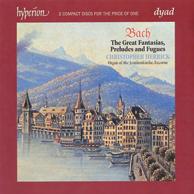
Lucerne, Switzerland.
CD1
Fantasia & Fugue in G minor; Fantasia in C minor; Prelude & Fugue in A min; D maj; B minor; G major and E flat major (‘St Anne’).
TT 74:59
CD 2
Prelude & Fugue in C minor; Fantasia in G; Prelude & Fugue in Emin; S maj; F min; C min; A maj; C maj. TT 75:98
HYPERION CDD22062 TT 150:03
Here we have a superb two-for the-price CDs as a reissue from Herrick’s wonderful complete Bach organ music series. Herrick’s masterly performances and interpretations make these CDs a must and as a bonus the acoustic of the Jesuit Church is magical. His knowledge of the organ and his choice of colour from registrations just adds to many reasons why this should be in your collection. Some of Bach’s well-known pieces, the fine Metzler organ, great articulation are a few other reasons.
Patrick Mayhew.
Widor Allegro Vivace (Symphony V); Parry Choral Fantasia 'When I survey the wondrous cross'; Dupré Variations sur un Noël; Stanford Fantasia & Toccata; Saint-Saëns Bénédiction Nuptiale; Gowers Toccata.
PRIORY PRCD 6007 TT 54:00
The booklet which accompanied this recording has been well compiled, with information about the Michael Woodward series, the organ, and the Berkshire Organists' Association's fight to save the organ. This recording from 1981 demonstrates what a worthy cause it is. Ennis has flair for this complex music, and shows off every colour on the organ to great effect.
Stephen PowerChristopher Herrick plays the Organ of the Jesuitenkirche,
•wide range of graded exams, leisure play levels, performance and teaching diplomas •graded
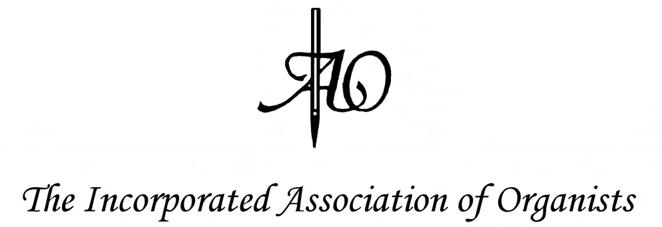



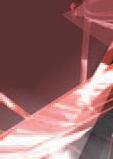


Wednesday 27 June 7.30pm
Southwark Cathedral, London Bridge,SE1
Daniel Roth organ
The Great Organists of Saint-Sulpice Music by Widor,Lefébure-Wely, Roth and more
Southwark Cathedral
Tube London Bridge or Monument I Tickets £8 unreserved
Tuesday 3 July 8.00pm
St Paul’s Cathedral,EC4
Soweto Gospel Choir
Amazing Grace:the joy
harmony and freedom of Gospel
Tube St.Paul’s I Tickets £10 – £30
Thursday 12 July 8.00pm
St Paul’s Cathedral,EC4

St.Paul’s Cathedral
London Symphony Orchestra & Chorus
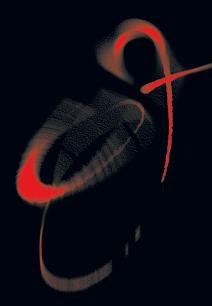
Andrew Kennedy tenor
Yan Pascal Tortelier conductor
Berlioz Grande Messe des Morts
Tube St.Paul’s I Tickets £5 - £45
Tickets for this concert on sale from 10 January 2007
To book tickets visit www.colf.org or call the Barbican box office on 0845 120 7502

Thomas Trotter plays the complete published works of Elgar for solo organ, together with transcriptions of three famous orchestral pieces, on the historic Father Willis Organ of Salisbury Cathedral. This recording celebrates the 150th anniversary of the birth of Sir Edward Elgar, one of Britain’s best loved composers, with performances by one of Britain’s most widely admired musicians.
Sonata for Organ in G major, Op 28, Cantique, Op 3, No 1, Vesper Voluntaries, Op 14, Organ Sonata No 2, Op 87a, Chanson de Matin (trans. A Herbert Brewer), Nimrod (from Enigma Variations, Op 36) (trans. W H Harris), Pomp and Circumstance No 4 in G, Op 39 (trans. G R Sinclair)

REGCD256
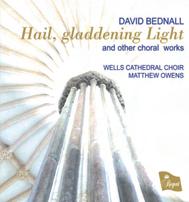
Wells Cathedral Choir, Matthew Owens
David Bednall is an exciting new composer on the English Choral music scene. This CD is a collection of his approachable and spectacular choral works performed by one of England’s finest Cathedral choirs
Gramophone Editor’s Choice May 2007
“The Wells Cathedral Choir are in world class form here.” “This is immensely inspired writing.... magnificently captured in this superlative recording.”
"it is music in a perpetual state of climax...the overall choral sound is wonderfully blended and must rank as one of the top cathedral sounds outside London" BBC Music Magazine March 2007 " The singing of Wells Cathedral Choir - its fine eighteen-voice girl choristers on the top line - is immaculate and MatthewOwens,forwhomseveral of the workswere written, directs with flair and obvious enthusiasm for Bednall's music." The Organ February 2007
Easter Alleluia, The Wells Service (Te Deum and Jubilate), Lux et Origo (Mass for Douai Abbey), The Wells Service (Benedicite & Benedictus), Hail, gladdening Light, Adagio for Organ, The Gloucester Service (Magnificat & Nunc Dimittis)

REGCD247
Pader an Arleth (Our Father in Heaven)
The Choir of Truro Cathedral, Robert Sharpe, Director Truro Cathedral, with its unique musical tradition and radiant acoustic, has inspired many composers to write outstanding works for its Choir. This disc features a selection of these works by composers directly associated with Truro and offers a very special collection of beautiful and inspiring music including eight first recordings.
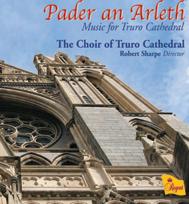
REGCD249
Retail distribution byRSK Entertainment Ltd, Tel: 01488 608900, info@rskentertainment.co.uk
